

CO-EDITORS-IN-CHIEF
Nellie Andreeva (Television)
Mike Fleming Jr. (Film)
PRINT EDITORIAL
EXECUTIVE AWARDS EDITOR Joe Utichi
DESIGN DIRECTOR Fah Sakharet
SENIOR AWARDS EDITOR Antonia Blyth
FILM EDITOR Damon Wise
DOCUMENTARY EDITOR Matthew Carey
CRAFTS EDITOR Ryan Fleming
PRODUCTION EDITOR David Morgan
AWARDS WRITER Destiny Jackson
DEADLINE.COM EDITORIAL
AWARDS COLUMNIST & CHIEF FILM CRITIC Pete Hammond
COLUMNIST & INTERNATIONAL EDITOR-AT-LARGE Baz Bamigboye
EXECUTIVE MANAGING EDITOR Patrick Hipes
EDITORIAL DIRECTOR & BOX OFFICE EDITOR Anthony D’Alessandro
EXECUTIVE EDITOR, TELEVISION Peter White
EXECUTIVE EDITOR, LEGAL, LABOR & POLITICS Dominic Patten
EXECUTIVE EDITOR, INTERNATIONAL & STRATEGY Andreas Wiseman
SENIOR MANAGING EDITOR Denise Petski
MANAGING EDITOR Erik Pedersen
DEPUTY MANAGING EDITOR Tom Tapp
PHOTO EDITOR Robert Lang
EDITOR-AT-LARGE Peter Bart
SENIOR VICE PRESIDENT, CONTENT, INTERNATIONAL Stewart Clarke
INTERNATIONAL FEATURES EDITOR Diana Lodderhose
EXECUTIVE EDITOR Michael Cieply
BUSINESS EDITOR Dade Hayes
CO-BUSINESS EDITOR Jill Goldsmith
POLITICAL EDITOR Ted Johnson
FILM EDITOR Justin Kroll
NEW YORK & BROADWAY EDITOR Greg Evans
ASSOCIATE EDITOR, TELEVISION Rosy Cordero
SENIOR TELEVISION WRITER Lynette Rice
TELEVISION REPORTER Katie Campione
SENIOR FILM REPORTER Matt Grobar
ASSOCIATE EDITOR & FILM WRITER Valerie Complex
INTERNATIONAL INVESTIGATIONS EDITOR Jake Kanter
INTERNATIONAL BOX OFFICE EDITOR & SENIOR CONTRIBUTOR Nancy Tartaglione
SENIOR INTERNATIONAL FILM CORRESPONDENT Melanie Goodfellow
INTERNATIONAL TELEVISION CO-EDITOR Max Goldbart
INTERNATIONAL TELEVISION CO-EDITOR Jesse Whittock
INTERNATIONAL REPORTER Zac Ntim
CONTRIBUTING EDITOR, ASIA Liz Shackleton
ASIA REPORTER Sara Merican
ASSOCIATE EDITOR Bruce Haring
NIGHT AND WEEKEND EDITOR Armando Tinoco
PRESIDENT Ellie Duque
BUSINESS LEADERSHIP
Carra Fenton SENIOR VICE PRESIDENT, ENTERTAINMENT SALES
Céline Rotterman SVP, GLOBAL BUSINESS DEVELOPMENT & STRATEGIC PARTNERSHIPS
Brianna Corrado PRESIDENT, ENTERTAINMENT SALES
Caren Gibbens VICE PRESIDENT, ENTERTAINMENT
Tracy Kain VICE PRESIDENT, SALES & EVENTS
Nadia Romdhani SALES DIRECTOR, INTERNATIONAL
Letitia Buchan SENIOR DIRECTOR SALES PLANNING & CAMPAIGN MANAGEMENT
Renee Amponin ACCOUNT MANAGER
Hugo Tepé DIGITAL SALES PLANNER
Luke Licata SENIOR DIGITAL SALES PLANNER
Daryl Jeffery SALES & MARKETING COORDINATOR
ART
Grant Dehner SENIOR DESIGNER
Paige Petersen DESIGNER
Terrence Ellsworth DESIGN PRODUCTION COORDINATOR
EVENTS AND MARKETING
Sophie Hertz DIRECTOR, EVENTS
Laureen O’Brien DIRECTOR, BRAND MARKETING
Ally Goldberg EVENTS SPECIALIST
PHOTOGRAPHY AND VIDEO
Larry Struber DIRECTOR OF PRODUCTION
Michael Buckner CHIEF PHOTOGRAPHER
David Ferino VIDEO DIRECTOR
Benjamin Bloom VIDEO PRODUCER
Jade Collins VIDEO PRODUCER
Shane Whitaker VIDEO PRODUCER
SOCIAL MEDIA
Scott Shilstone DIRECTOR, SOCIAL MEDIA
Natalie Sitek SOCIAL MEDIA MANAGER
Nada Kheir SOCIAL MEDIA COORDINATOR
PRODUCTION
Natalie Longman PRODUCTION DIRECTOR
Michael Petre DISTRIBUTION DIRECTOR
Andrea Wynnyk PRODUCTION MANAGER
ISSUE CONTRIBUTORS
Carita Rizzo, Stevie Wong
CHAIRMAN & CEO Jay Penske VICE CHAIRMAN Gerry Byrne PRESIDENT George Grobar CHIEF FINANCIAL OFFICER Sarlina See / CHIEF DIGITAL OFFICER Craig Perreault / EXECUTIVE VICE PRESIDENT, BUSINESS AFFAIRS & CHIEF LEGAL OFFICER Todd Greene / EXECUTIVE VICE PRESIDENT, OPERATIONS & FINANCE Celine Perrot-Johnson / EXECUTIVE VICE PRESIDENT, OPERATIONS & FINANCE Paul Rainey / EXECUTIVE VICE PRESIDENT, OPERATIONS & FINANCE Tom Finn / EXECUTIVE VICE PRESIDENT, PRODUCT & ENGINEERING Jenny Connelly / EVP, FINANCE Ken DelAlcazar / MANAGING DIRECTOR, INTERNATIONAL MARKETS Debashish Ghosh / EVP, GM OF STRATEGIC INDUSTRY GROUP Dan Owen SENIOR VICE PRESIDENT, REVENUE OPERATIONS Brian Levine / SENIOR VICE PRESIDENT, PUBLIC AFFAIRS & STRATEGY Brooke Jaffe / SENIOR VICE PRESIDENT, SUBSCRIPTIONS David Roberson / SENIOR VICE PRESIDENT, PARTNERSHIPS PMC LIVE Doug Bandes / SENIOR VICE PRESIDENT, GLOBAL TAX Frank McCallick / SENIOR VICE PRESIDENT, TECHNOLOGY Gabriel Koen / SENIOR VICE PRESIDENT, PROGRAMMATIC SALES Jessica Kadden / SENIOR VICE PRESIDENT, DEPUTY GENERAL COUNSEL Judith R. Margolin / SENIOR VICE PRESIDENT, HUMAN RESOURCES Lauren Utecht / SENIOR VICE PRESIDENT, BUSINESS DEVELOPMENT Marissa O’Hare / SENIOR VICE PRESIDENT, CREATIVE Nelson Anderson / SENIOR VICE PRESIDENT, PRODUCT DELIVERY Nici Catton / VICE PRESIDENT, ASSOCIATE GENERAL COUNSEL Adrian White / VICE PRESIDENT, DIGITAL MARKETING Andrew Root / VICE PRESIDENT, EXECUTIVE SEARCH & HEAD OF TALENT ACQUISITION Andy Limpus / VICE PRESIDENT, HUMAN RESOURCES Anne Doyle / VICE PRESIDENT, ASSOCIATE GENERAL COUNSEL Ashley Snyder / HEAD OF INDUSTRY, CPG AND HEALTH Brian Vrabel / VICE PRESIDENT, SEO Constance Ejuma / VICE PRESIDENT, HUMAN RESOURCES Courtney Goldstein / VICE PRESIDENT & ASSOCIATE GENERAL COUNSEL Dan Feinberg / VICE PRESIDENT, MARKETING, STRATEGIC SOLUTIONS GROUP Denise Tooman / VICE PRESIDENT, BUSINESS INTELLIGENCE Greta Shafrazian / VICE PRESIDENT, E-COMMERCE Jamie Miles / HEAD OF INDUSTRY, AGENCY DEVELOPMENT James Kiernan / HEAD OF INDUSTRY, TRAVEL Jennifer Garber / VICE PRESIDENT, ACQUISITIONS & OPERATIONS Jerry Ruiz / VICE PRESIDENT, PRODUCTION OPERATIONS Joni Antonacci / VICE PRESIDENT, FINANCE Karen Reed / VICE PRESIDENT, BUSINESS DEVELOPMENT Katrina Barlow / VICE PRESIDENT, INFORMATION TECHNOLOGY Kay Swift / VICE PRESIDENT, HUMAN RESOURCES Keir McMullen / VICE PRESIDENT, STRATEGIC PLANNING & ACQUISITIONS Mike Ye / VICE PRESIDENT, INTERNATIONAL SALES Richard Han / HEAD OF INDUSTRY, PERFORMANCE MARKETING Scott Ginsberg / VICE PRESIDENT, ASSOCIATE GENERAL COUNSEL Sonal Jain / VICE PRESIDENT, PRODUCT LICENSING Thomas Ferguson / VICE PRESIDENT, CORPORATE CONTROLLER Tom McGinnis DEADLINE HOLLYWOOD IS OWNED AND PUBLISHED BY PENSKE MEDIA CORPORATION
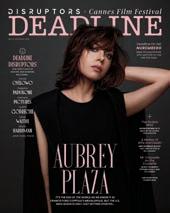
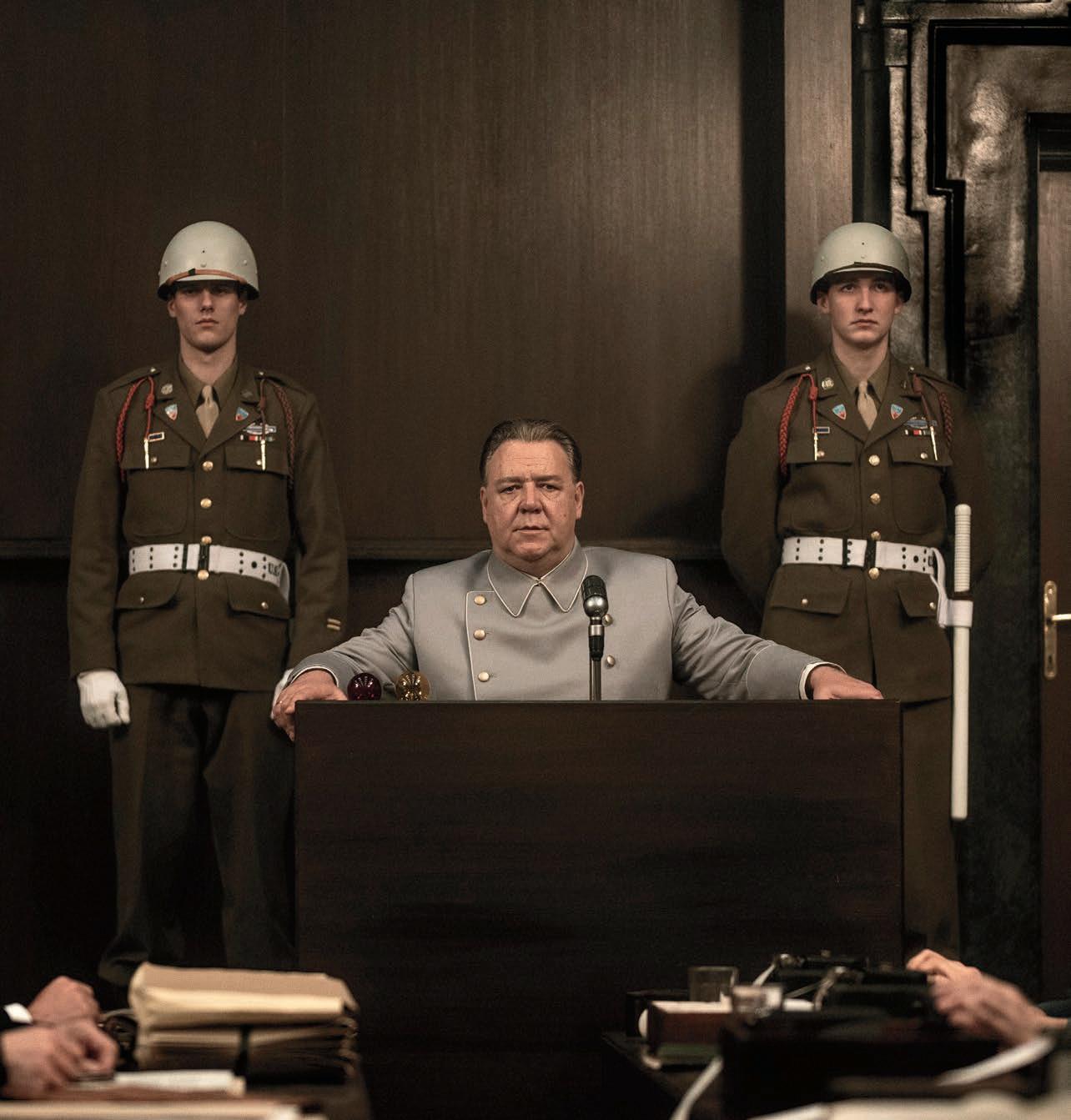
2 DEADLINE.COM/AWARDSLINE
MAY 14, 2024
CALL SHEET
ON
Cannes
2024 14
SCOTT GARFIELD
THE COVER Aubrey Plaza photographed exclusively for Deadline by Josh Telles.
Film Festival
Russell Crowe, Rami Malek, and Michael Shannon lead an all-star cast in NUREMBERG Deadline visits
the
set of the Cannes market’s hottest acquisition title.
By Joe Utichi
Shot on location at Jack Studios, New York. Stella McCartney dress, Jimmy Choo shoes, Rachel Katz earrings and rings. From Neiman Marcus Beverly Hills






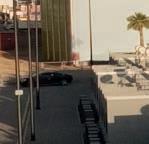
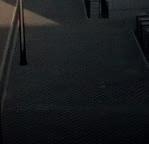


















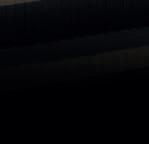














































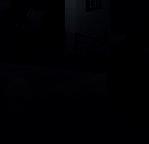















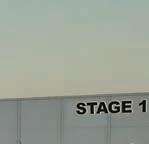







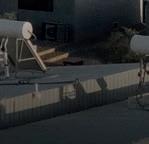







Premiere
8 ONES TO WATCH
Deadline celebrates its annual list of Cannes up-and-comers.
14 NAZIS ON TRIAL
An exclusive frst look at James Vanderbilt’s Nuremberg.
20 WAFFER-THIN MINTS
When Monty Python’s Meaning of Life came to Cannes.
26 FESTIVALS IN CRISIS
What does a changing landscape mean for flm festivals globally?
30 INDIAN SUMMER
The world’s biggest flm industry returns to the Competition after 30 years away.
Dialogue
36
42
Snapshot
128 DEADLINE STUDIO
On the scene at the Amazon Prime Experience.
Our cover star AUBREY PLAZA tangles with Adam Driver’s idealistic architect in Francis Ford Coppola’s town-planning blockbuster Megalopolis.
By Antonia Blyth

72
DAVID OYELOWO traces his journey from actor to streaming star to producer, on a mission to “normalize the marginalized”. By
Ryan Fleming
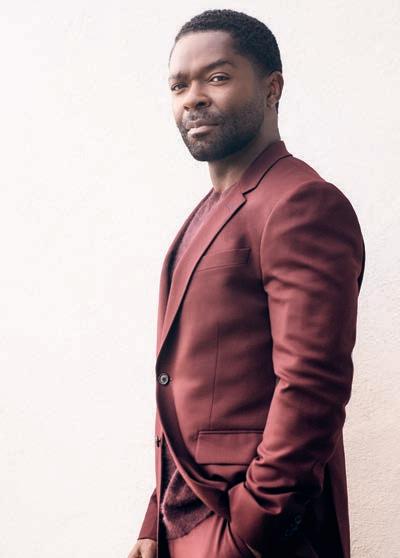
Meet MISAN HARRIMAN, the Oscar-nominated flmmaker and photographer who captured the Black Lives Matter movement. By Joe
Utichi
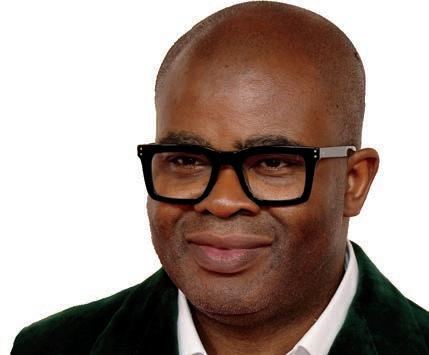
4 DEADLINE.COM/AWARDSLINE CALL SHEET 122
72 60
KEVIN COSTNER
DIANE KRUGER
UMA THURMAN
BEN WHISHAW
NOEMIE MERLANT
RENATE REINSVE
46
48
52
56
DAVID OYELOWO
NADYA TOLOKONNIKOVA
TWISTED SISTERS
AKELA COOPER 84 SUSTAINABILITY HEROES 88 PRODUCERS UNITED 90 DEEPIKA PADUKONE 92 DROPOUT 94 LEE SUNG JIN 96 TOHO GROUP 98 ELEMENT PICTURES 104 EVA LONGORIA 108 DANISH DOCS 112 LENA WAITHE & RISHI RAJANI 114 GKIDS 116 JUDITH GODRECHE 118 APPLE VISION PRO 122 MISAN HARRIMAN JOSH TELLES FOR DEADLINE/SHAYANASGHARNIA/MIKE COPPOLA/GETTY IMAGES
76
78
82

GIRL BEYOND THE MOUNTAINS
YAQOUB ALFARHAN
MARIA BAHRAWI
A
ABDULLAH ALSADHAN with
A
TAWFIKALZAIDI FILM


ALULA: YOUR NEXT FILM DESTINATION
AlUla, an extraordinary region of natural beauty and heritage, features a range of pristine landscapes and under-the-radar locations. It is the ultimate film destination with state-of-the-art studios, seamless access to strong rebates and additional incentives, and a welcoming local community.
filmalula.com
Spectacular Locations World-Class Studios 40% Cash Rebate
PREMIERE


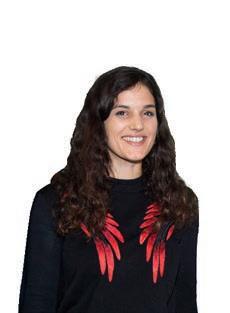

Ones To Watch



Deadline Anoints The Names Destined to Rock This Year’s Croisette
Deadline’s annual group of Ones to Watch in Cannes is made up of actors and filmmakers who are all bringing something fresh to the festival. The distinction isn’t always reserved for brand new faces; rather, we’ve selected people who are branching out, or who find themselves in waters where they are liable to make waves. Cannes can be a place of reinvention, after all.
8 DEADLINE.COM/AWARDSLINE
WHAT’S HOT, WHAT’S NOT, AND EVERYTHING IN BETWEEN AT THE 77TH CANNES FILM FESTIVAL
GETTY IMAGES/ALEX NEHER
Emma Benestan
Magnus von Horn
Carson Lund
Adam Bessa
Mikey Madison
Tyler Taormina

Omnes Films
A new American flm collective lands in Cannes with a Directors Fortnight double whammy
Omnes Films has a goal.
“Our mission is to ll a void in modern cinema,” says its website. “Our lms are passionate, ambitious works made by friends that favor atmosphere over plot and study the many forms of cultural decay in the 21st Century. Whatever the subject or genre, we seek projects that are original in conception and feel like they’ve never been made before.” It sounds wildly ambitious, and maybe it is, but Cannes audiences will be the judge of that when two of its lms—Christmas Eve in Miller’s Point by Tyler Taormino and Eephus by Carson Lund—premiere in Directors’ Fortnight. Taormina and Lund met at college in Boston, where the former was studying screenwriting and the latter lm production. Lund, says Taormina, “was always like the crazily prodigious cinematographer. Everyone was very intimidated by this man.” Taormina, meanwhile, wanted

to make kids TV (“Like the type I grew up to, the Nickelodeon of the ’90s”). While waiting for a script to sell, Taormina had the idea for a loose indie called Ham on Rye (2019). Lund signed on as DoP, and Omnes was born.
Says Lund, “Omnes is a loose collective that’s becoming tighter. In college I made a short lm called Omnes. It’s a sort of a Latin term that’s used often in theater by a director when he needs to get the attention of the cast and crew. And so, we started to tag our lms as Omnes Productions. And then we said, ‘You know what? We should make this a real thing.’ So, we rebranded from Omnes Productions to Omnes Films. We wanted to really make it a cinema collective. We’re not an o cial company, in the sense that we don’t have an LLC or anything. To us, just a symbol of our friendship, our collaboration.”
First out of the gate was Taormina’s Christmas Eve in Miller’s Point, based on the
director’s experience of family gatherings in the early 2000s. “This movie came from many things,” he says, “but I think the genesis was watching my parents’ wedding video on their 30th anniversary. This was some years ago now, and it deeply moved me.”
“I started to revisit some home videos at that time,” he continues, “and I realized pretty quickly that I actually have a total incapability of watching them. I’m too sentimental. It’s too heavy for me to watch my family when we were all so much younger.” That was when the idea of making a Christmas movie came to him. “Once I had that, I knew it would be the way to go. Or, maybe I didn’t know, but I gured that it would be the way that I could reanimate and dwell in the sentimentality that means so much to me.”
Lund, meanwhile, was cooking up Eephus, a personal story of his own, about a baseball eld that is being demolished to build an elementary
school. “ I play baseball,” he says. “and I play in a Sunday League, like the one depicted in the lm. I was looking for material that would be personal to me but that also scratched this itch of making a lm that would track the process of day turning to night over the course of one afternoon in New England and in fall, which is to me the most beautiful time for baseball.”
The directors were taken aback when both lms made it into Cannes. “Honestly,” says Lund, “when one of them got in, we thought, ‘OK, maybe they won’t program both.’ I mean, we don’t want to look like we’re trying to corner the market! But it happened, and we’re thrilled and a little surprised, for sure. But I think it’s a testament to the Fortnight that they’re keeping their eye on these kind of homegrown, handmade, independent lms from America. Films that have a kind of di erent tone and vision.”
DAMON WISE
9 DEADLINE.COM/AWARDSLINE
From left: Tyler Taormina and Carson Lund.
ALEX NEHER/LOIC VENANCE/AFP VIA GETTY IMAGES
01
Cannes Film Festival 2024

Adam Bessa Emma Benestan
The award-winning actor has big fsh to fry
When he won the Un Certain Regard jury’s joint Best Actor prize for Harka in 2022, Adam Bessa wasn’t onstage to accept it. He’d gured he didn’t stand a chance, so he’d gone shing in Marseille instead and was struggling with a seabass when the call came. He laughs. “‘You have to come back,’ they said. I was like, ‘Nah. I’m in the middle of nowhere right now, I can't.’ So, I made a little video instead.”
This year, Bessa is back in Cannes with Critics’ Week opener Ghost Trail by Jonathan Millet. “It’s the story of a Syrian intellectual who was jailed during the civil war in Syria and now he's chasing the man who tortured him. It’s based on a true story, about these guys who escaped from prison and tried to create a secret militia, a secret spy group.”
Though the character he plays is ctional, the story is deeply based on fact. “It’s maybe the darkest lm I've ever done,” says Bessa. “This guy’s lost pretty much everything. He lost his wife and his daughter during the war, and he’s got nothing left except vengeance.”
The 32-year-old French Tunisian is doing pretty well right now, considering he only turned to acting at the age of 21 after a career in football didn’t work out. “I moved to Paris and then I started asking around,” he recalls.
“How do you become Robert De Niro? I had no fucking idea how to do it.”
After a lot of hustling, he got an agent, and through that, he met the Russo brothers, who cast him first in Mosul then their Extraction series. “We have a great relationship,” he smiles. They’ve been like godfathers in the American industry. They've always been there for me.”
A musician in his spare time, Bessa has plenty in his life to be getting on with. So, what’s on his bucket list? “I'd like to meet Zinedine Zidane and play a little bit of football with him, and maybe do a lm with Daniel Day Lewis. I heard Christopher Nolan is bringing him back from retirement. So, yeah, I guess I’d like to play football with Zidane, maybe swim with sharks, and act with Daniel Day Lewis.” DAMON WISE
The French director debuts her feminist Camargue bull-running thriller
The anarchic spirit of Julia Ducournau’s Palme d’Or winner Titane lives on in Emma Benestan’s Critics’ Week closer Animale, the genre-busting debut of a director who cites Buffy the Vampire Slayer, Kathryn Bigelow’s Near Dark and the naturalist flms of Chlo hao as in uences. More surprisingly she also credits Abdellatif Kechiche since her frst break was as assistant editor on his 2013 Palme d’Or winner Blue Is the Warmest Colour
Benestan—who would later take a full-blown editor credit on his 2017 feature Mektoub, My Love was then fnishing her studies at France’s prestigious La F mis flm school but observing Kechiche’s directorial style, and witnessing his penchant for mixing professional and amateur actors, was an education in itself. “It’s the way he marries professionals and amateurs that gives his flms a certain spontaneity ” she explains. “I’d been taught the director had to control everything, but directing isn’t only about control.”
Set against the bull-fghting scene of the Camargue region in southern France Animale stars Divines breakout Oulaya Amamra as Nejma, a 22-yearold woman who is trying to make her way in the male-dominated world of bullfghting. She appears to have been accepted by the group, but after a night of hard drinking with the boys she wakes up with a sense that something is wrong. Shortly after news breaks of a rogue bull on the loose. Young men are found dead, and Nejma starts to experience some strange bodily changes…
Benestan has long been fascinated by the Camargue people’s passion for the long-horned, black bulls that run semi-wild across its wetlands. “I grew up not far from the Camargue ” she says. “When I was young we’d go to the races. The culture of the bull was everywhere.” Accompanying her for this adventure was Ruben Impens cinematographer on Titane and Ducornau’s previous flm Raw “I think he too was fascinated by this magical world.”

MELANIE GOOD -
10 DEADLINE.COM/AWARDSLINE PREMIERE Ones To Watch VIOLETA SOFIA FOR DEADLINE/CORBIS VIA GETTY IMAGES
FELLOW
03 02
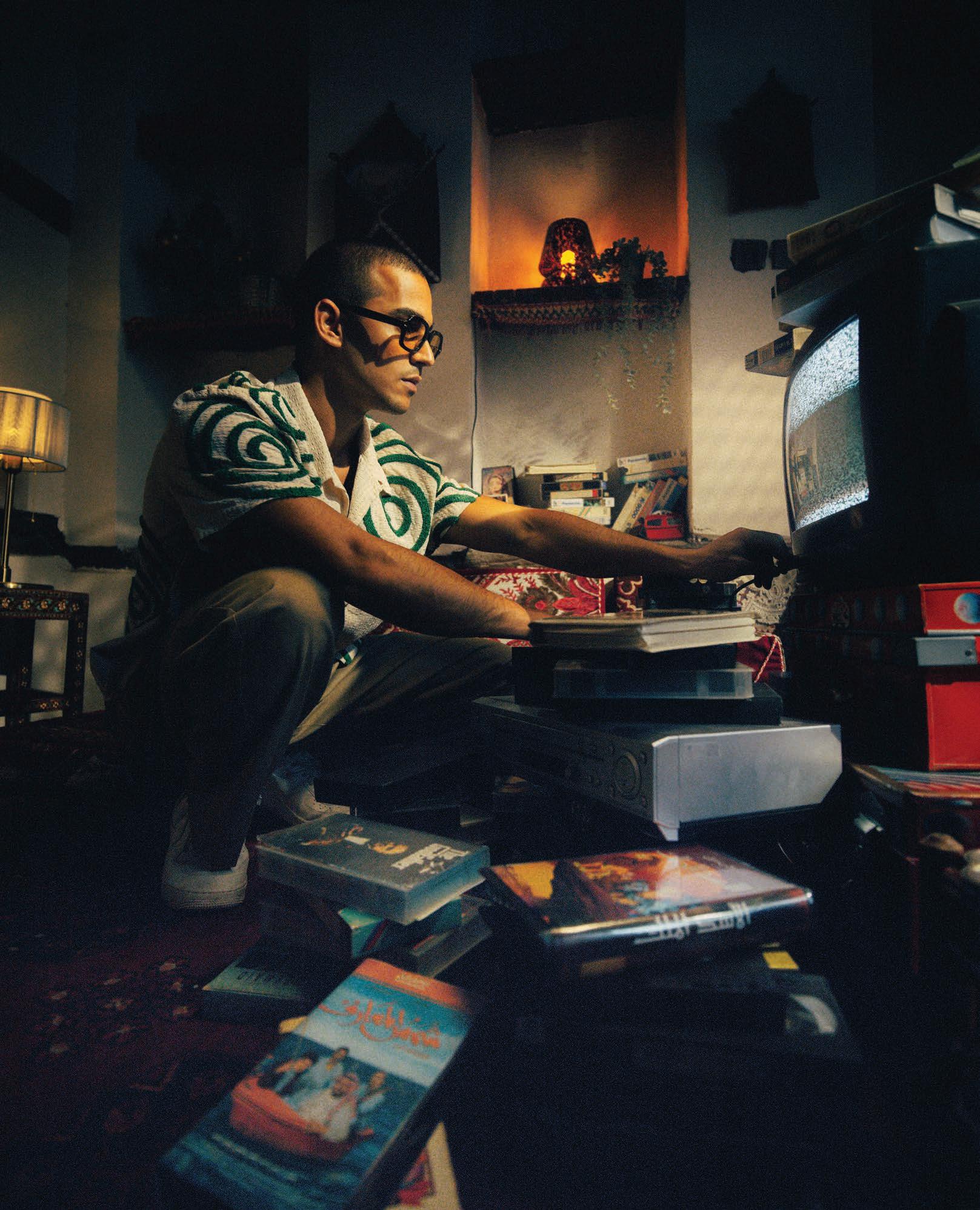
Magnus Von Horn
The director of The Girl With the Needle bounces back into Competition
In 2020, Magnus von Horn was excited to nd that his lm Sweat had been accepted into the O cial Selection at Cannes, a big step up from his debut, The Here After, which made Directors’ Fortnight in 2015. The pandemic put an end to that, but his disappointment was short-lived; this year, his dark atmospheric follow-up, The Girl With the Needle, sees him joining the big league. “This is huge to me,” he beams. “The main competition!”
Set in Denmark during World War I, the lm stars Vic Carmen Sonne as Karoline, a young seamstress whose soldier husband is missing in action. Through a series of mishaps, Karolin falls pregnant, loses her job, and meets a mysterious woman named Dagmar (Trine Dyrholm) who
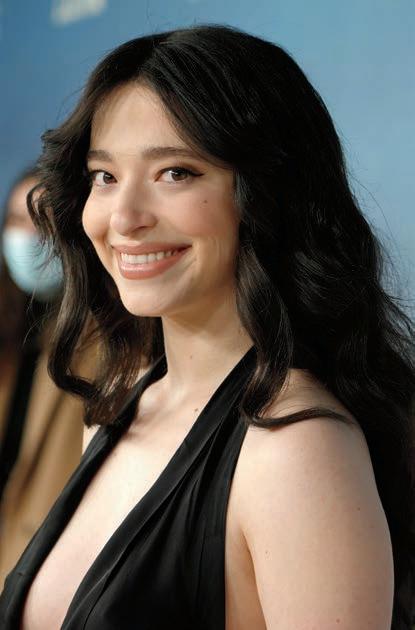

runs both a candy store and an adoption agency. “I’ve been developing this lm for many years,” says Von Horn, “and the starting point was a true story, of one of the most horrendous and controversial crimes in Danish history. I don’t want to spoil things by explaining exactly what that was, but it was a story that provoked me very deeply. At rst, I couldn’t see a way to tell that story, in a way that wasn’t just exploiting the matter, or in a way that would be meaningful. That’s very much when the idea of the main character came in, and her journey through poverty, looking for a better life in post-World War I Copenhagen. I began to think, How much do we want a better life? And what price are we prepared to pay for that?”
Now based in Poland, where he graduated from Łódź Film School in 2013, Von Horn has always pursued a career in lm. “I’ve made lms since as long as I can remember. I tried many di erent things in art—painting, poetry, and music—but lmmaking somehow clicked with me. I don’t know exactly why, but I do know that when I look back on the lms I did as a teenager, they’re more or less exactly the same as the lms I’m making now, thematically. There are certain kinds of stories that attract me, often with a darkness that I think I can express in lmmaking.” —DAMON WISE
Mikey Madison
Meet the star of Sean Baker’s mysterious new movie Anora
Mikey Madison says the call from Sean Baker came entirely out of the blue. “I guess he’d seen a horror flm I did Scream 0 on the opening weekend and decided to call my agent the very next day. I met him and Samantha uan his producing partner for coffee and they pitched me this amazing crazy
idea he had for a flm. I was oored that he wanted to do this flm with me but I didn’t uestion it. I was like Yes absolutely ’” They worked on the project for a year before shooting started. Madison however is reluctant to spoil the surprise. “What I will say is that it’s different than any character I’ve ever played before
in every single way. It was defnitely the most preparation physically and emotionally I’ve ever done for a character because Sean likes to mix professional actors with newcomers and I wanted to be so confdent and sure of who I was that I would ft into that environment in an honest and truthful way.” If the name sounds familiar you may recall the 25-year-old from the FX comedy Better Things in which over seven years she played “an amalgamation of all of the creators’ daughters”. It was she says “like my acting class my college and my home-school all in one because I didn’t go to college.” After that you will most likely have seen her as the Manson
Family’s Susan Atkins in Once Upon a Time… In Hollywood. “Working with Quentin was so reinvigorating ” she enthuses. “I was like Fuck I’m . This is my frst big movie. What am I supposed to do next? Nothing is ever going to be as special as this.’ I mean he’s one of my heroes and one of the reasons I wanted to be an actress.”
After Anora you’ll seen her alongside Natalie Portman in a new Apple TV+ show Lady in the Lake. “I read that character and I felt such a pull towards her that I begged the director to cast me in it ” she says. “I think if I feel like I have to be in a movie to me that’s a sign that I should defnitely do it. It’s not good to feel wishywashy.”
—DAMON WISE
12 DEADLINE.COM/AWARDSLINE PREMIERE Ones To Watch
05
04
JUAN NAHARRO GIMEZ/JC OLIVERA/GETTY IMAGES
Doha Film Institute congratulates its funding recipients selected for the 77th Festival de Cannes.
O cial Selection
Cannes Premiere

‘Rendez-vous avec Pol Pot’ by Rithy Panh France, Cambodia, Taiwan, Qatar, Türkiye Co- financing
La Semaine de la Critique

‘The Brink of Dreams’ by Nada Riyadh & Ayman El Amir Egypt, France, Denmark, Saudi Arabia, Qatar Spring Grants 2020
La Quinzaine des Cinéastes
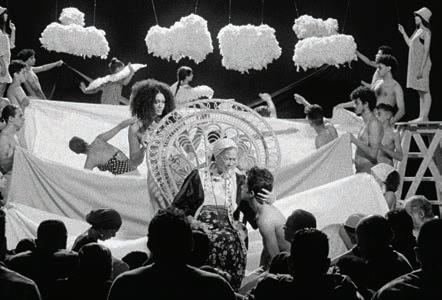
‘East of Noon’ by Hala Elkoussy Egypt, Netherlands, Qatar Spring Grants 2023
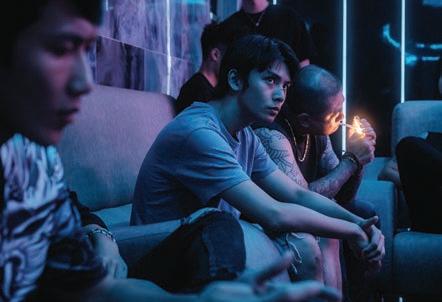
‘Locust’ by KEFF Taiwan, France, USA, Qatar Fall Grants 2023
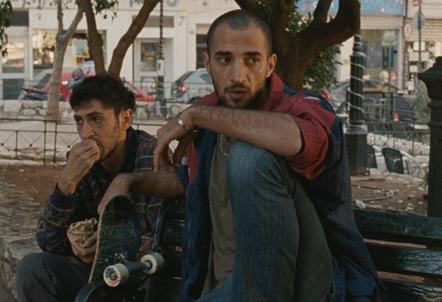
‘To a Land Unknown’ by Mahdi Fleifel Palestine, UK, Greece, Netherlands, France, Germany, Saudi Arabia, Qatar Fall Grants 2013 | Spring Grants 2024
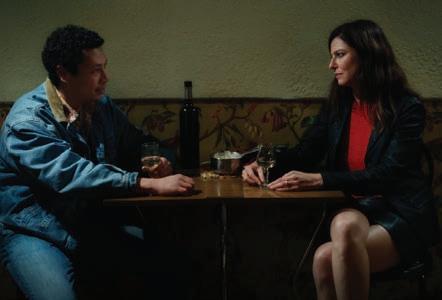
‘Across the Sea’ by Saïd Hamich Benlarbi Morocco, France, Belgium, Qatar Spring Grants 2023
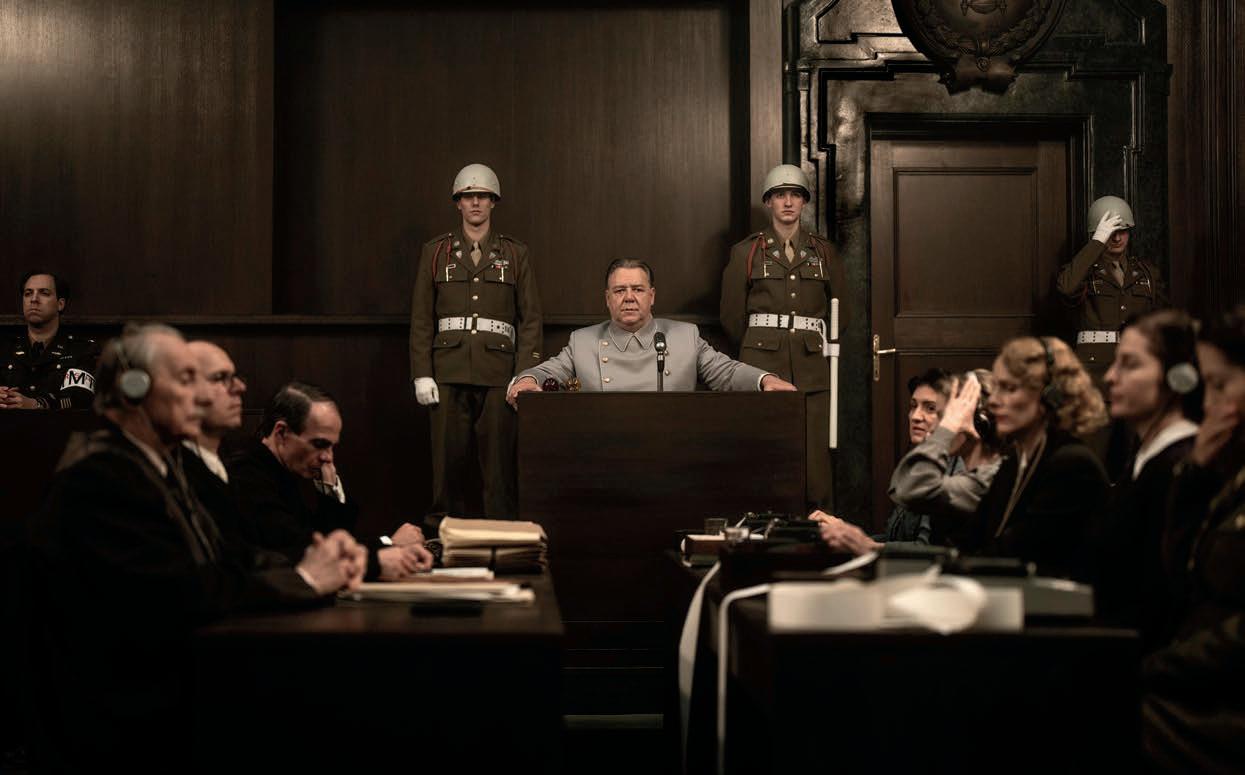
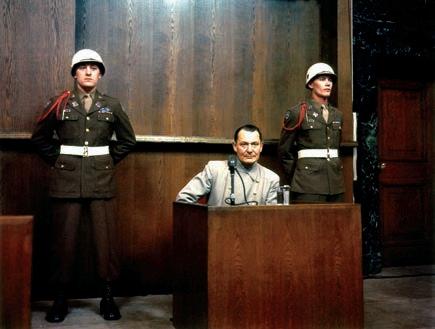
In the fuselage of a C-47 transport plane, a group of high-ranking Nazis in uniforms stripped of their insignia are facing their captors. Among them, Hermann Göring strikes up a conversation with a U.S. Military psychiatrist, Lt. Colonel Douglas Kelley. “Howie here tells me you do magic,” Göring says to Kelley. Kelley nods and shows him a quick coin trick. “Very good,” Göring responds. “But I am going to show you a real magic trick someday. I am going to escape the hangman’s noose.”
It is then that Robert Ley, the Nazi head of the German Labour Front, spots something out of the window. “Nürnberg,” he announces. As the rest of the group takes in the site of the bombed city, their destination is clear. The Palace of Justice is one of the few buildings that remain standing. Their trial will soon begin.
It is an uncanny scene to watch play out on a soundstage in Budapest in 2024. There’s anticipation from both sides in this plane, as each tries to work out whether the Allies’ gamble, to try the defeated Nazi regime for its war crimes,
Analyzing Evil
In Nuremberg, writer-director James Vanderbilt tells the untold story of the psychiatrist who interviewed the Nazi high command
BY JOE UTICHI
will pay o . And that electricity never leaves the air in the two days Deadline spends on the set of James Vanderbilt’s new thriller Nuremberg, which comes to the Cannes market as surely one of the hottest acquisition titles of the year.
Based on Jack El-Hai’s book, The Nazi and the Psychiatrist, Nuremberg tells the story of Douglas Kelley’s interactions with the group of Nazi criminals tried at the end of the war. As well as Göring and Ley, Kelley was the rst Allied psychiatrist to evaluate Nazi leaders like Rudolf Hess, Julius Streicher and Karl Dönitz. And while the trials themselves have been adapted to lm before—notably in Stanley Kramer’s 1961 epic Judgement at Nuremberg Kelley’s particular take on what he witnessed has been largely ignored.
Kelley was young and eager to prove himself, but as he faced the men that had brought the world into its deadliest war, he came to understand the ease with which evil can pervade society. He returned from the trials determined to sound a warning that such a malignant slide would be possible again if it weren’t properly
guarded against. But in the immediate relief of the war’s end, few were prepared to listen.
The Nuremberg trials exposed the dark secrets of the Nazi regime, but they also reassured people that the monsters had been dealt with. Kelley’s book about his experiences, and the warnings it contained, failed; overshadowed by the work of Gustave Gilbert, the psychologist brought in to reevaluate his ndings. Kelley ultimately died by suicide in 1958 having taken potassium cyanide, the very same drug that Hermann Göring had indeed used to “escape the hangman’s noose” after his conviction.
Vanderbilt had started thinking about this story even before El-Hai’s book had been published in 2013. “I read his book proposal, which was about the relationship between Kelley and Göring,” the writer and director tells Deadline during a break in shooting. “I learned about the Nuremberg trials in school, so I knew the basic facts. But as soon as I read about the relationship between these two men, I was really attracted to the idea of telling a personal story
14 SCOTT GARFIELD/RAYMOND D'ADDARIO/GALERIE BILDERWELT/GETTY IMAGES PREMIERE On Set
From top: Russell Crowe as Hermann Göring; the real Göring in the dock at Nuremberg.
DEADLINE.COM/AWARDSLINE
“The thing I always loved about this story is that it’s actually timeless. It’s the old adage that those who don't learn from history are doomed to repeat it.”
JAMES VANDERBILT
between them and how they collided at this crossroads in history.”
What also fascinated Vanderbilt was a generational shift he saw in understanding about the events of World War II. “I took it all on faith, that of course the Nuremberg trials had happened, that justice was done. Both my grandfathers fought in the war. I had many friends whose grandparents were in the camps. But when I talked to my kids about World War II, it was like talking to them about the American Revolution. It is so much further removed from their generation. It felt like a great opportunity to tell a story that brings these events back to life and says, ‘This wasn’t at all a fait accompli.’”
Though Vanderbilt’s work may have started more than a decade ago, the lessons Douglas Kelley tried to teach seem as pertinent now as they’ve ever been. “Unfortunately, the lm has become timelier rather than less timely,” says Vanderbilt. “But the thing I always loved about this story is that it’s actually timeless. It’s the old adage that those who don’t learn from history are doomed to repeat it. The easiest way to for us to do harm to other people is to look at them as other; as di erent from us. We assume they’ll dress like Nazis and announce themselves as bad guys, but that’s not the way the world works. That’s not how terrible things can happen.” Vanderbilt did research of his own, too, into the machinations that went into building the unprecedented trials, in which justices from the Soviet Union, the U.K., the U.S. and France sat in judgement. It was at Nuremberg, where proceedings were diligently recorded and dispersed in newsreels, that the world rst saw footage from inside the Nazi concentration camps; irrefutable evidence of the horror of the Holocaust. Into his script for Nuremberg, Vanderbilt weaved the story of U.S. prosecutor Robert Jackson, who along with his British counterpart Sir David Maxwell Fyfe, questioned Hermann Göring on the stand.
While other actors had attached themselves to Nuremberg ’s vision of Göring over the years,
when the script landed on Russell Crowe’s desk, he couldn’t resist the prospect. “For the most part, the things that attract me are the things that terrify me,” Crowe tells Deadline. “I responded to the script straight away, but in a funny way I was also emotionally exhausted by it. How would you even attempt to play that guy? When that kind of question comes up, that’s usually what I’m attracted to.”
He laughs. “It’s also why you haven’t seen me do 15 variations on Gladiator. And to this day, I still haven’t done a sequel, which I consider a rare badge of honor.”
Crowe, too, responded to how prescient the story was. “Kelley wouldn’t acquiesce to the common story of Nazism at the time, which was the story that the Allies wanted to push, that this was a group of madmen. These people were involved in some very dark things that came out of situations that shouldn’t have directed them in that way. We see a lot of this type of politics
of circumstance going on now, where in order to hold power, people are willing to go beyond established rules. Göring was willing to get into bed with people he ordinarily might not have, because of the circumstances he was in.”
He adds: “We were brought up to believe that the guy talking to us has a passion, and that he’s chosen public life to serve people. The time period we’re living through now, over the last 10 years maybe, we’ve seen a completely di erent kind of animal coming out of the jungle: a person that just wants to be in power. They’ll say anything, do anything, if it keeps them in that privileged position. It’s very, very dangerous. Here we are again with the same kind of tubs being thumped and drums being banged that could lead us to incredible darkness.”
Crowe’s clarion call, and Vanderbilt’s

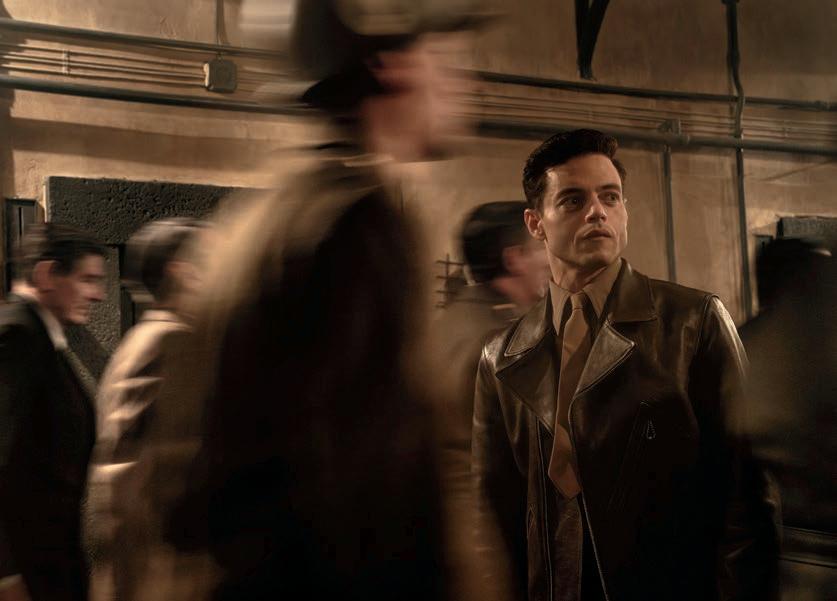
15 DEADLINE.COM/AWARDSLINE SCOTT GARFIELD
From top: Douglas Kelley; Rami Malek in Nuremberg Cannes Film Festival 2024
gripping script, attracted the attention of producer Richard Saperstein, whose Bluestone Entertainment has teamed with the Walden Media and Széchenyi Funds to nance the production. He’d read the script for Nuremberg in 2016 when it was in other hands, and when it came back around, the company leapt at the chance to make it.
In short order, an all-star cast assembled, including Rami Malek as Kelley, Michael Shannon as Jackson, Richard E. Grant as Maxwell Fyfe, and Colin Hanks as Gilbert. John Slattery plays Colonel Andrus, who kept the Nazi prisoners, and Leo Woodall plays Sgt. Howie Triest, a German Jew who had ed to New York at the outbreak of the war, and who was drafted by Andrus to translate.
There are heavyweights behind the camera too, including cinematographer Dariusz Wolski, production designer Eve Stewart, and hair and makeup designer Jan Sewell. “Everybody here is a top person,” says Saperstein, “and it’s because there’s something about this script and subject matter that brings passion out in them.”
“It was one of those rare scripts where you don’t want to touch a single beat; there’s not one word out of place,” says Malek. “James has got such a good sense of rhythm and pacing, and you feel there’s a motor to the script—some driving force behind it—and it propels you from scene to scene.”
In addition to reading El-Hai’s book, Malek was able to unearth a copy of Kelley’s 22 Cells in Nuremberg, the long out-of-print book he had written about his time with the prisoners.
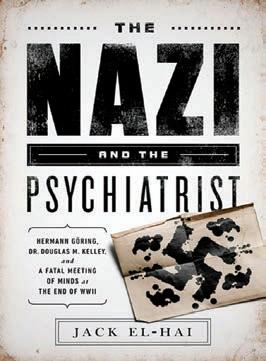
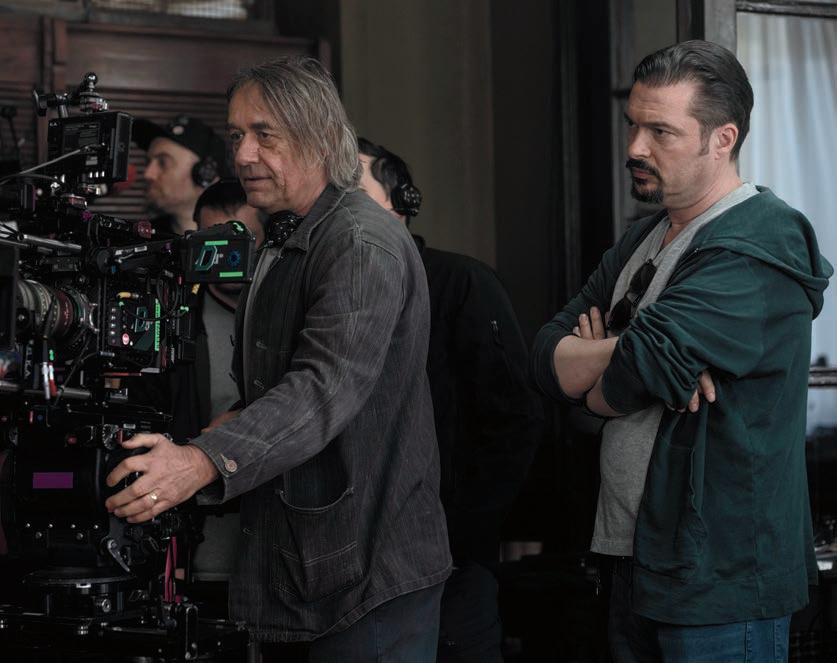
He also shared the books and the script with a psychiatrist, who was able to help him home in on Kelley’s obsessive nature. “I always nd myself drawn to characters who are still tethered to events in their life, who are acting now in an attempt to reconcile their past,” Malek explains. “So, for Kelley, he has this need, an obsessive need, to prove his worth, to do something ‘great’.”
In Göring, Kelley found a subject who could be as charming, humorous and devoted to his family as he was ruthlessly unrepentant about the having conspired to commit the greatest atrocities in history. “He couldn’t help but empathize with [Göring],” Malek says. “For Kelley to be so convinced that he was there to ‘dissect evil’, as he explains in his book, and then to discover there’s nothing uniquely evil about Göring; in fact there’s humanity in there. He realized that anyone at any moment in any
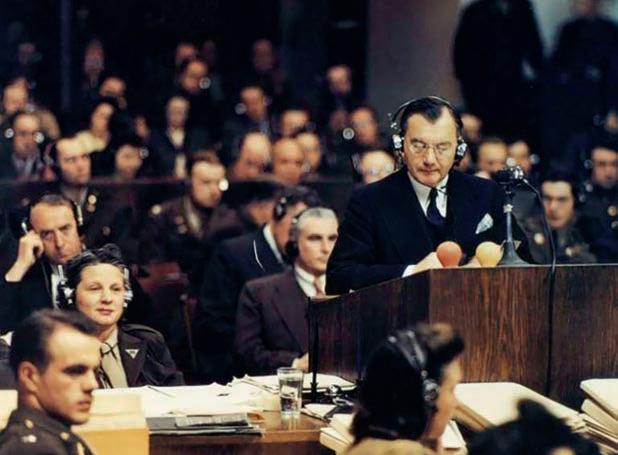
political landscape could be capable of an atrocity like that. How jarring, and how absolutely terrifying that must have been.”
In numerous moments throughout the lm, Kelley and Göring spar as the young American comes to grips with this larger-than-life tyrant. As Malek and Crowe bring their interplay to life, in the cramped jail cell set Stewart and her team meticulously recreated to match the real location the Nazi criminals were held, the dynamic between them is charged.
“To say the hair stands up on the back of my neck doesn’t quite cover it,” says Walden Media’s Cherilyn Hawrysh. “This is what it’s like to watch two Academy Award-winning actors at their fullest.”
“It has been an incredible learning experience for me, watching these two titans go toe-totoe,” says Woodall, who has found himself in the room for numerous scenes between the two ready to translate, although Göring spoke good English. He recalls a scene in which the two of them extended the dialogue past the point the take should have cut; just kept their back-andforth going. “At one point Rami turned to me and said, ‘Howie, what do you think?’ And I just said, ‘What?’” He laughs. “I nearly responded in my British accent, because I was so immersed, and I’d completely come out of character.”
But it’s not as though the degree of di culty hasn’t been there for Woodall too. Howie isn’t just a German speaker, but a native German speaker, and Woodall… isn’t. “I didn’t speak a lick of German, and in the rst scene I shot I was translating heavily between Rami and Russell. I was thrown in at the deep end, but Howie is such a complex, fascinating person. I think you want to feel like the work you do matters, and with this, it really does.”
PREMIERE On Set SCOTT GARFIELD/US ARMY SIGNAL CORPS
From left: The Nazi and the Psychiatrist book cover; Robert Jackson in court.
Cinematographer Dariusz Wolski and director James Vanderbilt on the Nuremberg set.
16 DEADLINE.COM/AWARDSLINE

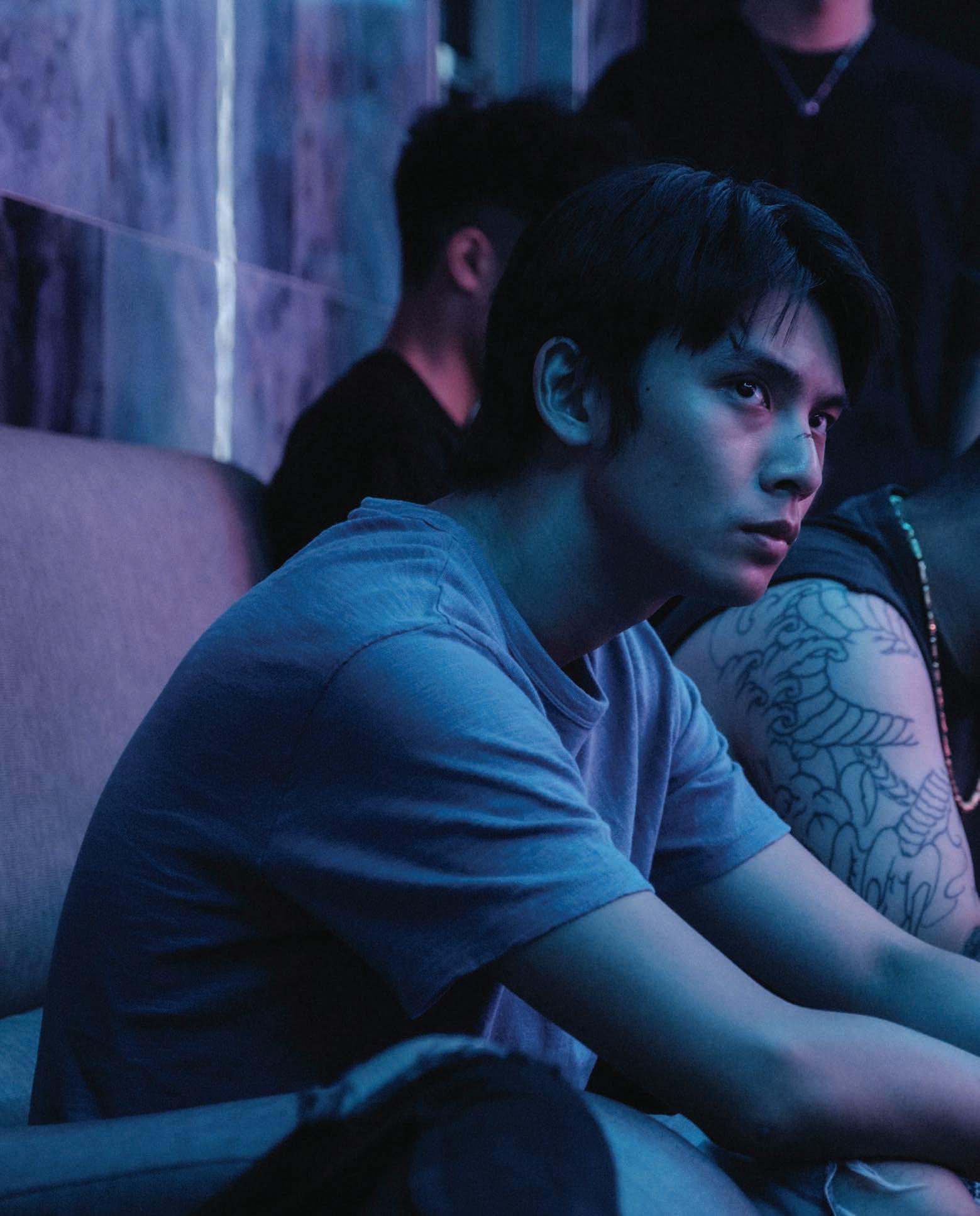



“I responded to the script straight away, but in a funny way, I was also emotionally exhausted by it. How would you even attempt to play that guy?”
RUSSELL CROWE
Can art change the world? It’s a lofty question to put on any piece of work. Nuremberg has clearly assembled a cast and crew hellbent on keeping this story alive, and Vanderbilt’s script has been the glue holding them here. As for that bigger question… “Well, it might be a slim hope, but it’s the only one I’ve got,” says Crowe. “This has been a great shoot and I’ve really enjoyed it, purely from an acting perspective. But it has been a mentally pressurized shoot just because of the subject matter. The reminder that these are human beings, and they made these
decisions as a collective because it’s what they could get away with. It’s a very scary thing.”
Says Malek, “I was apprehensive about whether I could have the conviction on who this guy was to go toe-to-toe with Russell, and Michael, and the rest of the cast. But, in this particular case, the legend happens to be the lm, and it isn’t legend; it’s truth. There’s a reason everyone has been drawn to this, and we’re all reaching to do our best work. When you nd a gem like this that not only entertains, but also reveals something about humanity,

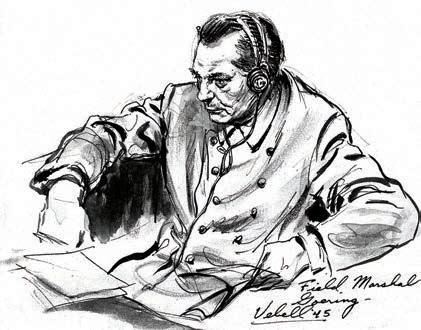
reminds us of our faults, and perhaps allows us to question how we walk through the world, that’s powerful.”
Nuremberg, which is being repped for worldwide sales by WME Independent, with Nick Meyer’s Sierra Pictures consulting, will make its debut to buyers with a footage presentation in Cannes on Thursday. Principal photography has only recently wrapped, so Vanderbilt and his crew still have a long road ahead to nish the lm. But it will have been worth it. “Kelley is fascinating to me because he’s largely become a footnote in history, and he’s been forgotten,” the director says. “I love stories that take you into something big that you think you know about, but that take you in through the backdoor. I think where he got to in terms of his analysis of all of them, and Göring in particular, was fascinating, and genuinely brave given it was not a popular viewpoint. I’m excited to tell his story, warts and all, happy ending or not.” ★
18 DEADLINE.COM/AWARDSLINE PREMIERE On Set IMAGNO/GETTY IMAGES/CHRIS WARE/KEYSTONE/HULTON ARCHIVE/ED VEBELL
Clockwise from right: Hitler, Göring and Julius Streicher; Sir Hartley Shawcross and Sir David Maxwell Fyfe; Göring in court; the defendants during the trial.





Cannes Laughter
After conquering America with their absurdist comedy, the Monty Python team went one step further winning a prize at the world’s most serious flm festival.
BY DAMON WISE
Terry Gilliam has been to Cannes with three of his own lms since 1983, but one of his favorite memories of the festival takes him back to that very rst time, at the 36th edition, as the co-writer and co-star of Monty Python’s The Meaning of Life. Along with Graham Chapman and the lm’s director Terry Jones, he’d emerged from the Carlton hotel’s iconic entrance, then bedecked with promotion for the upcoming Bond movie Octopussy, to encounter a camera crew. Jones started grabbing people at random, shouting, “WHO EES MONTY PYTHON???” in a ridiculous foreign accent, and got so carried away that, when they reached the hotel’s famous terrace, he accidentally did it to Gilliam too.
The crowd loved it, and the day only grew stranger. Out on the Carlton’s jetty, they gave an interview to British news channel ITN, with Jones hiding behind Graham Chapman’s back while Gilliam ate After Eight mints from the box. Chapman deferred every question to Jones, who nally insisted that the lm was made for the bene t of the world’s sh population. Why? “Well, we’re trying to achieve the widest possible audience,” he explained. “There are huge shoals of sh in the ocean, and we thought that if we could break through to that kind of audience, we’d be onto a money spinner, didn’t we?”
Here they were, at the lm festival where Bergman, Fellini and Kurosawa were revered as gods, with a lm that even fellow Python member Eric Idle described as “gross”, “nasty”, “violent”, and “unnecessarily grotesque”. The experience, the night before, of a black-tie audience watching the Citizen Kane of grossout comedy had been indelible. But the moment that registered the most strongly with Gilliam was completely left- eld.
“In the midst of all this,” said Gilliam, “suddenly I could feel this heat on my back. It was like the sun was burning, it was really hot. I turned around, and [there] was Jerry Lewis, beet-red, staring, just angry because we were in his way. We were in France and the camera was
interested in us, and he hated us. It was just a great moment. I could actually feel the heat coming o of this man; this face was ugly, so full of hatred. It was amazing!”
Though a respected comedian in his native America , Jerry Lewis, a man never famed for his magnanimity, was used to nothing less than worship from the French, even claiming, with typical humility shortly before he died in 2017, that, on a recent visit, French newspaper Le Figaro had plastered his face on the front page, with a headline that roared, “THE KING IS HOME!” When the Pythons arrived in Cannes, Lewis had just opened the festival in the world premiere of Martin Scorsese’s lm The King of Comedy, in a ceremony attended by Liza Minnelli, Charlotte Rampling and Sophia Loren.
Scorsese’s lm showed a new side to Lewis, playing obnoxious chat-show host Jerry Langford alongside Robert De Niro as aspiring stand-up Rupert Pupkin. Despite the title, it was very much not a comedy, more a scathing satire on the dark turn that American TV was taking in a new era of celebrity culture. And, besides, no one was really expecting it to be a comedy anyway, since nothing laughout-loud funny had ever won a Palme d’Or since the festival began, with the arguable exception of Richard Lester’s Swinging London

caper The Knack… And How to Get It, which took one home in 1965.
Lewis may have thought he was a shoo-in for Best Actor, especially with 1979 Palme d’Or winner Scorsese returning to the event for the rst time since Taxi Driver and American author William Styron (Sophie’s Choice) heading the jury. But The King of Comedy—like Martin Ritt’s period romance Cross Creek and Bruce Beresford’s C&W drama Tender Mercies—didn’t win anything; according to Gilles Jacob, then artistic director of the festival, it was the rst time U.S. lms had been shut out since 1969.
The Palme eventually went to Shōhei Imamura’s The Ballad of Narayama, but there had apparently been surprisingly little consensus amongst the jury. In fact, when it came down to presenting Best Director they opted for a split vote, tying Andrei Tarkovsky (for his minimalist classic Nostalgia) with Robert Bresson (for his minimalist classic L’Argent). “It came down,” said one French critic, “to the pro-Bresson party versus the anti-Bresson party”). Tensions ran so high that when Orson Welles announced the result, Bresson was booed and accepted his award in suitably Bressonian silence.
The jury was united on one thing, however. The winner of the Grand Prix, an award introduced in 1967 and now e ectively the second prize, was a hit with a diverse jury that included French journalist Yvonne Baby, Egypt’s Youssef Chahine, Mali’s Souleyman Cissé and the Soviet Union’s Sergei Bondarchuk. And so it was that the Pythons’ Terry Jones returned to the Croisette and ascended the steps of the Bunker to pick up the award from one of the night’s surprise presenters: a very, very bemused James Mason.

20 DEADLINE.COM/AWARDSLINE PREMIERE In Depth EVERETT COLLECTION/GAMMA-RAPHO VIA GETTY IMAGES
From left: John Cleese in Monty Python's Flying Circus Liza Minnelli Jerry Lewis and Sophia Loren at Cannes in 3
Cannes Film Festival 2024
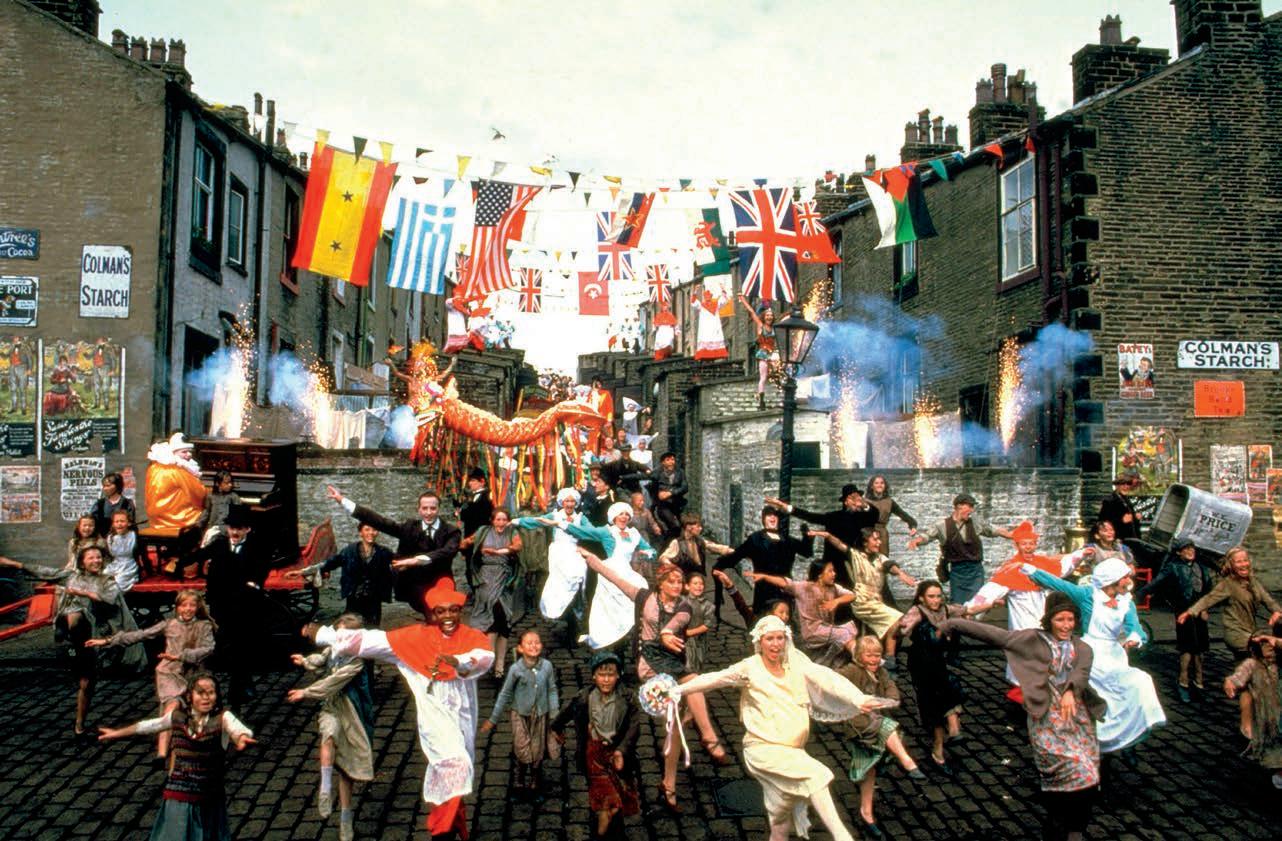
In case anyone needs an introduction to the aforementioned Gilliam, Jones, Chapman and Idle, these four—along with John Cleese and Michael Palin—were the brains behind the in uential late-night British sketch show Monty Python’s Flying Circus, which debuted on the BBC in 1969. The Pythons, as they came to be known, pioneered surreal, non-sequitur comedy that threw away the rules about set-ups and punchlines. For example, in a 1971 sketch, called “The Pantomime Horse Is a Secret Agent,” a British spy in a horse out t pursues a Russian spy in a horse out t (both on bicycles), only to be ambushed by the Royal Family’s Princess Margaret and a goose. Luckily, he is saved: by a regimental sergeant major, the playwright Terence Rattigan, and the Duke of Kent.
The show was a cult hit in the U.K., but, understandably, even the Pythons themselves thought that would be the extent of it. “We never thought it would go to America,” Cleese later recalled. One of the main problems was expense: the BBC shows were lmed in PAL and would have to be transferred to the NTSC format. So, to introduce them to the U.S. market, Victor Lownes, head of Playboy U.K. asked for help from his boss Hugh Hefner to put together a calling-card lm, to be distributed by Columbia-Warner Bros.
The result was a big-screen compilation of the BBC show’s greatest hits, helmed in a TV way by its director Ian McNaughton, called And Now for Something Completely Di erent. In an act of recycling unthinkable today, it recreated skits such as “The Dead Parrot”, in which a pet shop owner brazenly denies having sold a customer a deceased Norwegian Blue, even though it is sti as a board and nailed to its perch. There was also “The Funniest Joke in the World,” in which the British army translates a killer gag into German to win the Second World War. And let’s not forget “Self-Defense Against Fresh Fruit”, in a which a weary group of would-be vigilantes turn against their fruit-obsessed instructor, sighing, “We’ve DONE apples, oranges, grapefruits—whole and segments.”
The lm opped, but the Pythons weren’t surprised. After all, it was simply a rerun of old skits with no linking device, and the members of group felt there hadn’t been enough consultation with them, a key part of their creative process. But it was enough to kick-start the growth of the Pythons’ reputation in the U.S., and in 1974 a soft launch on KERA-TV, a PBS station in Dallas, did what the lm couldn’t do; by 1975 Flying Circus was a word-of-mouth hit, airing on other PBS stations in the most populated states.
The time was right for the Pythons to take things up a notch with another, proper movie, but at home, the British lm industry was in a moribund state, largely dominated by the conservative Rank Organization, by then a shadow of its former self. In lieu of a studio, a Python associate had the bright idea of tapping the world of rock’n’roll for cash, raising a projected budget of somewhere between £150,000 and £200,000. The likes of Led Zeppelin, Pink Floyd, record label Charisma Records—the home of Genesis—and some rumors say even Elton John chipped in, with no strings attached. All respected their fellow artists’ need for autonomy, while perhaps also hoping to write their investments o at a time when income tax in the U.K. was running as high as 90%.
The rst draft of that script was very much a work in progress, featuring a story that began in the Middle Ages and ended in the 20 th Century, with a nerdy man called Arthur King nding the Holy Grail in the grail section of London department store Harrods. Terry Jones, a history bu , persuaded the team to focus on the Middle Ages, so they all went away to research the period. Jones, by this time, was itching to direct, as was Gil-
21 DEADLINE.COM/AWARDSLINE
The Meaning of Life
liam, so they agreed to co-direct. Both had very di erent thoughts and looks (Jones went for a handheld style, Gilliam for something artier, with lots of smoke), but both were inspired by the earthy arthouse lms of Italian auteur Pier Paulo Pasolini.
Although it went through 13 edits and a complete change of score, Holy Grail was a game-changer, being a lean, 90-minute narrative lm in which the fabled British King Arthur (Chapman) tours the U.K. looking for knights to join him on his Round Table. Along the way, he gets a mission from God to nd the religious relic of the title, only to nd that rival French nobleman Guy de Lombard has already got one (“It’s verry niiice”).
The lm was scrappy but well-received in the U.S., especially by superfan Elvis Presley, who is said to have screened the lm over 45 times at his private cinema in Graceland. More signi cantly, it paved the way for the Pythons’ biggest and most successful lm of all: Monty Python’s Life of Brian (1979), a historical romp in which Chapman played the title character, the next-door neighbor of Jesus Christ, who is mistaken for the Messiah.
Though all concerned were into middle age by then, the lm was as scandalous as the wave of
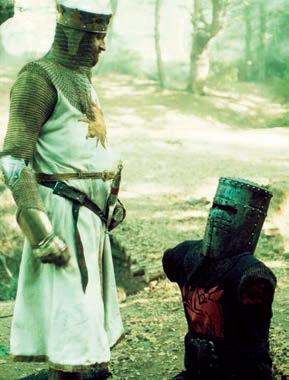

punk rock that had shaken up the music industry a few years earlier. The nancier this time was a musician with bigger pockets than the ones before: George Harrison of The Beatles, who’d read the script, fell out of bed laughing, and re-mortgaged his house to fund the lm after a nervous EMI, who distributed Holy Grail in the U.K., pulled out (“I wanted to see the lm,” he reasoned, quite reasonably).
Although the lm makes it very clear that Brian is merely a supporting player in the life of Jesus Christ, the religious right refused to see it that way. Said Michael Palin, “We were most surprised by the extent of the backlash, especially in America; people were actually carrying banners outside the theater—there were nuns with banners! It was just the best thing that could possibly have happened in retrospect, but at the time I couldn’t believe that people would react like that.” It soon transpired that most of the lm’s most vociferous critics hadn’t actually bothered to watch it. Jones cited the example of a U.K. councilor in Devon, who happily admitted that he’d voted to ban it sight unseen.
“You don’t need to go near a pigsty,” he’d said, “to know that it stinks.”
These attempts to sti e it only fanned the ames, and, indeed, nearly half a century later, the lm’s longevity speaks for itself. For one thing, the lm’s closing song, “Always Look on the Bright Side of Life”—sung by Eric Idle, hanging alongside Brian on a cross—has only recently dropped out of the top 10 most-requested songs at funerals in the U.K.
Luckily for George Harrison, all this controversy not only made Life of Brian a hit, it bankrolled his production company, Handmade Films, for a decade, producing ’80s lms such as The Long Good Friday, Time Bandits, Mona Lisa, and Withnail and I, all future cult classics that didn’t quite nd their audiences when they needed them. But for the Pythons, Life of Brian was about to become an albatross; the industry was expecting a follow-up, but the once tightknit group had already started to dissemble, notably when Cleese quit their TV show to develop his sitcom Fawlty Towers, which debuted in 1975.
Though there were personality clashes within the group, Cleese had stayed on friendly terms with the Pythons, continuing to contribute as a writer and joining them
for their four-night stint at LA’s Hollywood Bowl in 1980. But after Fawlty Towers became a hit, it was clear that camaraderie alone would not carry the day. Cleese, already tired of having to submit his ideas for group discussion, now wanted guarantees of nancial stability, so his ears pricked up when the Pythons’ then-manager, Dennis O’Brien (Harrison’s partner in Handmade), told them that if they moved fast on a new movie project they would “never have to work again”. “That was a nice prospect,” Cleese said. “But for that reason, and that reason alone, we sat down to start writing the next movie without having a fallow period, which I think would have been much better.”
The Pythons subsequently parted ways with O’Brien, which made another lm with Handmade untenable. Luckily, Universal was happy to step in, even though they were told they couldn’t see the script and had to pay $8 million for it. All they saw was a poem, penned by Idle, that began: “There’s everything in this movie / There’s everything that ts / From the meaning of life and the universe / To girls with great big tits...”
But when the group set o to the West Indies to pool their
22 DEADLINE.COM/AWARDSLINE ORION PICTURES/EVERETT COLLECTION PREMIERE In Depth
Life of Brian
Monty Python and the Holy Grail
Breathtaking, exhilarating, and rousingly inspirational
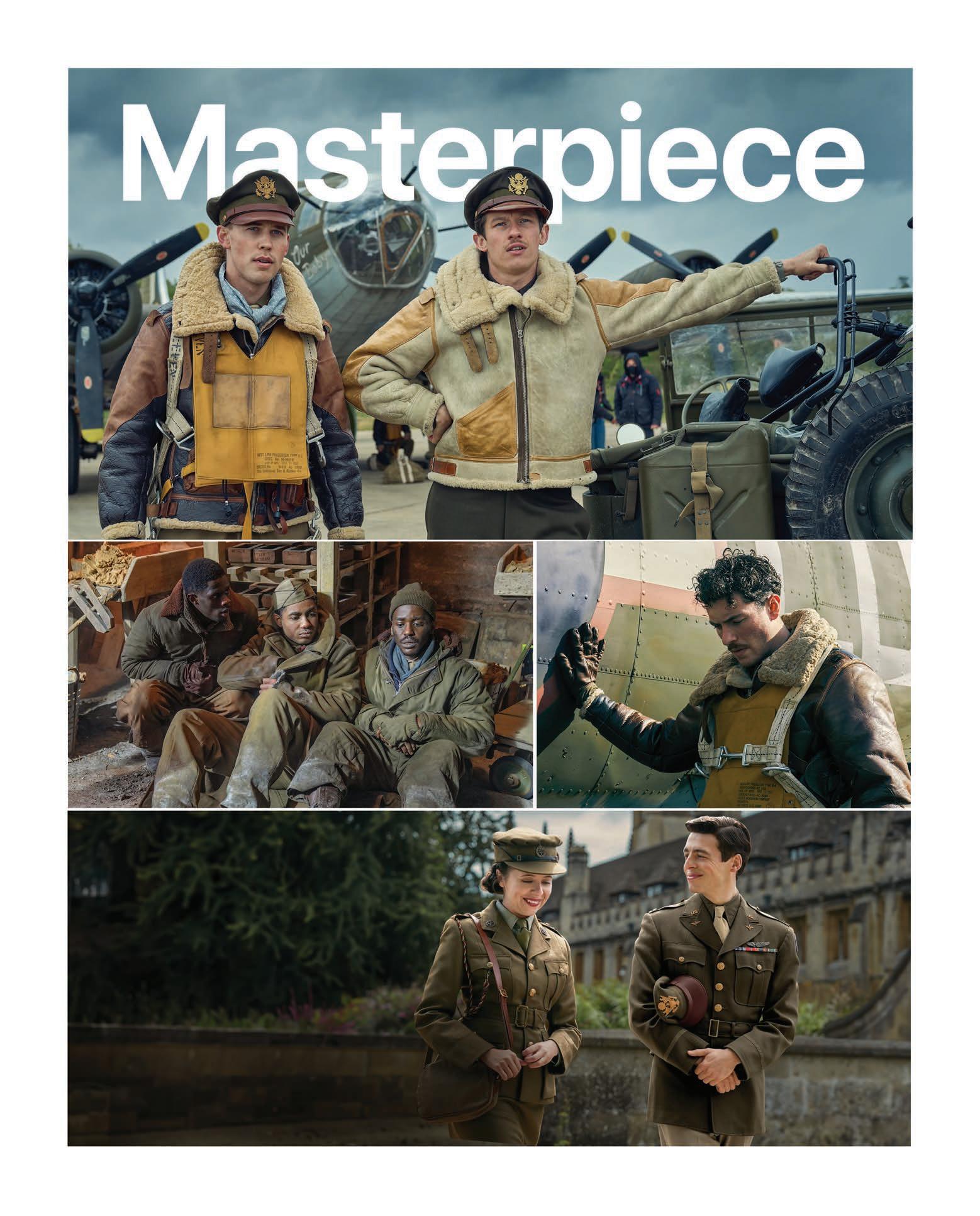


ideas, it soon became clear that there was nothing to hold it all together; Jones had a vague idea about World War III, while Cleese and Chapman had come up with a scenario about a mad ayatollah. On the ight over, Jones was nervous. “I remember thinking, This just isn’t getting anywhere,” he later said, “and I woke up with a tight knot in my stomach like you get at exam time at school. I had a look at what I had and found I’d packed a script which our continuity lady had. I looked through it and realized we had about 70 minutes of material which we [Jones and Palin] thought was fantastic… I said, ‘What are we all worrying about? We’ve got 70 minutes of great material, so we’ve only got to write 20 minutes—surely we can do that? All we’ve got to do is get the structure.’”
Cleese had been all for just giving up and enjoying the sun, but then someone suggested “The Seven Ages of Man” as a framing device, citing the famous quote from Shakespeare’s As You Like It: “All the world's a stage / And all the men and women merely players / They have their exits and their entrances / And one man in his time plays many parts / His acts being seven ages.” Hearing that, Idle revived The Meaning of Life as the title, and the approval was unanimous. But, deep down, the Pythons knew it was a step backwards, a return to the sketch comedy they’d tried so hard to escape.
Loosely inspired by Spanish-Mexican Surrealist director Luis Buñuel, The Meaning of Life starts in a hospital delivery room and ends with the cast reunited for a Christmas party in the afterlife—an RKO-style song-anddance number led by Chapman’s amboyant emcee. In between, the lm had some of their most famous moments; notably, two great musical set-pieces—the Catholic singalong anthem “Every Sperm is Sacred”, and the cheerfully nihilistic “Galaxy Song”, which concludes that we should all “Pray that there's intelligent life somewhere up in space / ’Cause there's bugger all here on Earth”.
More notoriously, there was the still-nauseating “Mr. Creosote”
sketch, in which a rich, rude, and obscenely fat man (Terry Jones) explodes in a swanky restaurant after eating a single “wa er -thin” mint, covering his fellow diners in a graphic rain of vomit and guts. (Quentin Tarantino has since said, “I still can’t think about that scene without retching.”)
But the Pythons knew they could, should, and might have done better. “I felt I’d been forced into doing stu I didn’t want to do anymore,” Gilliam said. “I didn’t feel we were working that well, although Jamaica was fun. Those were the best parts, just going o to write, because I think we had more fun sitting, eating and talking than doing the lm.”
By the time The Meaning of Life was nally nished, the various members of the group had all successfully begun to ex their non-Python identities; Gilliam, Idle and Jones had ambitions in lm, Palin in television (both ction and documentary), and Chapman in literature, after publishing his candid memoir, A Liar’s Autobiography, in 1980. None were at all surprised, therefore, when Cleese chose not to join them on the Croisette. (“I’ve never been to the Cannes Film Festival,” he said later, “and I’m really proud of that. I can’t imagine anything more tedious”).
Nevertheless, they enjoyed themselves in his absence and basked in all the attention, which seemed to surprise them. Gilliam was especially taken aback when American lmmaker Henry Jaglom, whose lm Can She Bake a Cherry Pie? was screening in Un Certain Regard, told him it was

“the best thing Python had ever done”. Gilliam replied, “There’s great bits in there, but there’s crap as well,” but Jaglom didn’t bat an eyelid. “That’s why it’s great.” he said, “Because the crap is there to balance the greatness.”
Needless to say, winning the Grand Prix was not on anyone’s radar; at the beginning of the festival, Jones even joked at their press conference that they’d slipped payola to the festival, leading to the headline “PYTHON BRIBES JURY”. Returning solo for the closing ceremony to pick up the award, wearing a velvet dinner jacket with the words “EAT MORE PORK” emblazoned on the back, he kept up the joke, saying that the cash was stashed in the bathroom, under the pipes. In retrospect, though, the lm’s cynical view of humanity now seems more Cannes-friendly than it might have then, anticipating the works of Yorgos Lanthimos, Ruben Östlund and, at a push, Michael Haneke.
Though much appreciated, the award came too late to be treasured, since, by then, the moment had passed, and it was clear there would nothing more from that well. Monty Python never actually o cially disbanded, but when Chapman died in 1989, at the age of just 48, the reality could no longer be ignored.
On re ection, those few days in Cannes can be seen as a wrap party for the Pythons in the most nal and literal sense.
“I felt it was over after The Meaning of Life,” said Gilliam, citing the lm’s sparkly, joyous and now rather poignant celestial climax. “We all get to heaven, don’t we?” ★
ACKNOWLEDGMENTS: BOB MCCABE, THE PYTHONS’ AUTOBIOGRAPHY BY THE PYTHONS (ORION); DAVID MORGAN, MONTY PYTHON SPEAKS , HARPERCOLLINS. KINDLE EDITION.
24 DEADLINE.COM/AWARDSLINE UNIVERSAL/EVERETT COLLECTION/GATTI-DUVAL/AFP VIA GETTY IMAGES PREMIERE In Depth
John Goldstone, right, and Terry Jones accept the Special Jury Prize in Cannes for Monty Python's Flying Circus
From left: Eric Idle, Michael Palin, John Cleese, Graham Chapman and Terry Jones.

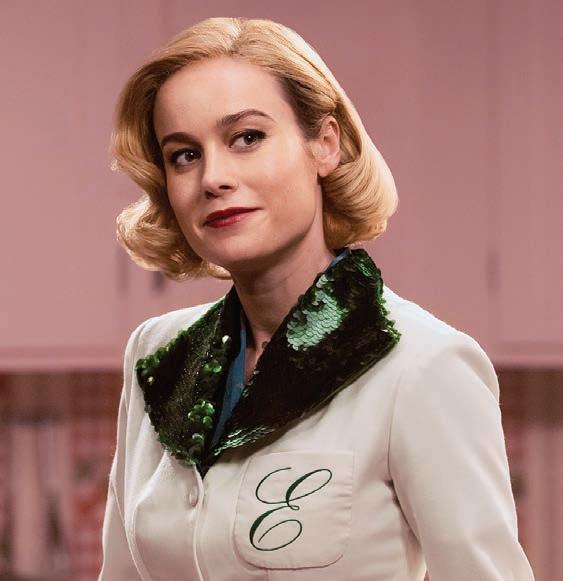



Are Film Festivals In Crisis?
Global issues war in ation politics and the aftermath of the pandemic have taken their toll on the festival circuit. Here two writers assess the landscape
BY MATT CAREY & ANDREAS WISEMAN
Rarely in recent decades has the festival circuit been as disrupted as it has in the past 12 months. A con uence of local and global issues—from war to in ation, political unrest to societal shifts—have created a perfect storm for many of these vital cultural platforms, leading to funding shortfalls, sta losses, major PR headaches and in some cases cancellation. Amid shifts in consumer and industry behaviour, there are also broader existential questions being asked about the role and potency of festivals.
Since last Cannes, we’ve seen ashpoints or upheaval at Sundance, Berlin, Hot Docs, Thessaloniki, IDFA, El Gouna, Cairo and others, and there are questions hanging over the likes of Venice and Toronto.
During this year’s turbulent Berlin Film Festival, Martin Scorsese voiced the concerns of many in the independent m sector: “Film Festivals are essential, because they o er audiences a way of looking at movies that has nothing to do with box o ce or mass popularity and everything to do with the cinema as an art form. I nd that too many of them have been put in a di cult position, where they have to justify their existences in one way or another.”
Here, we explore how and why some lm festivals have found themselves in the crosshairs.
Andreas Wiseman on Europe
This year’s Berlin Film Festival encapsulated a number of the challenges facing the sector. Amid funding di culties, the state-backed event was bookended by damaging political headaches, rst after organizers invited the democratically elected far-right party AfD to the opening ceremony, and then by accusations of antisemitism from German politicians in response to speeches at the closing ceremony. Meanwhile, the festival has been facing a deeper identity crisis as it seeks to regain its footing as a must-attend A-list showcase. Festival regulars are hopeful that incoming artistic director Tricia Tuttle can breathe new life into the event.
Long-time Berlin Film Festival programmer Lorenzo Esposito admits that “this year was more di cult than usual”. He also touched on the changing nature of programming amid a growing number of social justice campaigns and culture wars that are ampli ed by social media: “I’ve been a programmer for 20 years and things are di erent today. There are many social issues and contexts that impact the way you approach a lm.”
Clare Stewart, Managing Director of International Film Festival Rotterdam, noted that the e ects of Covid are still being felt by the sector: “From an economic and audience point of view, we’re still in recovery mode from the major impact
of the pandemic. Our 2023 edition still bene tted from Covid recovery resource, and this was the same for some other festivals, so in 2024 we had the challenge of attracting sponsors back, in addition to in ation. We met those challenges successfully by rescaling and nding new sponsors, but that will be a challenge again next year.”
The IFFR was one of only a few festivals not overwhelmed at some stage by the Israel-Palestine con ict. The Cairo and Carthage Film Festivals were cancelled entirely as a result of the war while El Gouna was delayed. Many other events have been caught in PR storms over what has or hasn’t been said by festival brass or attendees.
“Festivals have become important platforms for expressing opinions and for people to use them as platforms,” acknowledges long-time Karlovy Vary artistic director Karel Och. “You see lmmakers and producers withdrawing lms from certain events because they don’t think the festival is saying the right things about a global event or subject. I nd it short-sighted to force a festival to take sides like that. Festivals are meant to be spaces for di erent voices and opinions. Without conversation we won’t go anywhere.”
Mike Goodridge, co-producer of Triangle of Sadness and formerly CEO of international sales rm Protagonist Pictures and head of the Macao Film Festival, sees the major challenge facing festivals today as one of identity amid a shifting distribution landscape.
“For me as a producer, the big challenge when it comes to festivals is about consumer habits and distribution for festival lms,” he explains. “It is becoming harder to generate publicity, reviews and sales at festivals beyond a few select titles. How many international arthouse lms are nding homes in the U.K., for example? Very few.
Och acknowledges that challenge and says “to an extent, lm festivals are replacing arthouse distribution due to the parlous state of releasing
26 DEADLINE.COM/AWARDSLINE PREMIERE Festivals
STEPHANE CARDINALE/CORBIS VIA GETTY IMAGES
The Berlin International Film Festival
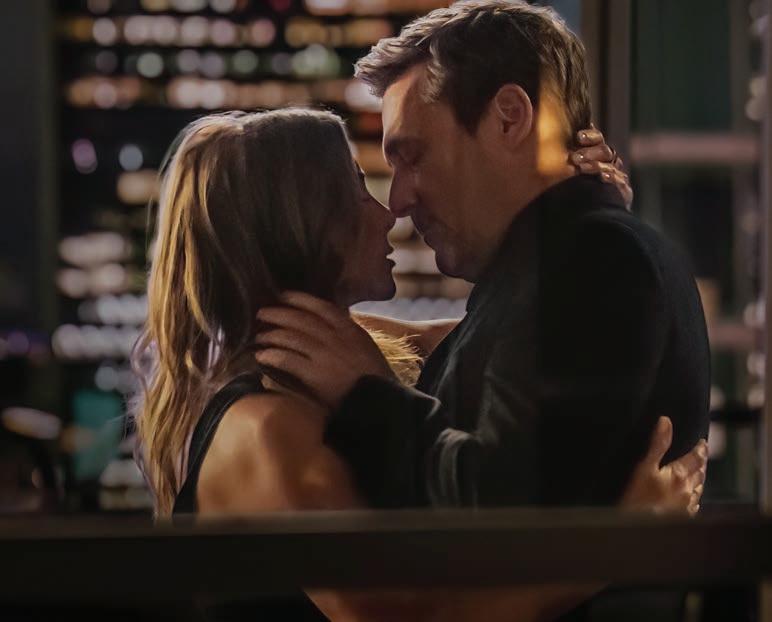


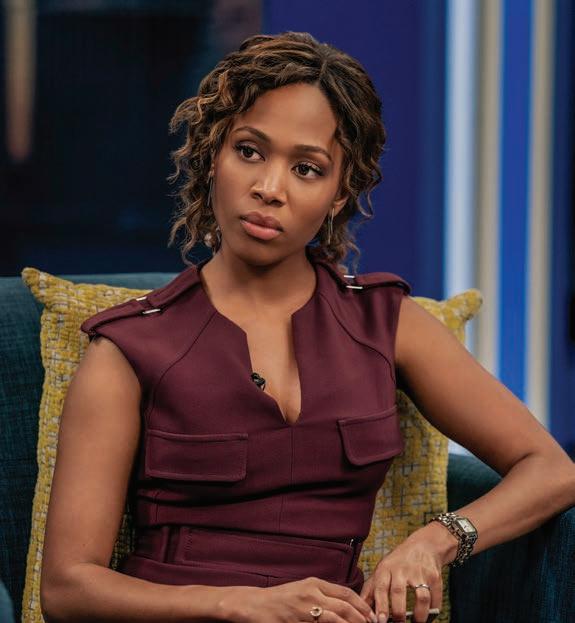


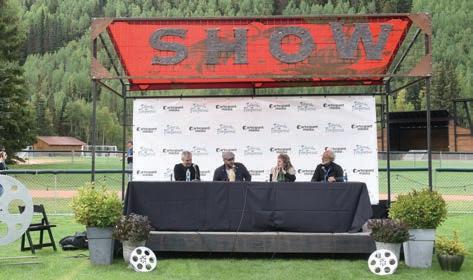
independent movies in some territories.” That’s little consolation for lmmakers and distributors, however.
With the international sales model evolving over time, markets are becoming less fundamental for setting up projects. For a festival like Berlin, which bene ts from a strong adjoining European Film Market, this is also problematic.
Goodridge continues: “I think we’re now experiencing the full impact of streamer disruption and it’s harder to quantify the value of festivals. On one hand, we want to be at festivals, we want those reviews, and that platform, but it feels harder and harder to nd those slots. Berlin is in ux, and Venice could be in ux with the country’s new government, changes at the Biennale and this potentially being Alberto Barbera’s last year due to an expiring contract.”
In the fall, all eyes will be on Venice and whether Barbera will be renewed after doing so much to re-establish the Lido as a major awards platform in recent years. Many festival-watchers are assuming the highly anticipated Joker sequel will choose Venice as its launchpad, for example. If the right-wing Italian government installs a controversial replacement for Barbera, it could potentially put o studios in coming years. The festival has also enjoyed a particularly fruitful collaboration with Net ix—which remains absent from Cannes—and many are wondering how that mutually bene cial partnership may evolve in light of changes at the streamer.
For many we spoke to, the gap between Cannes—and in second position Venice—to other A-list festivals is only increasing.
“There is more and more focus on Cannes,” says Goodridge. “Many of the ‘tentpole arthouse lms’ are going to Cannes.”
Cannes is coming o a bumper 2023 edition with awards darlings such as Anatomy of a Fall, The Zone of Interest and Killers of the Flower Moon all starting out on the Croisette. Cannes chief Thierry Frémaux said this month that the event received more submissions than ever before, and the 2024 lineup is once again an enviable mix of studio titles, A-list arthouse lmmakers and intriguing newcomers.
Goodridge posits: “Cannes has always been
Cannes Film Festival 2024

clever because it understands the value of American cinema at a festival. It’s no coincidence that when you play Tom Cruise and Wes Anderson in proximity to arthouse lms the latter get attention too because the media is in town. Venice also understands that.”
Long-time independent lm PR and rep Charles McDonald agrees: “Cannes is where everyone wants to go. That can be a problem for other festivals. Cannes bene ts because there is such a concentration of media there.”
Matt Carey on North America
The situation in North America has also become more precarious. In particular, funding issues have put signi cant strain on the sector. When 10 programmers abruptly resigned from Toronto’s Hot Docs Festival less than a month before the start of the late April event, citing a toxic work environment, it was yet another alarming headline from North America. Within a day, news emerged that artistic director Hussain Currimbhoy, hired a few months earlier, was also out.
Hot Docs President Marie Nelson warned, absent more funding from the Canadian and Ontario provincial governments, “We’re not sure we’ll have another festival beyond this year.”
Clouds have gathered over the city’s other world-class cinematic event, the Toronto International Film Festival. TIFF lost its longtime presenting sponsor, telecom company Bell, and in December laid o 12 fulltime sta ers, announcing a “strategic review”.
The nonpro t Sundance Institute, which mounts the Sundance Film Festival among other programs, laid o 6% of its sta last summer. This year, the festival trimmed the number of lms in competition by about 20%, partly to reduce costs. In March, Sundance Institute CEO Joana Vicente resigned after two and a half years on the job, a surprise announcement that came as the institute faced a critical October 1 deadline to stay in Park City, Utah beyond 2026. The calculus involves sustainability. Festivals in exclusive mountain resorts like Park City and Telluride, Colorado have become prohibitively expensive. Matthew Prince, owner of the Park City Record, published an opinion piece in Jan-
uary suggesting ski resorts and hotels would be delighted to see the festival quit its winter slot, freeing up accommodations for skiers. He said competition for accommodations between the ski crowd and festivalgoers is already driving up prices. “Post-Covid, [festival] attendance is down,” he wrote, “and sponsors are fewer and farther between… It simply costs too much for the festival and attendees alike.”
Some festivals, including Sundance, adopted a hybrid model because of the pandemic, coupling in-person with an online viewing option. That approach can boost viewership overall, but lowers on-site attendance, reducing vibrancy and economic impact. “For many people faced with the decision of going to Park City, which is expensive and logistically challenging for some, versus accessing the lms online, that becomes a real choice,” says Ken Jacobson, a veteran lm festival programmer who leads the Hot Springs Documentary Film Festival in Arkansas. However, it isn’t all doom and gloom in lm festival world. Film at Lincoln Center is cultivating an audience with year-round programming and its signature event, the New York Film Festival, is thriving. “In terms of ticket sales, it’s the best we’ve ever done,” notes FLC President Lesli Klainberg of 2023’s festival.
NYFF doesn’t give out awards and doesn’t emphasize premieres, countering what might be called the streamer e ect, whereby some festivals give the impression they’re prioritizing whatever Net ix, Apple TV+ or Prime Video want showcased. Audiences know they can eventually see those o erings on TV.
Klainberg says Film at Lincoln Center also runs lean. “We have like a $16-and-a-half million budget, compared to Sundance or other organizations,” she says. (The Sundance Institute’s expenses for scal year 2022, the last year gures were available, were $45.2 million).
Klainberg adds, “We do a lot with a little.”
And for every festival facing an extinction-level threat—Outfest, the LGBTQIA+ lm festival in LA, laid o its entire sta in 2023, the Human Rights Film Festival is closing down, and the Montreal-based Just For Laughs festival cancelled 2024’s event and led for bankruptcy—there’s hope in the example of Full Frame. The documentary festival in Durham, North Carolina came back in April for the rst time since the pandemic. Ken Jacobson summed up the feelings about that festival’s return. “It's great to see Full Frame back in action. They were dearly missed.” ★
28 DEADLINE.COM/AWARDSLINE PREMIERE Festivals
High costs are hurting festivals like Telluride, left, and Sundance.
VIVIEN KILLILEA/MAT HAYWARD/GETTY IMAGES

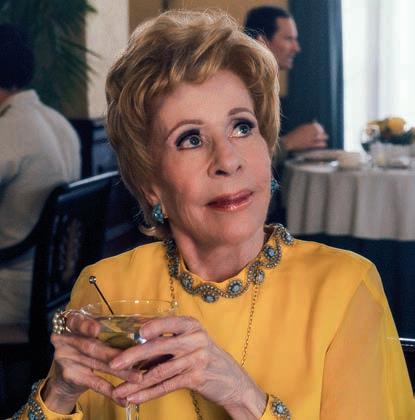

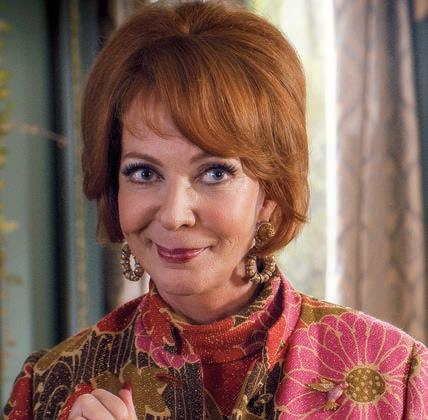


Made in India
It’s the world’s most populous country, with the biggest flm industry but India hasn’t had a flm in Competition since 1994. Until now…
BY ZAC NTIM
The rst iteration of the Cannes Film Festival, planned for 1939, was scuppered when Germany invaded Poland to trigger the start of World War II. But when the festival nally got o the ground in 1946, Indian cinema came out swinging. Mounted shortly after the conclusion of the war, the rst ‘real’ Cannes Film Festival featured competition entries from Billy Wilder (The Lost Weekend ), Roberto Rossellini (Open City), and David Lean (Brief Encounter). In the spirit of post-war peace and reconciliation, the competition jury, headed by French historian Georges Huisman, handed the top prize—then the Grand Prix—to lms from 11 of the 18 countries represented that year.
This included India, with Chetan Anand’s social-realist drama Neecha Nagar, and, for a decade at least, the country was a regular xture in Competition. After Anand came V. Shantaram with Amar Bhoopali (1952), then Raj Kapoor with Awaara (1953), and Bimal Roy with Do Bigha Zamin (1954). But the lm that put India on the map in Cannes was the debut feature by director Satyajit Ray, whose lm Pather Panchali—the rst of his now-famous ‘Apu Trilogy’—was championed by prime minister Jawaharlal Nehru and won the one-o honor of Best Human Document. After Ray’s Devi in 1962, however, the run was broken, and, for a while, it seemed that Shaji N. Karun’s Swaham (1994), a Malayalam-language drama, might be the last Indian lm ever to play in competition.
But now India is about to break its 30-year hiatus with Mumbai-based lmmaker Payal Kapadia’s ambitious ction feature debut All We Imagine As Light. Shot over 25 late summer days in Mumbai, followed by an extra 15 in the rainy western port town of Ratnagiri, the Malayalam-Hindi language feature tells
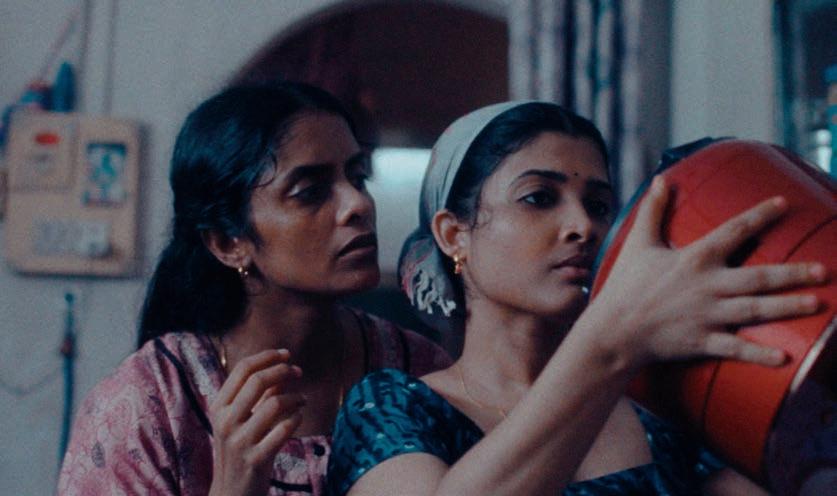
the story of two young women—Prabha, a nurse from Mumbai, and Anu, her roommate. A rare French-Indo co-production, it is a collaboration between the Paris-based producers Thomas Hakim and Julien Gra , of petit chaos, and Zico Maitra of Chalk & Cheese Films out of Mumbai.
All We Imagine as Light is the rst feature from Maitra’s Chalk and Cheese after nine years of primarily producing commercials for television and digital media. Hakim and Gra are a buzzy-producing duo widely recognized across the European festival circuit for an impressive range of short and feature projects. The pair’s last project, The Moon Also Rises, a 24-minute Mandarin-language doc, debuted in Berlin earlier this year.
“I met Payal in 2018 at the Berlinale where she was presenting her short lm And What is the Summer Saying,” Hakim says as he sneaks away from the editing suite where he and Kapadia are completing their nal cut. “As we were

living in di erent parts of the world, it didn’t seem like were meant to meet or work together. But I felt a deep connection with her cinema as if we were speaking a common language.”
Hakim says European development funds like Rotterdam’s Hubert Bals grant, and the Cannes Cinéfondation Residency, allowed Kapadia to reside in Europe, where they could develop their joint practice before mounting the ambitious production in her native India. “The French and European funding system, through CNC, Eurimages, the Gan Foundation, Cineworld, Visions Sud Est, and Hubert Bals, along with private partners like Arte, Luxbox, Condor, and Pulpa Film allowed us to gather the nancing and shoot the entire lm in India, with a 99% Indian cast and crew,” he adds. “In the process, it was important that this co-production stayed organic and didn’t alter Payal’s vision with unnecessary constraints.”

An alumnus of the state-run Film and Television Institute of India (FTII), Kapadia has history at Cannes. In 2017, she screened Afternoon Clouds, a 13-minute project, as part of the festival’s Cinéfondation shorts sidebar. Her last lm, the non- ction project A Night of Knowing Nothing (2021), also produced by Hakim and Gra for petit chaos,
30 DEADLINE.COM/AWARDSLINE GAMMA-RAPHO VIA GETTY IMAGES/PETIT CHAOS PREMIERE Going Global
All We Imagine as Light
From left Satya it Ray in Cannes Uma Das Gupta in his flm Pather Panchali
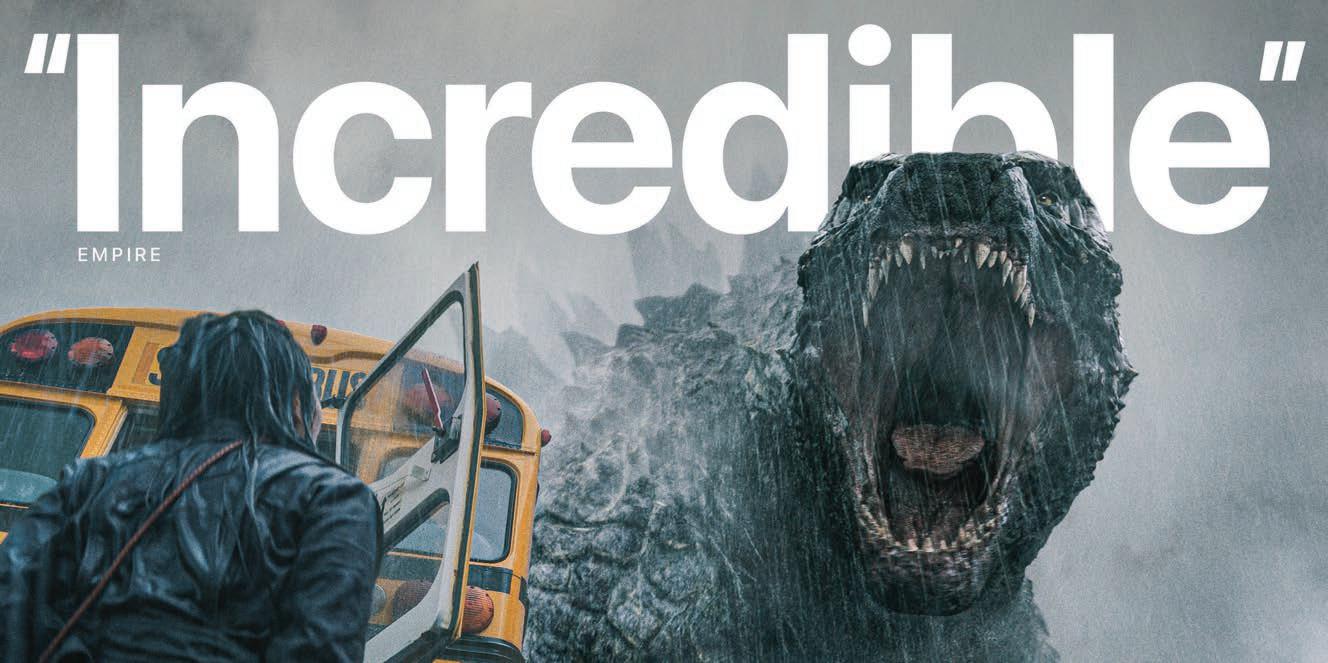
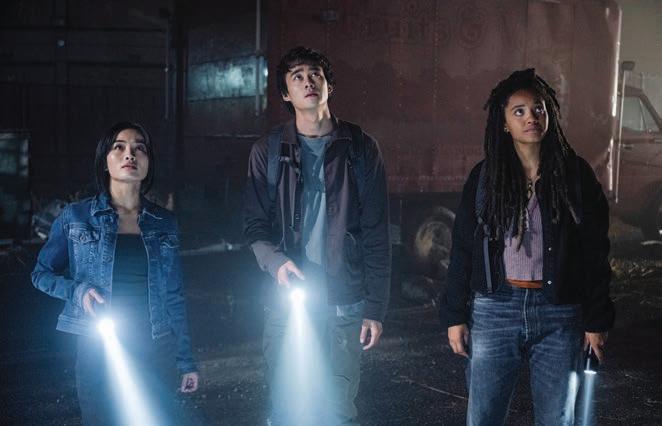

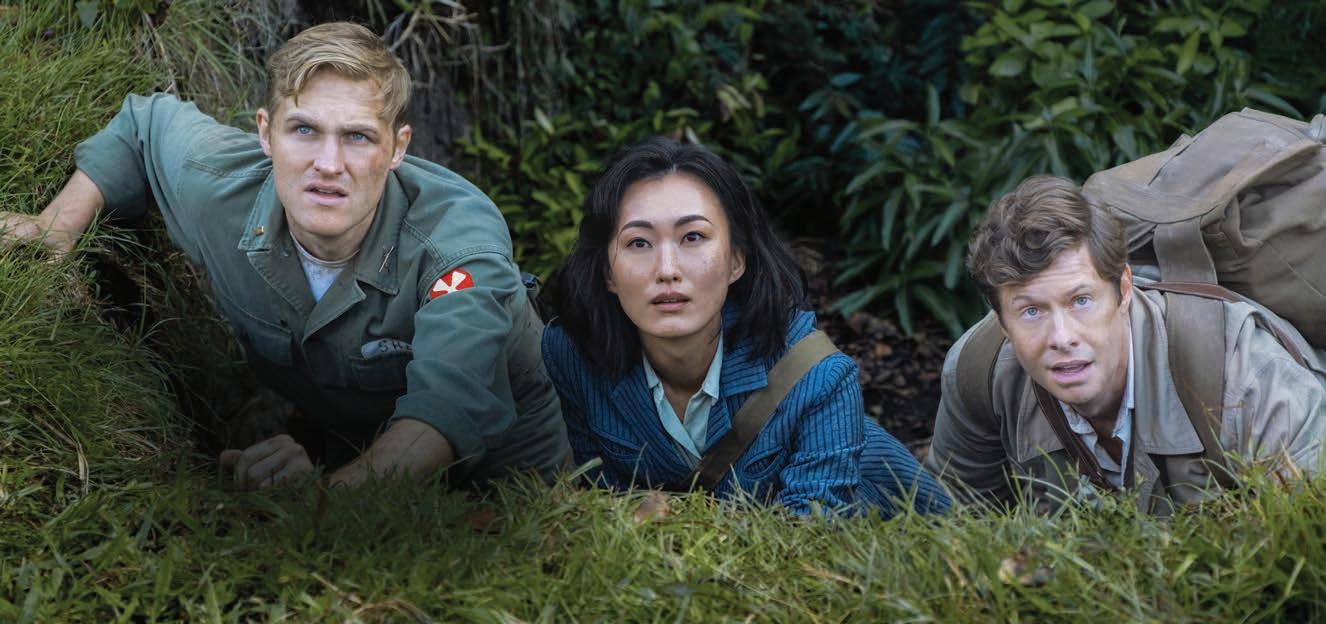

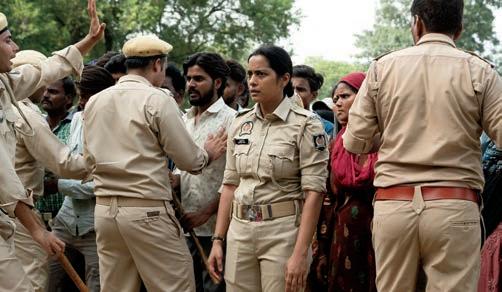


screened in Director’s Fortnight, where it won the Golden Eye for best documentary.
Set mainly at the FTII, A Night of Knowing Nothing is perhaps best described as a kaleidoscopic mix of ction and documentary lmmaking centered around India’s anti-caste movement, as explored through the lives of two lm students who have been forced to end their inter-caste relationship. Kapadia began shooting it in the wake of a months-long student strike at FTII, protesting against the Narendra Modi government’s appointment of TV actor and right-wing politician Gajendra Chauhan as the university’s new chairman.
Similar themes are explored by British-Indian lmmaker Sandhya Suri in her feature Santosh, also set for the Riviera, where it will debut in Un Certain Regard. Developed at Sundance’s screenwriting and directing labs, Santosh follows a recently widowed woman, played by Shahana Goswami (Zwigato, A Suitable Boy), who inherits her husband’s job as a police constable in Northern India. When a low-caste girl is found raped and murdered, she is pulled into the investigation.
Suri explains that the lm was born of her desire to nd a “meaningful way” to talk about violence against women. “I was in India researching and working with various NGOs when I came across an image,” she says. It was a photograph taken at one of the nationwide protests following the notorious case of 2012, in which a 22-year-old physiotherapy student was gang-raped and fatally wounded on a public bus (the anonymous woman was initially known as ‘Nirbhaya’—a Hindi word meaning ‘fearless’—since Indian law prohibited the naming of rape victims).
“The photograph,” says Suri, “was an image from Delhi of a huge crowd of angry female protestors, their faces contorted with rage, and a line of female police o cers, forcing them back. One of them had such an enigmatic expression. I was fascinated by her. What a gulf between her and those protesting, what power her uniform wielded, and what powerlessness not to feel safe as an ordinary woman. To explore this violence and her power within it felt exciting.”
Santosh is Suri’s narrative directorial debut. Backed by the BFI and BBC Film in co-produc-
tion with ZDF/ARTE and the CNC, the Hindi-language lm was shot over 44 days around the city of Lucknow, Uttar Pradesh, India. An alumnus of the U.K.’s National Film and Television School, she’s best known internationally for the feature documentary I For India, which premiered in the World Competition section at the Sundance Film Festival in 2006 and charts her family’s experience migrating from India to Britain in the 1960s. She also directed the BAFTA-nominated short The Field.
“I’ve been developing and researching this lm for almost a decade,” says Suri, “so it’s been a long, slow burn and such a huge delight to be selected after all that to Un Certain Regard for my rst ction lm.”
Also in Un Certain Regard is Bulgarian lmmaker Konstantin Bojanov, who has also turned to India for his Un Certain Regard title The Shameless, his follow-up to the 2017 Barry Keoghan-starrer Light Thereafter. The lm deals with the taboo subject of sex work, telling the story of a woman who ees a Delhi brothel after stabbing a policeman to death. Meanwhile, in Directors’ Fortnight, Karan Kandhari’s black comedy Sister Midnight follows a smalltown mis t (Radhika Apte) struggling with an arranged marriage. The British Council has described it as, “A fantastical punk comedy, a feminist revenge lm, and a revamped vampire movie rolled into one.”
And if the return of Indian voices isn’t enough, All We Imagine As Light is about to make another kind of history: Kapadia will be the rst Indian woman ever to compete for the Palme d’Or.
“The outpouring of love all across the country for the historical Cannes selection has been heartening to witness,” says Zico Maitra. “I hope there will be more and more support from Indian nanciers for independent lms and lmmakers like Payal, and that the success of this lm can be the catalyst that humbly inspires others.”
Kapadia described her selection as “thrilling and humbling” in a statement shortly after Thierry Frémaux’s opening press conference. “I admire many directors selected in this section,” she said, “both in the past and present. It’s an immense honor to be showing my lm among them.” Meanwhile, rushing back to the editing suite, Hakim adds: “We are very proud that our lm brings India back to the main Competition of Cannes.” ★
32 DEADLINE.COM/AWARDSLINE PROTAGANIST PICTURES/URBAN FACTORY/GOOD CHAOS PREMIERE Going Global
The Shameless
Sister Midnight Santosh
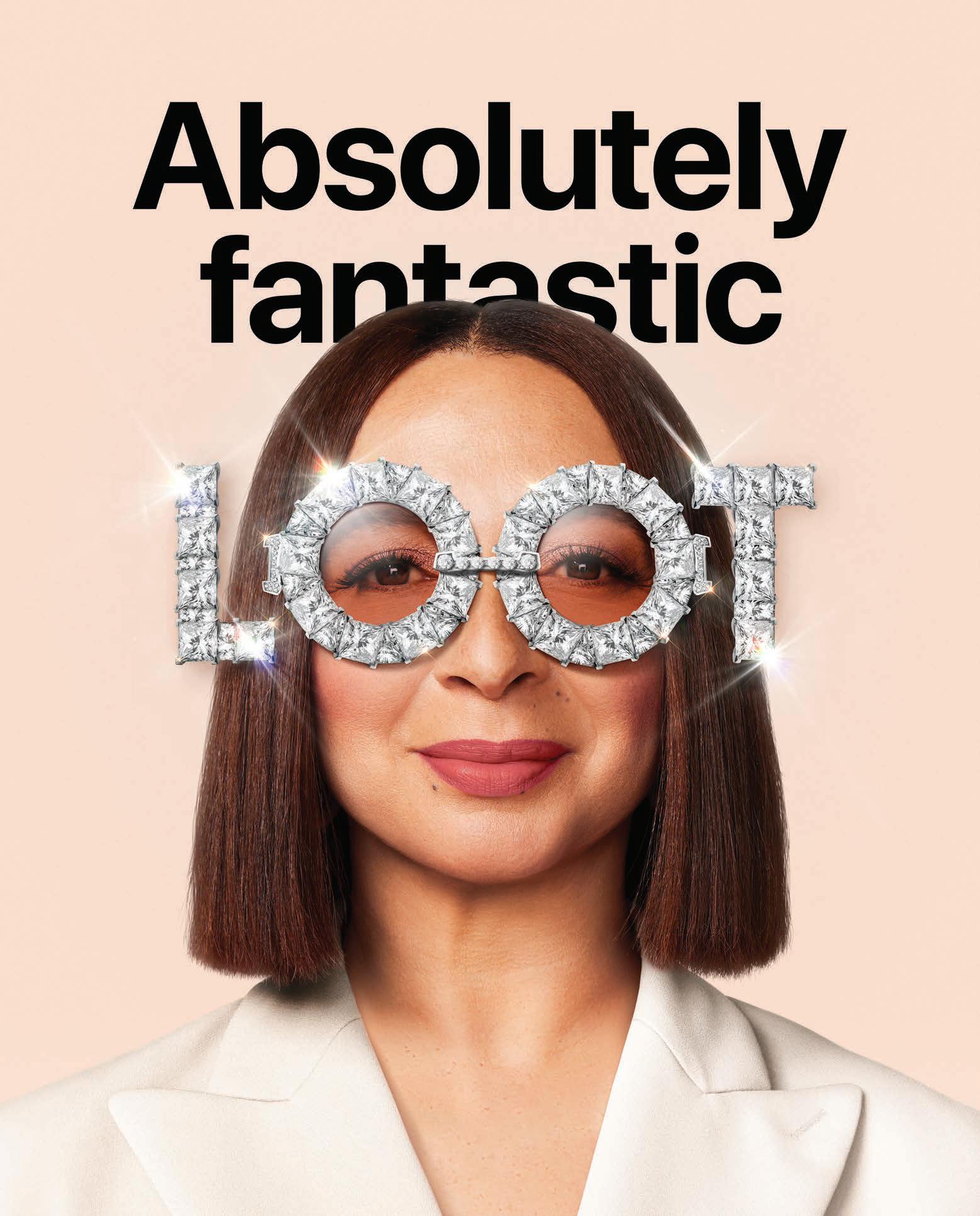

Kevin Costner
Dialogue
 BY MIKE FLEMING JR.
BY MIKE FLEMING JR.





34 DEADLINE.COM/AWARDSLINE
IN
THE
MICHAEL BUCKNER FOR DEADLINE
CONVERSATION WITH SOME OF
HOTTEST NAMES IN CANNES
Troy Story The Shrouds star discusses her frst visit to Cannes 42
Diane Kruger
White Russian Lifting the lid on Limonov: The Ballad 48
Ben Whishaw
Norwegian Would Swapping romcom for drama in Armand 56
Renate Reinsve
Drama Queen Working with Paul Schrader on Oh, Canada 46
Uma Thurman
The
52
Gore Girl The director of horror-comedy
Balconettes
Noémie Merlant
Keeping his eyes on the Horizon while a range war is brewing back on the
ranch


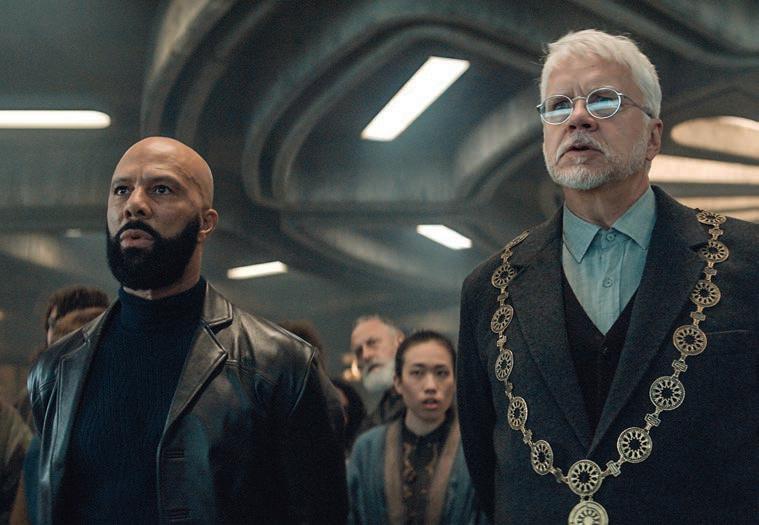

Kevin Costner has turned his Santa Barbara home into a fully- edged post-production facility. In one room editors are cutting the frst leg of Horizon: An American Saga he’ll premiere in Cannes. In another, an editor is working on Part Two. In a third, there is an assemblage of a documentary on the making of the four-flm series. Down the road is the 10 acres of property that Costner put on the table to make his dream Civil War project a reality. Here, he discusses this adventure in serialized storytelling, following a group of characters riding west, and the drama surrounding his pending exit from Yellowstone.
You’ve risked a lot of money here on a flm you’ve ruminated on for decades. How does it feel, having one fnished and headed to Cannes, and a second close to being done?
That’s kind of an interesting question. I will say this to you. We don’t know how much time we have on this Earth. You’re going to drive home. You don’t know if somebody gets on the on-ramp going the wrong way. This happened to a guy I liked, who loves movies and who I’d just talked to, and in an instant he was gone. I’ve lived my life the way I’ve lived it, and if I would be taken tomorrow, and didn’t make the third and fourth, it wouldn’t be as important as the fact that I got to make the frst two. There was a window in to where my heart was. And when people speak of you later, they should speak of your heart. Well, who was this person? I have done what I’ve intended to do, and I’m not Ahab, but I have my own vision of what I want to give people.
This your frst flm at Cannes? I was there once, selling Open Range, but it wasn’t even in a competition. It was just to meet the international buyers. I’ve never been there for a movie. I went on the red carpet once and watched one of the Matrix movies, which was exciting. This was part of what I wanted to do because I knew I would have the international partners, and this was the right movie with me directing to come with.
I would like to come back for the third one. I would love to go to the Venice Film Festival for the second flm but I don’t know if they’d show it if the frst one went to Cannes. Maybe they won’t want a movie that is released in August. But I’ll have a third and fourth flm.
A highlight of our last Cannes Disruptors magazine had you and Francis Ford Coppola discussing why two mavericks were gambling their own money on passion projects others wouldn’t fnance. Now, each of you will be at Cannes premiering these movies. He fnished his? That’s great.
I can’t think of another flmmaker ever, who put $120 million of his own money into a movie like Coppola did with Megalopolis. It won’t be released until the fall, but he’s following the trail of where he brought Apocalypse Now to Cannes and it turned around the negative narrative. The press has been skeptical once again, and he responded by putting the flm in Competition that frst Friday night, four months before the flm opens. This is a guy that has… Brass balls. You know, I’m on schedule right now at $98 million, and when I do the fourth flm it will push me over $100 million.
You’ve had the cushion of your Yellowstone salary. He preserved
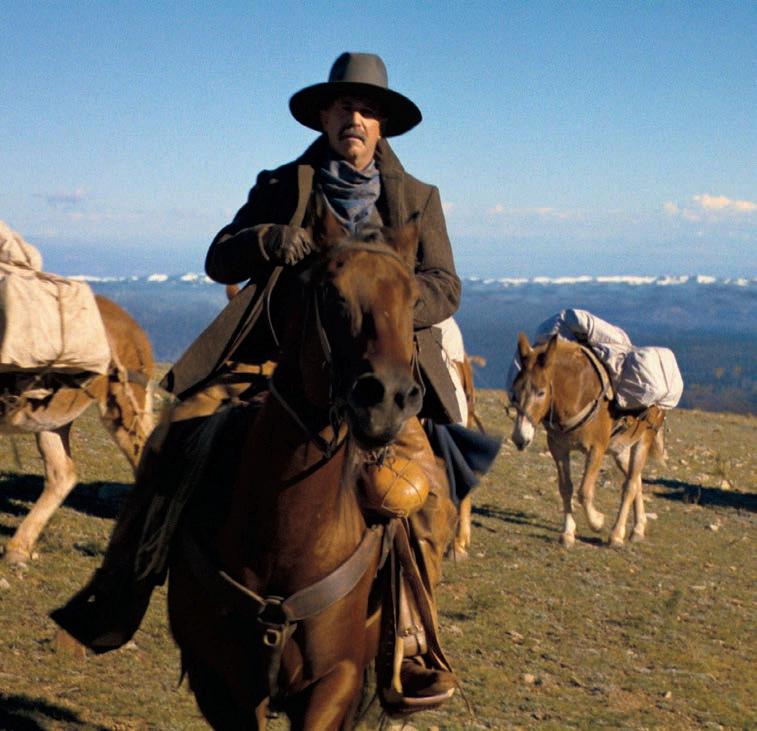
the long-term future of his wine empire by aligning with a larger competitor, and it created a windfall that allowed him a credit line to make his movie. He said, even if Megalopolis fails to earn out, his children will still inherit his vineyard in Napa. You realize, I can do this. My kids might not get the 10 acres [the waterfront Santa Barbara property Costner put at risk]. But they’re going to have homes, and they’re going to have my legacy and the wealth that follows, from my estate. They can make up their own lives. But I’m not going to let anything hold me back. They can make it seem like it’s an obsession, but it’s something he wanted to do. He’s not hurting anybody. He fgured it out. He’s also explained to his children. Mine are so clear about it. Dad, you do what you want to do. We don’t need all these things. We’ve enjoyed all these things, but we don’t need them. They just don’t want to see me just work myself to death.
I feel I’ve made a movie for the people, period. This isn’t a movie from me. I felt like it was my turn in my career to tell a story. This is the one I choose to tell. It’s just my turn.
You could also take an actor-forhire job. Yellowstone
Yellowstone was really good. Hatfelds & McCoys, that was good.
Yellowstone mushroomed into the biggest hit on basic cable, the ratings growing each year. Now, it has imploded in squabbles and rumors about you putting this movie frst and trying to squeeze your windows of availability to fnish your John Dutton character. Where does it stand with Yellowstone? Well, I haven’t felt good about it the last year, what with the way they’ve talked about it. It wasn’t truthful. So now I’m talking about a little bit about what the real truth of it was. I made a contract for seasons fve six and seven. In February, after a two- or three-month negotiation,
36 DEADLINE.COM/AWARDSLINE WARNER BROS./EVERETT COLLECTION
Cannes Film Festival 2024
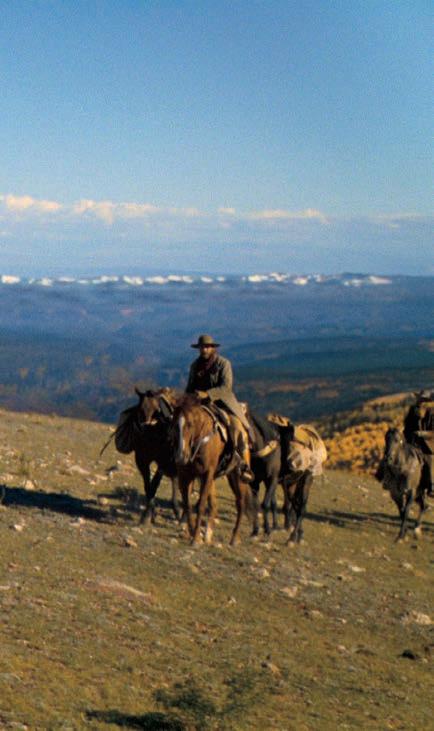
they made another contract. They wanted to redo that one, and instead of seasons six and seven, it was 5A and 5B, and maybe we’ll do six. They weren’t able to make those. Horizon was set in the middle, but Yellowstone was frst position. I ft Horizon] into the gaps. They just kept moving their gaps.
A Gala premiere at Cannes seems so exciting. Who’ll come with you?
Because I’m fnancing this and doing a lot of this myself, in this instance it was just going to be me and Sienna Miller . And then I got to thinking about it and I’m going to bring all the women. I sent an email to all the guys, that I’m taking the six girls. They’re never celebrated enough. And I said, it keeps me from doing this weird political picking back and forth. So, I’m going to take Ella Hunt, and Sienna and Abbey Lee, Isabelle Fuhrman, Native American actress Wasé Chief... Anyone else that happens to be in Europe, I’ll get you a ticket.
But I’m not a studio.
Francis Coppola is going through the same thing; he doesn’t have a distributor yet, so anyone who comes, he has to pay. But for the pageantry and the elegance and the global platform, there’s nothing like the glamour of a Cannes premiere and the long walk up the stairs after the red carpet. I’m so thrilled to be going there. And listen, I don’t want to get down in the gutter with the Yellowstone thing but what I’m telling you is straight up. I have taken a beating from those fucking guys and I know a lot of times where it’s coming from. I just elected not to get into that. But if you know me well enough, I made Yellowstone the frst priority and to insinuate anything else would be wrong. I did not initiate any of those things. They did. They were doing a tap dance and this poor guy was also having to write so much. And I don’t know why they didn’t stick up for me. You asked me the question, I’m going to answer it. I don’t do press outside my movies. I don’t live in the press, in between. Now I’m promoting my movie. I could say “no comment” all the way through. I won’t say my life is fair game or that any questions are fair game, but this is a realistic question. I will address it. They should have known that there was going to be an opportunity for me to say something. I didn’t have to answer the slings and arrows over the last year and
a half, because I’ve just been busy working. They’ve been pretty slick about keeping their hands off; nobody was ever on the record.
Coppola has endured his share of that, as people who haven’t seen the movie tried to paint a false picture of an out-of-control movie that can’t get a distributor. Past accomplishments don’t stop people from taking shots at him, and you.
No, they don’t. And for Francis, there’s that line he’s got in the third Godfather, just when I’m out, they suck me back in. Neither one of us should be surprised. I love how people who have seen it are responding to Horizon. You were the frst. I hope the same for Francis, but we’re not immune to just being picked at.
If you worry too much about this, can’t it make a flmmaker fearful? Is it best to trust your gut and collaborators?
The misnomer of collaboration is, if you don’t take my idea, you’re not a good collaborator. I don’t think that ies. Collaboration is about an environment where you can say what you want to say and the other person will sincerely consider it. But somebody has to protect the rhythm of the movie. You can never make decisions out of fear. You can think, I feel like I’ll lose my audience here, but if the scene plays, I’ll get them back. I watch time, I’m agonized by it. It’s not like I’m out there going, I don’t give a shit what people think. That’s not
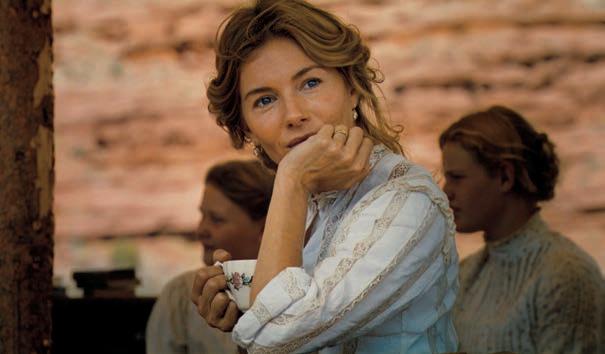
who I am. I focus frst on how the movie looks and then I worry about trying to do as much as I can with it. I screened this movie at 3:15. First one was 3 and at frst I didn’t know how to get fve minutes out of that. Then I took it to 3:29, then 3:24, then I got it to 3:15. I screened that in Vegas, and then got down to 3:06. I didn’t think it had an inch more to go. Then I dropped beneath three hours. Got to 2:50, now I’m at 2:45, but I’m going to put some back.
Sounds like a good length for the frst of four movies
Oh, shut up. I don’t care if you think 2:50 is the perfect length for my movie.
Last year when Marty Scorsese was on the cover of this magazine, he was troubled that his 3:26 minute running time became a big part of the narrative of the flm.
Well, it ain’t going to be 2:45, Mike. I’m going to put some stuff back in that I need to put back in, and I’ll see if it works. But listen, if I had the same feeling at 2:30 that I have at 2:45, I’d make it 2:30.
You’ve described my personal weight loss fantasy. If I could get down to 175, I might say that putting back a couple pounds would be best. ut frst you got to get down to 175, and that’s where my plan fails.
I get what you’re saying, the hardest part was getting to 2:40. And I was teasing you when I said to be quiet. I do think about all this, because I own it. Would I like a screen time that allowed me an extra show each day? Nobody would like that more than me. When you put your money in like I have, like Francis has, you need to know what we like. We are just dealing with our own UFOs. We see something and we can’t back away from it.
Does it feel like a little part of you dies, with each few minutes you cut from the flm? ow hard is
37 DEADLINE.COM/AWARDSLINE
Horizon: An American Saga
Sienna Miller


that dance in a sprawling flm about Manifest Destiny?
I remember the frst assemblage of Dances with Wolves was fve and a half hours. It’s painful but there is pleasure. You don’t think you can and then you realize you can. Dances I cut two and a half hours out of it because I knew it wasn’t working as well as it should. I’ve got Horizon where I want it.
o, you have locked the frst two flms?
The second one is not locked. I’m still looking to cut some things. It’s that number you seem to fucking be in love with.
When do you plan to start the third flm?
I wanted to start April th but I’ve got to fnd the money. I wanted to start May th but I needed to fnd the money. I’ve moved myself to May 3th and I’m going to start my movie. I don’t give a shit now. I’m ust going to start it.
Do you worry, what if the audience doesn’t come back for the other three installments? Nobody has done what you’re doing here, not on a movie screen anyway. Who doesn’t come back?
The audience.
Well the reality of that is the flm lives and whatever are the viewing habits I own it for the rest of its life. Would you want to own these two pieces for the rest of your life? Hell yeah. And every fve years license them around the world. Relicense them here in America. The difference is I own that because of the risk I’ve taken. Why is Vegas there? It’s for all the people that lose to the house. Why are studios there? It’s because those movies continue to make money well beyond their opening weekends.
Even with the death of the DVD? Death of the what? DVD is not dead at all. That’s what they’d have you believe. Maybe it’s not making the same amount of money but ust try to go ask for that from the studio. They won’t give that up. A lot of people that like my movies they can’t get to a theater and they’re waiting for that moment. You can’t make your flm for the opening weekend. You have to make it for its life. So I’ll go to Cannes it’s a great honor then do Jimmy Kimmel and then I’ll y to my set and start directing.
I’m not a risk taker, but I admire those who bet on themselves. Neither of us is Ahab. I frst saw obsession in my life when I saw Moby Dick with Gregory Peck. I was too young to articulate what it meant but I was afraid of that ugly man after the white whale. There was this prize he was determined to win and it turned into something more. He was willing to take men down. And the difference with Francis is and the difference with me is we may have a bit of Ahab in us but our obsession isn’t such that we would
take other people down. We put ourselves on the line we shoulder it all. Other people get paid. For me it’ll be two or three years without a salary from Horizon. Try it see how it feels.
No thank you. Try doing that with a lot of money going out. He’s not crying to anybody. I’m not crying to anybody. But if you think it’s easy try it.
With Yellowstone, I thought it had gotten to a place where your needs for Horizon meant you were not going to be there regularly enough. And when you came, those other actors were upset they would have to do scenes that would be spread through future episodes… That’s not true. There were blocks of time that we didn’t get 0 episodes done. Basically we were starting in April and May and we’d usually go through August. We’d do 0. We didn’t even get 0 done during that time. I only worked 3 days. So that’s bullshit. That’s a lie. That’s not correct. They sent me away for seven days to go to London to go to England during Covid to do promotion . They made the contract and they picked the days.
o, in your mind, you lived up to what they asked?
Not in my mind in the truth of the contract. I lived up to it. In fact I gave them of my days for this B thing in November and December. What they called B. The whole month of March.
So, you shot that?
No. I didn’t shoot B. There was no script. And then things imploded. You’ve been reading one version of this behind-the-scenes drama for a year and a half. I left my movie to be on time for them for B. I left exactly when they wanted and it made it hard on me. It turns out they didn’t have the scripts for B. They needed four more days ust to complete the frst eight episodes. I left early
to give them what they needed to have a complete eight and I felt bad that the audience didn’t get 0. They didn’t have the scripts for anything else. So what you read in the end was that I said “Well look I’m doing my movie. If you want me to work a week because you want to kill me or whatever else I can give you a week.” I really didn’t have that week to give them but I said I’ll do that. And then they spun that into I only wanted to work a week.
So, this was a gesture on your part, not an ultimatum?
I’m trying to help you. You haven’t been able to meet the deadline either on the frst season completely the B thing or the sixth season. There were no scripts. I said “Look if you want to end this elegantly the best I can do is give you a week. And if you can fgure out a storyline ” I’m usually working six or seven days per each whatever they are. And they took that and a source on their side spun that into well he only wants to work a week for a whole season. Do you think that’s who I am? I’ve never missed a day of work. I’ve never left before fulflling my contractual obligations.
Taylor Sheridan has been writing a lot of shows…
That is fne but they were silent and that bothered me in the world of how you do things. Why don’t you stick up for me? I went and sold this thing for you. I was going to only do one season. I made it for three. I fulflled three. So I went from one to three then I did a fourth one for them and they wanted to do three more. So I made the contract to do that. They imploded. I had a contract to do fve six and seven. I was contracted to do that. There’s nothing I could have done to get out of that nor was I trying to ust fgure out how when we started. When we fnished I wanted to do Horizon. It all happened because they shut down one whole season didn’t tell anybody and I didn’t
38 DEADLINE.COM/AWARDSLINE WARNER BROS.
Sam Worthington
Horizon: An American Saga
Outstanding Limited Series


FOR
YOUR CONSIDERATION
work for 14 months.
Why did they shut down?
Didn’t have the scripts. And they wrote these other three shows. They don’t ever talk about that. And all they did was remember we were releasing the series in June, then it moved to October. They covered by changing their release pattern. That time was about a 14-month period. I said, “I can’t ever go through that again, where you shut down for over a year and I don’t have something in line to do.” All I did was protect myself, but I didn’t put myself in frst position over Yellowstone. I flled the gaps. Do you see that?
I do.
There were three negotiations, Mike. I didn’t initiate any of that.
It would seem something that could be worked out if only you and Taylor Sheridan sat down man-to-man and hashed out all this acrimony…
Well we did on the frst one and that’s why I signed it to do February. And then we weren’t doing that, and [Season 5] went from 10 episodes down to eight. So don’t talk to me about man-to-man. I was straight up with him and he said what we would do and I believed him and we didn’t get there.
What happens now?
I’m very open to coming back. If they’ve got so many other things going on, maybe this circles back and it’s a really cool two seasons. Or end it, if the writing’s there and I’m happy with it. I’m open to that. But I took a beating over these guys not speaking up for me and allowing crazy stories to come out. I’m not happy about that. But if the writing is there, I will be there too. They had frst position. I didn’t do Horizon because I was tired of doing Yellowstone. That’s a bullshit story. I didn’t do Horizon to compete with Yellowstone. This is something I’ve had a long time.
Seems like that happens when
it comes down to an auteur showrunner. T followed frm hourlong timeslots, until Kurt Sutter told FX some of his Sons of Anarchy episodes ran long. Suddenly, an hour stretched beyond that. Taylor Sheridan has done a lot of other shows, including the epic Yellowstone spinoffs 1883 and 1923. That is a lot of output for one writer, while remaining the main writer voice of Yellowstone… He should be the main voice of it and all those other things. But everybody lives with a contract and they were comfortable signing. Two companies have to sign the contract they signed with me. I’m a single person. I signed the contract. And I’m not a person who is in exible every season we didn’t start on time and every season we went over. I dealt with that through seasons one, two, three and four, and didn’t say a word. When they canceled a whole season to make room or whatever, I didn’t even complain about that. I’m only talking about it now. Five years ago, when they did that, I knew I had to be in position that if they ever did that again—if you do something once you’re capable of doing it again—that I would know what I was going to do. And I wanted to work more than once a year. And I’d only worked at that
point in time once a year and I wasn’t used to that.
If you aren’t going to really start when you say you’re going to start and you’re going to fudge at the end—I understand production, I get that perfectly. Writing is really hard. I get it. But in my instance, I have real obligations. I had 400 people waiting for me on August 1, and I worked a nine-day week to help them as much as I could. And then I went to do my thing with 20 days of prep or 15 days of prep. Try making a movie that way.
They are making deals with your other core castmates, Kelly Reilly, Cole Hauser, Luke Grimes, es entley. nd then fnishing Yellowstone before starting a new chapter.
I think that they should do whatever they want to do. Am I open to coming back? I’ve never been in a position to tell them what to do. I can only do what I can do.
ou haven’t seen the fnal scripts? I’m not involved in any of that stuff.
I remember you saying that on Dances with Wolves, there was a director who was going to do it, who didn’t want to have your John Dunbar character on horseback, riding across the feld, and drawing their gunfre.
It was a major reason you made your directing debut. That must have been tough to hear. He didn’t want the whole Civil War thing. And the direct result of that scene was, he was trying to commit suicide. And in the narration he says, in trying to commit suicide, I was elevated to the status of a living hero. And so that sets the stage.
That living hero kept his leg when his defant move was noticed by Union Army commanders, who put their best surgeons on saving a leg that lesser doctors were going to amputate. The general said, we got a man here whose leg needs saving. What happened is there are three or four lines, very sparse, in 10 minutes. It was so easy for that particular director to say, let’s just start with him in the middle of nowhere. I listened to that, coming out of somebody’s mouth who didn’t want to hurt the flm and was coming out of their own experience of dealing with studios. Why should I shoot that? They’re going to want it gone anyway. What mentality was I dealing with? I can’t tell you. But that was too much for me. So that’s a no. In my mind, that wasn’t being stubborn, I guess, unless I was being stubborn for the movie. ★
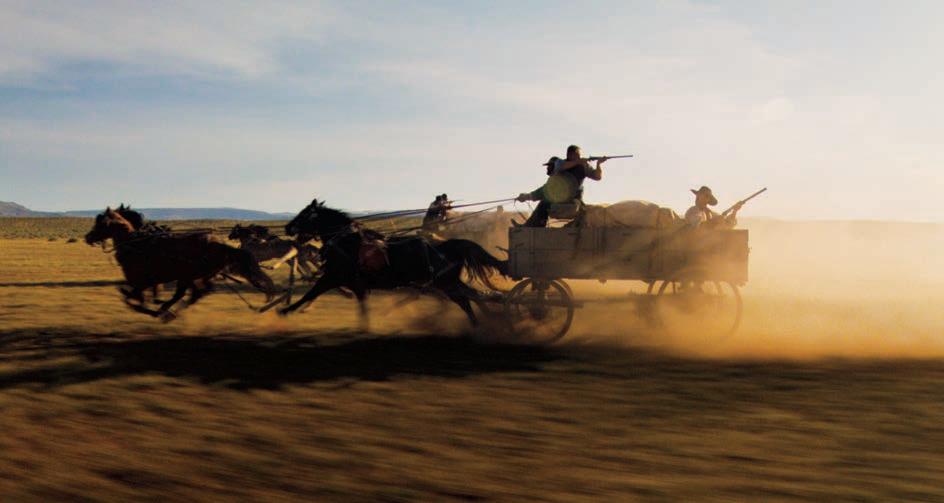
40 DEADLINE.COM/AWARDSLINE WARNER BROS.
Horizon: An American Saga

“A COMPLEX, INTIMATE, CAPTIVATING AND VISUALLY STUNNING PORTRAIT OF ANGUISH AND DESIRE.” VARIETY
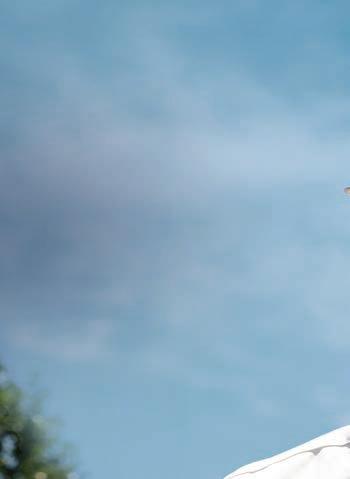
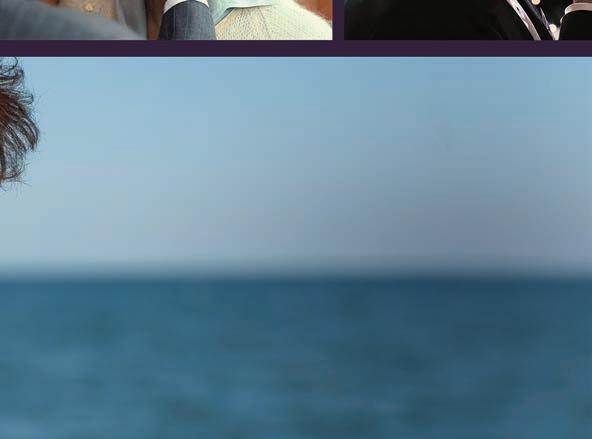
“A DEVASTATING LOVE STORY FOR THE AGES. MATT BOMER and JONATHAN BAILEY deliver the



FOR YOUR EMMY ® CONSIDERATION OUTSTANDING LIMITED SERIES
best
THE A.V.
performances of their careers.”
CLUB
“THE BEST REVIEWED LIMITED SERIES OF THE YEAR” 2023 ROT TEN TOMATOES GOLDEN TOMATO AWARD
Diane Kruger
The star of David Cronenberg’s latest body horror The Shrouds explains why she prefers satires over slashers
BY DAMON WISE
Strange but true: after 15 years as an international movie star, propelled to fame in 2002 by Ridley Scott’s historical epic Troy, German-born Diane Kruger won the Best Actress award in Cannes for her frst-ever performance in her native language. Fatih Akin’s provocative 2017 drama In the Fade, in which she played a widow consumed by revenge after a terror attack, revealed an unexpectedly tough new side of her glamorous persona. This year, she stars alongside Vincent Cassel in David Cronenberg’s The Shrouds, a very different, and— for its director highly personal flm about the very same sub ect love and loss.
How did you get involved with The Shrouds?
I got a call saying that Léa Seydoux had fallen out of his flm and that David Cronenberg wanted to offer me the movie. I just got the script, and David just happened to be in Paris, so we met and, well, I’d say we immediately hit it off. We talked for hours about the script and why he wanted to make this movie. To be honest, I felt very moved that he asked me to be—basically—his wife in the flm.
Are you a fan of his movies?
Yeah very much so. I mean to a point where I think, even before I was an actor, I was aware of his flms without knowing who he was. I remember as a kid watching The Fly and being completely terrorized. I think The Fly, along with the frst vampire movie that I ever watched, was in my head forever and I was e ually terrifed and fascinated with that. So I feel like he’s always been part of my subconsciousness. I ust think that, as an actor, you always look to fnd a director who can completely immerse you in his own universe. There’s a lot of movies
out there these days, but I think it’s very rare to invent a whole genre for yourself as a director. Any actor would drop everything to get the chance to work with someone like that.
What can you say about the part, or parts, that you play?
I play Vincent Cassel’s deceased wife, who you see in various stages of her illness. She’s passing away from breast cancer. You also see me as her sister. And then I’m also playing an avatar that Vincent’s character has created in her memory.
How did that work out for you?
The most diffcult part was the wife, because we only see her in ashbacks and those scenes tend to be quite emotional, for obvious reasons. I don’t know how to explain it but... Knowing that the story was based on a personal story made it a little bit… I don’t know. I felt both of us were kind of tiptoeing around each other a little bit in those scenes, because I felt like David was reliving a little bit of his life every time I came on screen. But the sister was very fun to play. She’s very eccentric

as you’ll see in the flm and very very very different.
What conversations did you have with avid about the flm?
It obviously deals with ideas of grief and loss, but his flms are also quite funny too…
We talked at length about that about grief, what it means to be married for someone for so long. One of the things that struck me the most, and I think Vincent actually says it in the movie, is that when his wife passed… He had been accompanying her
42 DEADLINE.COM/AWARDSLINE
TRISTAN FEWINGS/GETTY IMAGES

“A BRAINBREAKING REVELATION.”
“THE WEIRDEST, MOST UNFORGETTABLE SHOW OF THE YEAR.” ENTERTAINMENT WEEKLY “ONE OF THE BEST SHOWS OF THE YEAR.” THE NEW YORK TIMES, VANITY FAIR, TIME, INDIEWIRE, ELLE, ENTERTAINMENT WEEKLY, THE NEW YORKER, ROGEREBERT.COM
TIME FOR YOUR EMMY ® CONSIDERATION OUTST ANDING DRAMA SERIES
through the entirety of her illness, so he knew that she was going to die. And he said that when she passed, the worst part of it was that he really wanted to jump into the coffn with her because the thought of her being alone in death was almost impossible to take and he had this incredible urge to just jump in. That really struck me.
So the movie’s very much about that about losing someone even though you know you’re going to lose them. About growing old with someone, and what that actually means, what love actually really means, that sort of love you had with the physical body of someone, even if you know they’re dying of a sickness, an illness, the physical part we don’t talk about very often. The movie in a very Cronenberg way talks about that. It’s also very funny because at moments it’s kind of absurd. Especially, the sister character has true moments of absurdity. So for me it was kind of a fun balance.
Was it a dark part to play? Did it weigh heavy on you?
It did, whether he meant that for me to carry that or not. Obviously it’s very personal to him, and maybe I made more of it than I needed to. But David is a very... I don’t want to say he’s detached, because he’s right there with his actors but ust like his flms there’s a step back from reality from what’s actually happening
on the set. But he was also very specifc about character traits and very sure about how certain scenes needed to be done because they are based on actual things that happened to the both of them. It’s a little bit strange for an actor to step into that kind of bedroom intimacy with someone who’s the survivor of that situation.
And how was Vincent Cassel as your husband?
Vincent was a wonderful partner. It’s kind of the frst time that he’s had a lead role in English, so I know that he worked a lot on that. There’s a lot of dialogue, and he worked with the dialogue coach for many many months before we started flming. David doesn’t rehearse really; he doesn’t do table reads and all that kind of stuff, so Vincent and I would meet pretty much every night before we had a big scene together ust to go over dialogue and such.
Would you describe The Shrouds as a genre flm?
Yeah but it’s the Cronenberg genre, right? It’s less gory than the last one he did but it defnitely has that tone. It’s kind of hard to defne what genre it is. It’s not a horror movie by any stretch.
It’s hard to identify themes and genres in your work. You’re a very uid actress
The only genre that I don’t really like for myself is the pure slasher

type of movie. I’ve been offered the odd one in my career but I ust don’t like watching them, so I’ve naturally never signed on to one. Although who knows it might be fun to do one. I think I tend to do a lot of flms that are satire. I love a comedy. I haven’t done many but they’re really fun to make. I feel like I’ve done one and a half. I always like to fnd roles for myself that sort of have an undertone of something light and comedic.
Which are the one and a half?
Well there was a French flm with Dany Boon [A Perfect Plan, 2012], many years ago. He’s the king of comedy in France, so it was kind of easy to do that with him. And then there’s a part of me that feels like Inglourious Basterds is very funny. There are defnitely funny scenes in there.
peaking of which, you came to Cannes with Inglourious Basterds in . ow many times have you been to the festival now?
I haven’t counted but I’ve been a few times. Really, my career started in Cannes. In fact, the very frst time I went to Cannes was probably the most extravagant one. I’d just made a French picture by Guillaume Canet which was called Mon Idole [2002], and I was going to be given the Chopard award for Best Newcomer. I was flming Troy at the time, which was only my second flm on location in
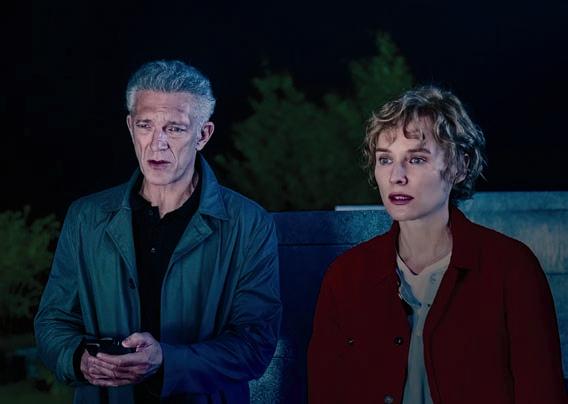
Malta but the producers wouldn’t release me to travel to Cannes. So, I guess Chopard sent a small private plane to Malta to get me, after I wrapped that night. I was wearing a wig for Troy and so, in the plane on the way to Cannes— without electricity—this poor hairdresser was trying to get the glue out of my glued-back hair. I ust remember it being absolute craziness. And then, wearing a dress I’d never even tried on before I went from wherever the plane landed—I guess Nice— straight to the ceremony, and then I went back the next morning to set. I’ve never had that experience again.
hat do you remember of that year at the festival with Inglourious Basterds? Being very nervous because no one had seen the movie, right? Quentin was cutting it, literally I think until the day before it screened. I know that they’ve changed things now but at that time, Cannes would screen the movie for the press frst and then afterwards was the photo call and then the press conference. Which is great but also terrifying at the same time because sometimes you get to the press conference and you already know that your movie’s not good or that nobody likes your flm.
Anyway, so we get to the photo call and all our agents, managers... Everyone is rushing to meet us, coming out of the screening saying, “It’s great, it’s great! People love it!” So, we’re all super energized for the premiere [laughs]. It’s so hard to watch a movie for the frst time anyway let alone watch it with an audience at Cannes, and then, of course, as soon as the lights come on, Quentin was looking at all of us to see if we liked it. So, immediately, there was all that confusion, of us wanting to jump into his arms and congratulate him, and people liking the movie. But it made for the best premiere party that I’ve ever been to, for sure. ★
44 DEADLINE.COM/AWARDSLINE MAGNOLIA PICTURES/CINETIC MEDIA
From left: In the Fade; The Shrouds.








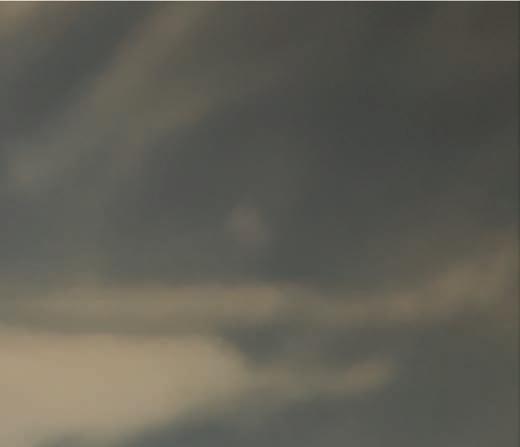
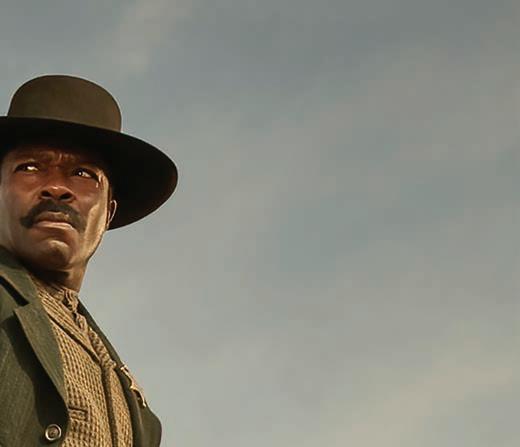




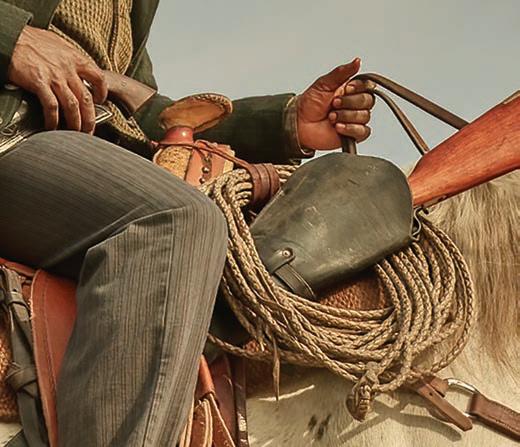




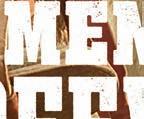



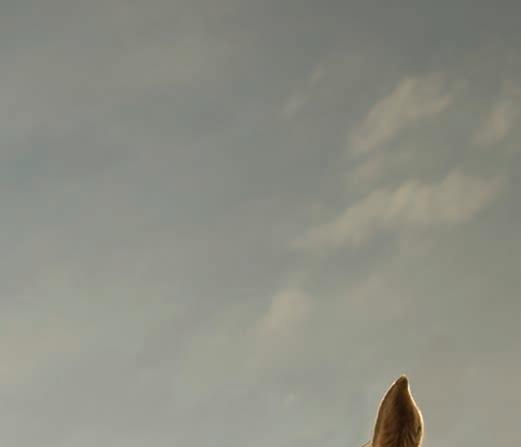









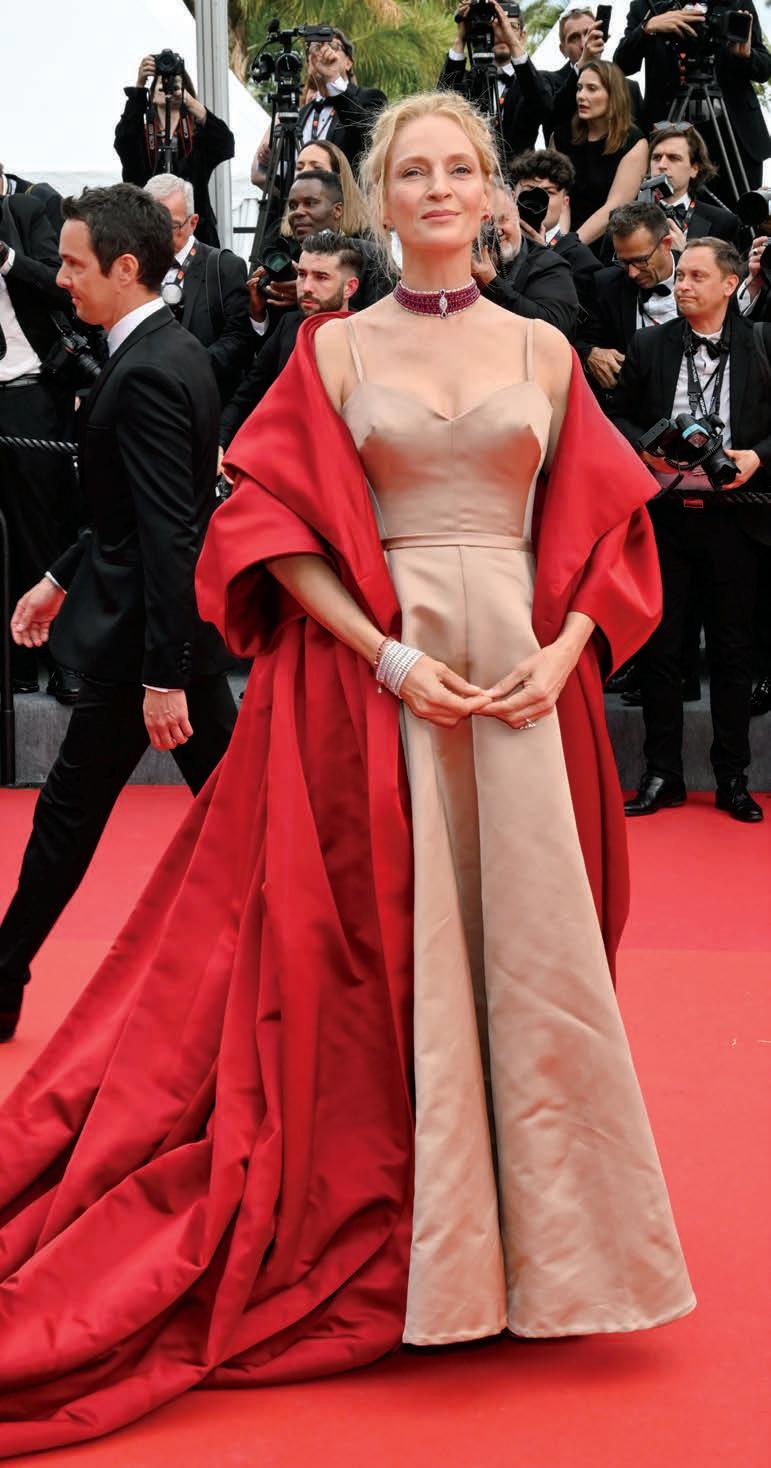
Uma Thurman
The Bride plays the wife of a dying documentary filmmaker in Oh, Canada, Paul Schrader’s slippery meditation on memory and regret
BY DAMON WISE
Uma Thurman has been to Cannes more times than she can remember, either to pledge support for the glamorous annual charity event amfAR or with flms as diverse as the genteel Merchant-Ivory period flm The Golden Bowl (2000) and Quentin Tarantino’s ultraviolent Kill Bill: Volume 2 (2004), in which she reprised her badass role as The Bride. The flm that propelled her to stardom Pulp Fiction, won the Palme d’Or there, and Thurman hasn’t forgotten what it did for her. This year, she's back with Paul Schrader's Oh, Canada the kind of smart charcterbased indie on which she earned her spurs.
How did you get involved with Oh, Canada?
Really I ust got the call through my agents to read a Paul Schrader script and meet with him. I’m so glad I did. I love Paul Schrader.
Did you know him already?
No I didn’t know him. I mean I’ve certainly been in a room with him here or there. But no I didn’t know him. Now I do and I’m all the better for it.
What grabbed you about it?
The script. I think it’s probably more clear flmed than it was on the page. It was such an unusual read. I mean I’ve read some of the more unusual scripts that have been made in my lifetime, and this defnitely was very very unusual.
How would you describe it?
It’s a reverie of a man in the last moments of his life, reconstructing the narrative of what mattered to him, reevaluating who he is—and was—and the substance of a lifetime. But it’s also a very lyrical, sort of loosely knit, poetic, kind of dream-state illusion. So written down I found it more confusing than it is on the screen. The
cinematic hand of Paul, of course, carried the day, as far as bringing this sort of illusionary dream together into something that you walk away from with the strong impression of a story.
Is there anything you can tell us about your character?
I play a woman who has dedicated her life to documentary flmmaking. She married her professor, who’s played by Richard Gere. She went to work with him and found much success. So, she’s married to an older man that she passionately adores, and who’s dying of cancer. He’s sort of her mentor, partner, and husband rolled up into one. She’s being present there with him as he processes the end of his life. I don’t think there’s a spoiler alert about the fact that it’s the end of his life.
What kind of shoot was it? It seems very intimate…
Well ust the presence of a master like Paul Schrader on a set of any size is as distinct as I don’t know a warm wind. It’s like the wind that hits you when you get off a plane in the tropics. There’s only one thing of its ilk, and he’s kind of a
46 DEADLINE.COM/AWARDSLINE MICHAEL BUCKNER/GETTY IMAGES/OH, CANADA LLC/MIRAMAX/EVERETT COLLECTION

master like that. You could really be anywhere you can’t miss it. Watching him put this piece together I had a very strong feeling that that this was very personal to him knowing that he was very good friends with Russell Banks the author of the book it’s based on. I forget exactly how it worked out but I know the book was meant to be called Oh, Canada but it was published, at least in North America, as Foregone I believe. You can fact-check me laughs . I think I’m right but I’m not pigheaded about rightness.
But anyway there was something very sweet and sad and beautiful about their friendship Russell and Paul were very enmeshed intertwined close friends. I believe this was the last book that Russell Banks wrote as he himself was kind of going through or into the window of, a similar period of his own life and end of life. I wouldn’t be able to say whether Paul would call him a best friend or one of his best friends, or one of his closest friends but to me it felt like a dear friend expressing the last work of a very dear friend contemplating a life in fction. That’s a long explanation but I think that, to me, is what was very beautiful about it.
hat kind of discussions did you have with aul about the movie? It seems there’s a lot to debate there, a lot to talk about. Oh I wouldn’t be able to vaguely answer that. I read the book and talked to Paul and kind of understood his feelings about the author. I didn’t fnd that there were things to debate with him about it really. It’s one man writing about
another man’s lived experience, told in a fctitious narrative.
It’s interesting, though, that it’s about a documentary flmmaker who’s debunking his own myths. It’s about getting at the truth and asking, what even is the truth?
Your character says at one point, I know everything I need to know. hat does that mean, to you, in terms of that idea of reality versus flmed reality?
Well, I think that, for that character maybe there’s an underlying theme an idea that there are truths and then there are many facts, and sometimes facts can be contradictory but there are still perhaps some higher truths that remain unabused by even con icting facts. I think the character of the wife saying “I know everything I need to know ” is her way of saying “Yes there’s tons of contradiction but I know that I am loved, and I do love, and I was loved.” So her confdence in this greater truth doesn’t mean... It means she’s unbuffeted by the things that contradict it the facts. Pause . Perhaps
ad you worked with ichard ere before?
With Richard? In 1991, when I was
a kid I played Kim Basinger’s younger sister in a movie called Final Analysis
ut you hadn’t worked together since then?
No no. So that’s funny. It was a very beautiful cast. There’s Michael Imperioli who’s great. We went to go see his Broadway debut last night Enemy of the People. Basically Paul does attract very inspired and inspiring people. He has very good taste.
In people or in material?
In all things. His legacy is basically one of the main vertebrae of the backbone of American cinema.
e never makes the same thing twice. ell, he does sometimes make similar flms, but he doesn’t rest on his laurels. o you have a particular favorite of his? I don’t know. We were talking about Cat People last night. I think the fact that he doesn’t really make the same flm twice is probably why he has a 50-year career. You can’t make the same flm over and over. You can’t pass multiple generations the same cup of tea per se. So I think it is his great depth of knowledge and his
incredibly examining mind of the human spirit. He is uite special.
hat’s ne t for you?
I’m going to Cannes and after that I don’t know. When everyone was on strike I ust kind of cooled my ets down. I haven’t fgured out yet what I’m going to do next.
re you looking forward to Cannes? ou must have been uite a few times now. I have.
It’s been 30 years since Pulp Fiction. hat are your memories of that occasion?
Oh it was extraordinary. I wish I had been there. I was shooting something else so I wasn’t there when it won. That’s a real sadness and a regret that I wasn’t able to be there when it won.
hat would you say Cannes means to you?
It’s really special. I mean I’ve had so many flms play in the festival. I don’t remember how many were in the competition or had premieres there I’ve lost track but I think it’s one of the most special flm gatherings remaining in the world, if not the most special. ★
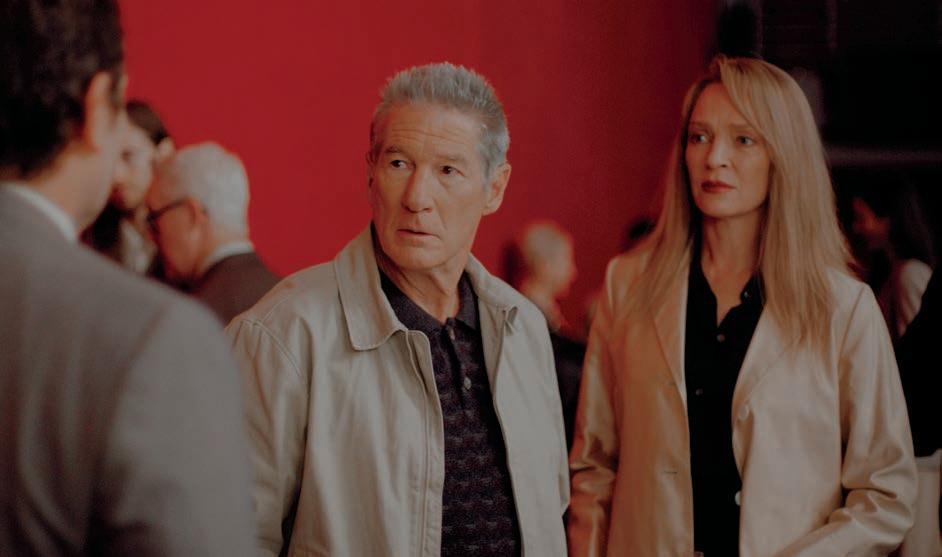
47 DEADLINE.COM/AWARDSLINE
Richard Gere and Uma Thurman in Oh, Canada.
Pulp Fiction
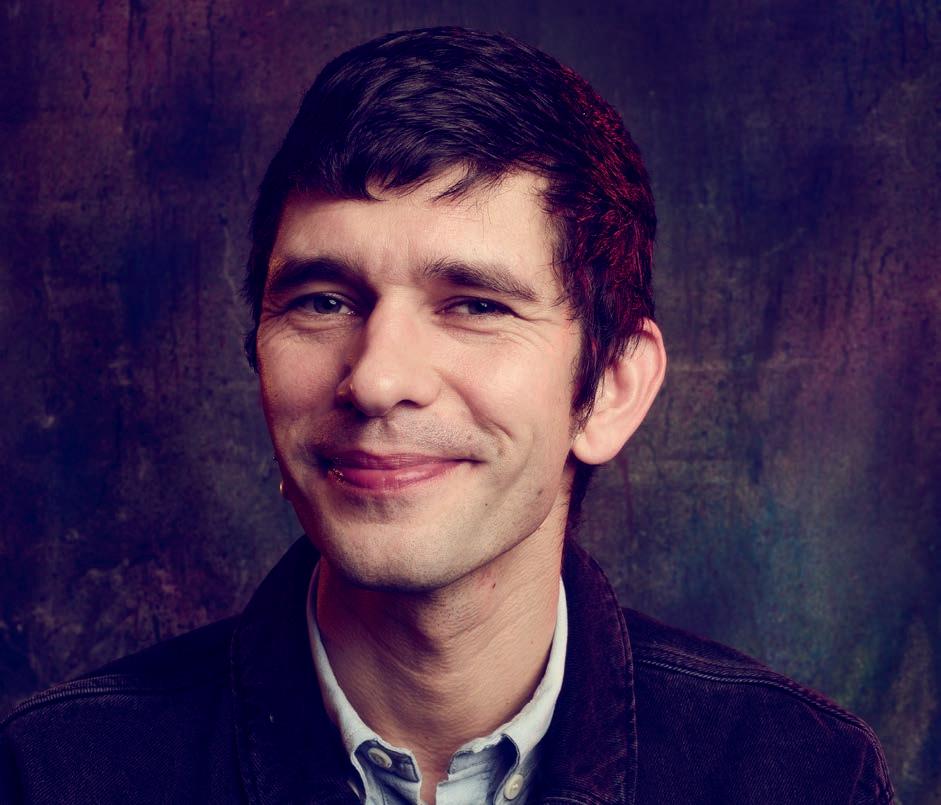
Ben Whishaw
The star of Limonov: The Ballad on playing a shapeshifter and learning to see the lighter side of Cannes
BY DAMON WISE
Russian director Kirill Serebrennikov returns to Cannes this year with his third flm in Competition and his frst in English. Titled Limonov: The Ballad, it tells the incredible story of Eduard Limonov pronounced “Le-morrrnov” not “Limunuv” a Russian renegade poet who traversed the world, reinventing himself whenever times got hard (and they usually did . To star the director chose British actor Ben Whishaw, himself a chameleonic actor who’s just as at home taking tea with the Queen in his Paddington guise as he is playing Hamlet onstage at the Old Vic. Here, he talks about getting to grips with an enigma.
How did you get involved with this project?
It was during lockdown, so I think it was maybe sent to me around August or September 2020. Goodness… A long time ago now! It was during that crazy lockdown time when everyone was wanting to be doing something, but no one could. Anyway, it got sent to me, and then I had a couple of Zoom meetings with Kirill. I knew it was going to be a kind of crazy project, about a very complicated man, but there was just something about it that felt kind of irresistible to me. And kind of terrifying, honestly, at the same time.
What most appealed to you about this character?
Well, he was many things, I guess, which is the point. He was a kind of a shapeshifter. He started out being a poet. He was kind of a
thug, a pretty urchin thug, but he became quite well regarded as a poet in Soviet times. And then he left the Soviet Union and went to America, and he lived like a bum really for ages. But then he became a novelist. Then he went to France, and was quite respected there, and then he went back to Russia fnally in the ’ 0s and became a politician. So, he had all these transformations going from the Soviet Union to the West, and from the West back to Russia going from an artist to a politician, from a nobody to a celebrity. He went through these distinct phases of life, and they chronicle, in a way, what was going on in the wider world.
So, does it...
[Interrupting] Oh, the big thing I forgot to tell you is that he ended up in prison!
So, does it just deal with certain sections of his life, or is it quite far-reaching?
It’s quite far-reaching. I think he’s a teenager when we frst meet him, and you see him when he’s 60-something, so it’s really wide-ranging. Kirill has called it “a ballad”. It’s a kind of poetic condensing of a lot of time. For instance, there’s a big sequence in the middle of the flm where he ends up in New York with his girlfriend. There’s a whole se uence that’s paying homage to the New York of the ’ 0s and flms about New York in the ’70s.
Where is Serebrennikov based? Kirill is I believe in Berlin. He’s working all over Europe.
ad you seen his previous flms? I’ve seen Summer, and it’s wonderful. He’s also an amazing theater director. He really has this incredible way of staging things. There are lots of se uences done in one take, or these big set pieces that break up the action. I absolutely adored him. He’s really an amazing guy, and an amazing director. So creative.
48 DEADLINE.COM/AWARDSLINE
BUCKNER FOR DEADLINE
MICHAEL
FOR YOUR EMMY® CONSIDERATION OUTSTANDING COMEDY SERIES
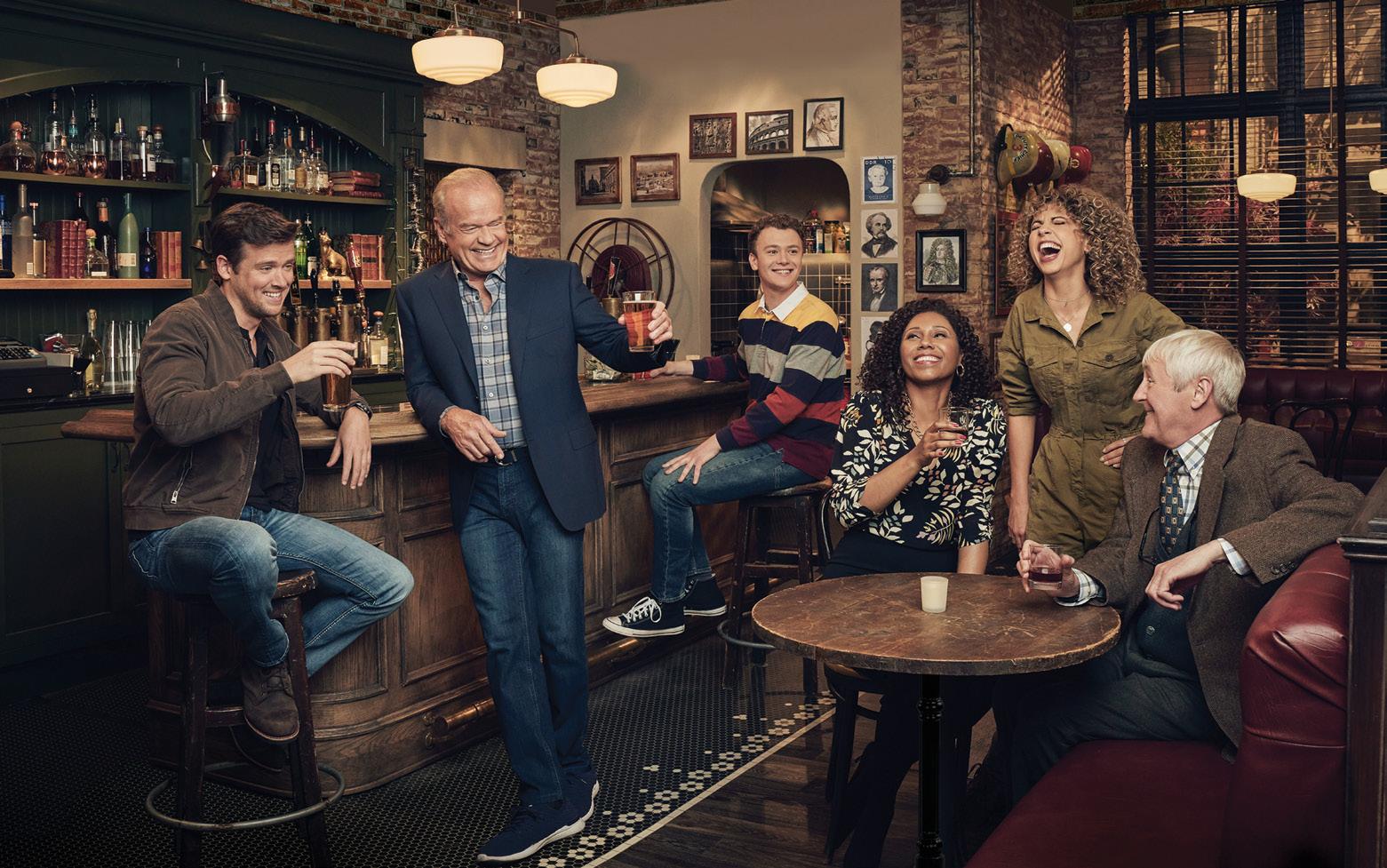
“AS BRILLIANT AS EVER.”
“CHARMING AND DELIGHTFUL.”
“KELSEY GRAMMER IS EXCEPTIONAL AS ALWAYS.”
SAN
FRANCISCO CHRONICLE
VARIETY
GLAMOUR
Something unusual about this flm is that it’s based on a novel—Limonov (2011), by Emmanuel Carrère—that was inspired by imonov’s life. Is there a similar element of fction in the flm?
Defnitely. I mean Limonov himself wrote a kind of auto-fction about his life. No one knows whether it’s really what he lived and did or whether it’s a fctionalized version of events. So there’s defnitely this kind of slippage in the flm where you don’t know whether what he’s describing is really what happened or whether it’s a kind of novelistic free-wheeling reinvention of his own life. So he could ust be a kind of fantasist in a way. That’s defnitely part of what the flm’s about I think. We fnished shooting in September 0 so it’s been a while.
ow much research did you do into the real life character?
I did as much as I could. I read his books. In English translations obviously since I don’t speak Russian. Actually they’re all really very interesting. The frst one is uite famous if you know about Limonov which in the West not many people do. The frst book he wrote is called It’s Me, Eddie And anyway I read three four or maybe fve of his books which were the ones I could fnd in English translations. Obviously I read the Carr re novel and read
lots about him. There’s now uite a lot of commentary about him. He’s an extremely divisive fgure so there’s lots of uite con icting views on him currently. I read all of that which was fascinating. What else did I do? I watched him a bit. There’s really only one or two interviews of him speaking English but there are some fascinating interviews with him speaking in Russian or French. I didn’t understand what he was saying but I could feel the guy.
ere there people around that knew him? It’s not that long ago, is it?
Kirill met him. Kirill knew him a tiny bit. But there are so many layers of artifce in the flm not least in the fact that it’s in English but we start the story in Russia. It felt like it had to be a kind of poetic tribute to him. I couldn’t do an impression or attempt a mimicry of him. I felt there was a point at which I didn’t need to go any further into understanding him more. And so I let myself be led by Kirill what he thought about the man and what it was about Limonov that he was intrigued by which is uite hard to explain. It’s uite mysterious.
hat do you think he was intrigued by?
Kirill like all good directors only tells you as much as you need
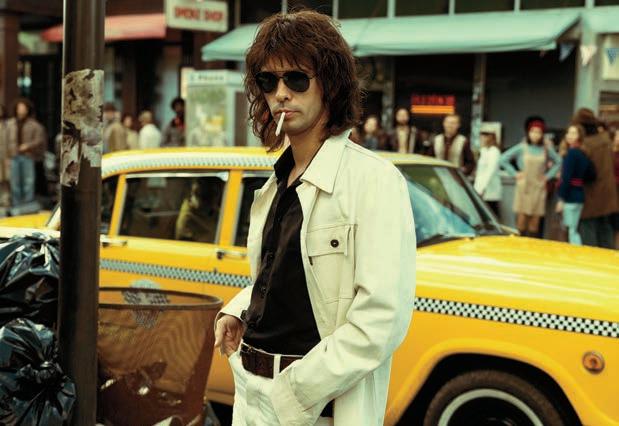
irill, like all good directors, only tells you as much as you need to know as an actor.
to know as an actor. He keeps a certain amount to himself which I respect. I think it is a necessary thing. I’d say there’s an element of not explaining in directing because you don’t want the flm to be explaining anything. So he didn’t explain himself to me. But I do remember him saying very early on that he saw something of himself in the character in the person. Of course they’re not remotely anything like each other. Nothing like each other at all. But yet something resonates with him. I think it’s about what I said at the beginning I think it’s to do with Limonov reinventing himself. That’s what I love about the flm most you watch somebody get knocked down and then kind of be reborn over and over again.
From erebrennikov’s previous flms, it seems he has a rebellious streak too.
There’s defnitely a spirit of rebellion. Limonov was a punk. He was a punk poet. And his whole life was rebellion really. Whatever situation he was in he rebelled against it. He never ever went with the ow. That was his nature. He could be against literally everything. If he was in Russia he was against that. If he was in the West he was against that too. That was his setting which is very interesting. I think there’s something maddening but appealing about that kind of personality.
hat kind of characters do you prefer to play? re the more comple characters the most rewarding for you? They’re all rewarding. I love all the people that I’ve played all the characters I’ve played. I don’t have a preference. I ust try and honor what that person is I suppose. I know it’s the kind of thing of lot of actors say all the time
but it’s true. You don’t udge them. They’re doing their thing and you don’t udge them.
re you going to go to Cannes with the flm?
I’m going to be on stage in London doing Waiting for Godot but hopefully I’ll get there.
hat’s your frst memory of the Cannes festival?
It was with a flm called Bright Star 00 that Jane Campion directed. I was or something and god it was ust amazing but also really stressful. I have a horrifying memory of walking out of an interview because... I don’t know why I was ust a bit overwhelmed. There ares so many famous people swanning around and there are all these kinds of old-school glamor rules. I can’t remember precisely what happened but Jane wasn’t wearing high heels and that was a problem she couldn’t go down the red carpet because she didn’t have high heels on. I think she was in mismatched sandals.
nd have you been back since?
Yeah. I went with The Lobster in 0 .
o, you’d gotten over the overwhelmingness of it all then?
Yeah. I was a bit older laughs . I could take it more in my stride.
hat tip would you give to your younger self about how to cope with Cannes?
I’d say ust laugh at it en oy it. It’s a spectacle that you can’t take too seriously. I was taking it all far too seriously as I probably did everything back then. I think I’m a bit of a lighter person now. Back then I felt everything more than it needed to be felt and took everything too personally. So I think I’d have a break. Take a break and go and do something fun. ★
50 DEADLINE.COM/AWARDSLINE ORION PICTURES/EVERETT COLLECTION
Whishaw in Limonov: The Ballad

FOR YOUR EMMY ® CONSIDERATION OUTSTANDING LIMITED OR ANTHOLOGY SERIES LEAD ACTOR EWAN M C
“Heartbreaking, heartwarming, sometimes heart-stopping, and as much as anything
THE STAGE FOR A WONDERFUL PERFORMANCE BY
EWAN M C GREGOR.”
LOS
ANGELES TIMES
GREGOR
Noémie Merlant
The French actress-director hits the Midnight Screenings with her blood-splattered sisterhood tale The Balconettes
BY MELANIE GOODFELLOW
Noémie Merlant’s star is rising as an actress. Baby Ruby and Tár won her international recognition across 0 and 0 3 while anticipation is growing around her starring role in Audrey Diwan’s English-language reboot of erotica classic Emmanuelle. In the meantime Merlant is hitting Cannes with The Balconettes, her second flm in the director’s chair after Mi iubita, mon amour. Set against a Marseille heatwave the riotous comedy and gorefest costars Merlant alongside Souheila Yacoub and Sanda Codreanu as female atmates who are pushed to the brink when a late-night drink with an attractive neighbor played by Emily in Paris actor Lucas Bravo takes a bloody turn.
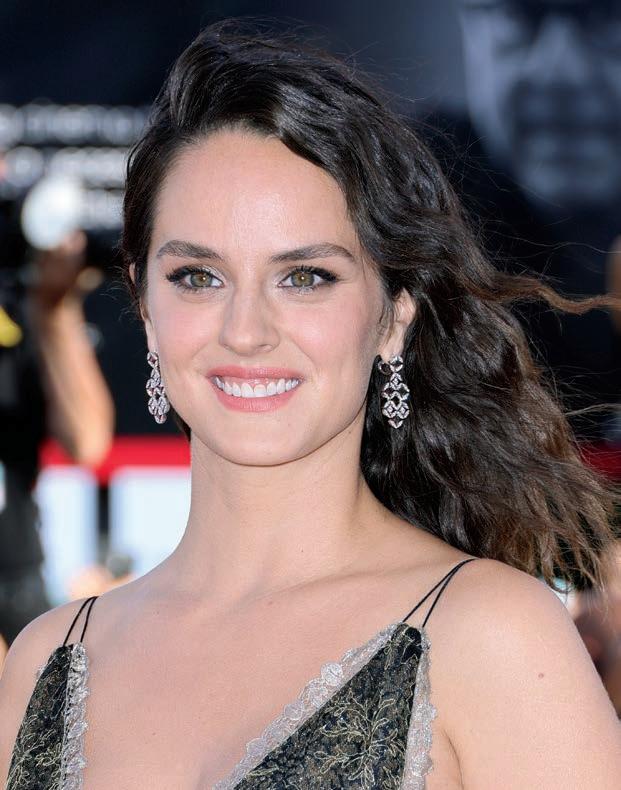
What was the inspiration for Les Balconettes?
Four fve years ago I ed my home in a sort of escape from something that was suffocating me. I sought refuge with two girlfriends who were living together and stayed for several months. I’d never been so much myself or so free. I’d always lived with a man and play-acted not only because of the other person but because of myself and what I thought society expected. I wasn’t playing the role that I wanted to play in my life. With my friends I was free to be myself even in terms of my body... There was a release. Their way of looking at things and listening was different. We talked about our relationship with sexism misogyny and patriarchal oppression. This place became our cocoon outside we didn’t feel the same freedom. That’s when I came up with the idea of making a flm where I would be among women in an apartment in an atmosphere of complete freedom both in terms of our bodies and from oppression outside.
The underlying theme is violence against women. It’s a topic you’ve been outspoken about in the past. Why do you feel so strongly about it?
I had my frst brush with violence when I’d ust started modeling. I had a traumatic experience with a photographer. I was years old and had ust left home and moved to Paris. It felt as if straight away I was being told “There you go you’re a woman you’re entering the adult world. This is how it’s going to be.” Like many women I’ve suffered microaggressions ma or aggressions and even physical violence with one partner who I managed to leave. I needed to talk about these experiences and then I did my own investigation. I’ve met uite a few men who have been victims of men too although I don’t talk about it in the flm. I wanted to but I had to cut it to tighten up the story.

et, the tone of the flm is very comedic, farcical... there are plenty of laugh-out-loud moments there.
When we talk what helps me my friends to escape from past trauma is humor the absurd. It’s a way of keeping our heads above water. I also wanted there to be vulgarity. There’s something in vulgarity that is very true very sincere and intimate. It’s something that is not often shown or associated with women. I wanted to give my characters permission to be vulgar. Humor is also a way of reappropriating our stories. Allowing yourself to make fun of your attackers is a very powerful weapon. It was important to keep the absurd and comical tone... It wasn’t always easy to achieve this balance but it was of vital importance for me with this flm.
ou play with genres in the flm. Where does that come from?
I knew I wanted there to be gore. I had this idea of two parts initially it feels like a nice little comedy between women but then it shifts into horror and fantasy. I grew up watching Korean and Japanese flms which mix humor the absurd and horror. Those were the only flms I watched with my sister. Another reference is Vera Chytilov ’s Daisies
Céline Sciamma, who you’ve been close to since co-starring alongside Adèle Haenel in Portrait of a Lady on Fire, takes a co-writer credit. How did that come about?
Above all C line is a friend and she also changed my life in several ways. Firstly Portrait changed my career because it was a flm
52 DEADLINE.COM/AWARDSLINE ANDREAS RENTZ/GETTY IMAGES/MAGNET RELEASING/EVERETT COLLECTION
Baby Ruby
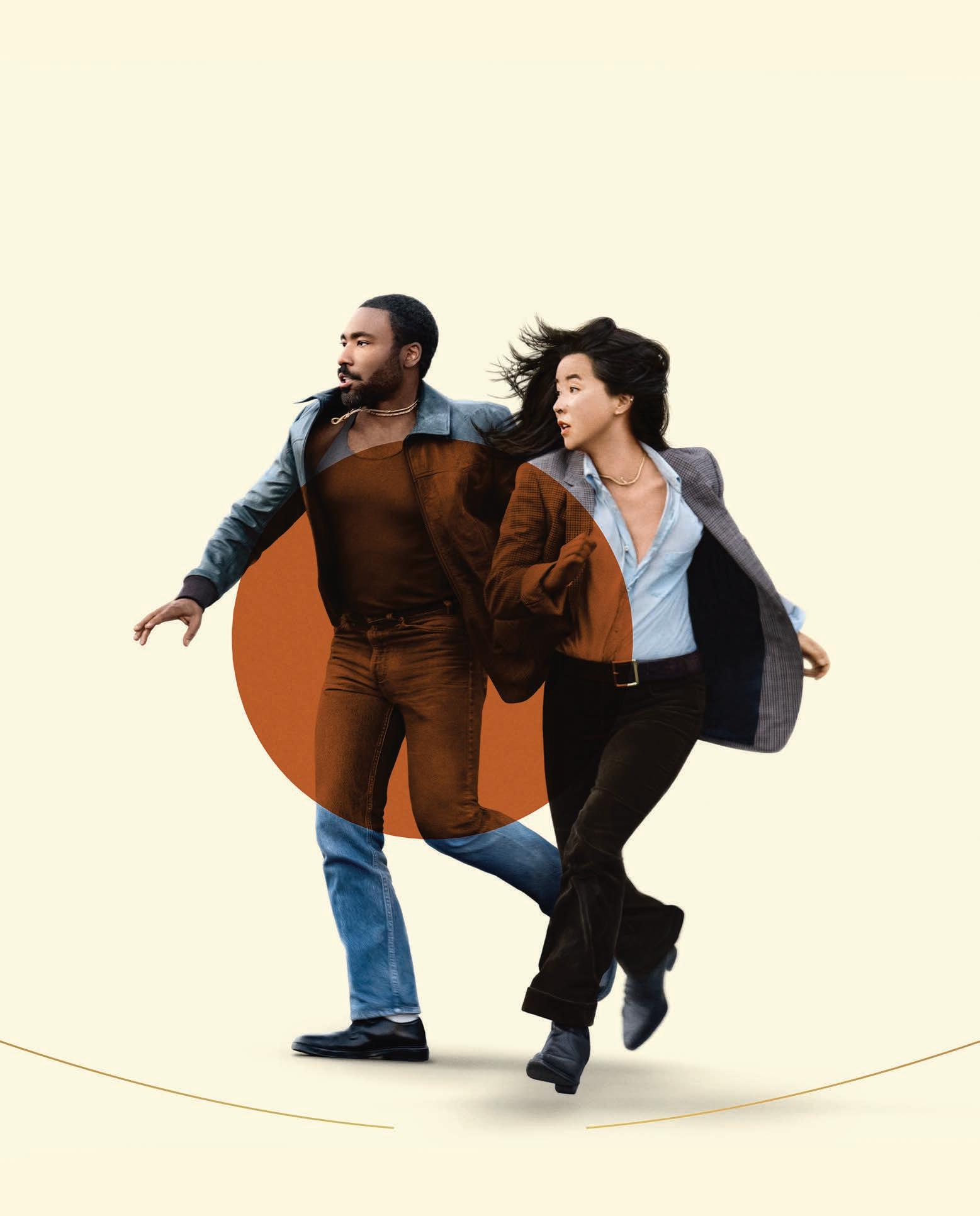
that had international resonance. But beyond that, Céline changed my vision of how to work as an artist. She has a really collaborative approach to working, which I haven’t always experienced. Her methods are much more about sharing, and that you don’t need intimidation to get things out of actors I’m suffciently tough on myself. Céline talks about this in her interviews, but when you create a workspace without too much hierarchy, with real respect and kindness, in which everyone can contribute, that is where there are many more surprises and creative outcomes. She also changed my way of thinking about the female gaze, female desire. It was after Portrait that I left everything and ran away to my friends.
ow did ciamma contribute?
At frst I was writing alone. I didn’t dare ask her. I didn’t want to encroach on our friendship. But Céline asked to read it and came back saying she loved it. She agreed it was a story that needs to be told with humor and told me she was there for me and would do all she could to help me, from helping secure the fnance to writing.
ow did you fnd it, mi ing acting and directing?
There were advantages and disadvantages. We saved and lost time. I couldn’t watch the scenes in which I was playing on the monitor, so we wasted some time there, but then, I knew my character by heart, so I knew exactly what I had to do in each scene. That was a time-saver because I didn’t have to explain what I wanted to achieve to another actor. Sanda Codreanu who plays Nicole is my friend in real life which made everything very uid in terms of playing the friendship. My sense of comedy was born with Sanda. She is very, very funny. She was always there with me on set. She and my cinematographer Evgenia Alexandrova
“I grew up with orean and Japanese flms, which mi humor, the absurd and horror.”
were my safeguards. Céline was also there during flming. Not all the time, but she came on set several times.
nother aspect of the flm is the liberated way in which you show the female body, with ouheila acoub’s character uby topless for most of the flm and your character also stripping off. I just wanted to be free with our bodies. Ruby simply wants to be bare-chested like a man. It’s funny, because when we shot the flm it was in the middle of a heatwave—it was 40 degrees— and a woman was stopped in the street because she was walking around bare-chested, while all around her there were men walking around shirtless. I can’t understand the difference between a woman’s nipple and a man’s nipple. When I look at the body, I don’t sexualize it. I wanted there to be a complete
sense of freedom, liberation, showing everything from farting to cellulite. I wanted this sense of these women not having to meet expectations, away from the male gaze and society.
The Balconettes very much taps into the eitgeist in France, which is seeing a fresh eToo moment sparked by actress Judith odr che’s campaign against se ual assault and harassment in the French flm industry. France has been here before, when d le aenel made eToo allegations in but didn’t get much support. re things changing?
That was terrible. Nobody supported Adèle. Well, nearly nobody. There were people who wanted to but didn’t dare. They were scared. I hope things are changing. There’s still a lot of resistance and denial, but we’re seeing more and more women, and men, speaking
up. A space is being created but we need to take care to preserve and make it bigger. I am trying to be optimistic, but you never know, backlashes often follow around the corner, I hope we’re going in the right direction.
e were also e pecting to see you in Cannes with udrey iwan’s Emmanuelle. here is that flm? Can you talk about it? I’ve ust seen it an unfnished version. I think people’s expectations are linked to the 3 flm but it has nothing to with it. She has reappropriated the character of Emmanuelle, and it’s even as if the character of Emmanuelle has reappropriated herself. We’re with a woman who is cut from her pleasure, from her desire. There are interesting resonances with my flm even though they’re not at all the same—in this quest to free herself from something and reclaim her body, to reconnect with her desire as a woman. It’s done with ultra-elegant eroticism, and Audrey’s eye is so sensual. This flm is a powerful ourney. I came out of it with a real desire to live. ★
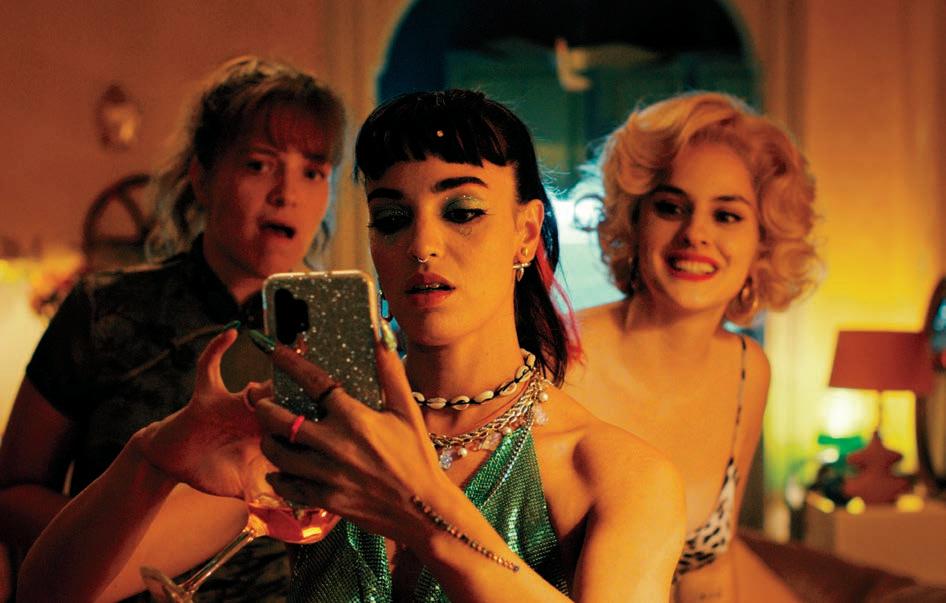
54 DEADLINE.COM/AWARDSLINE NORD-OUEST FILMS
The Balconettes


Renate Reinsve
The star of The Worst Person in the World returns to Cannes with a role that nearly finished her o …
BY DAMON WISE
efore making Joachim Trier’s hit The Worst Person in the World, Renate Reinsve was about to jack it all in. Three years later— after A Different Man, with Sebastian Stan, Another Life, with Gael García Bernal, and Handling the Undead, a chiller from Let the Right One In writer John A vide Lind vist she now fnds herself not just back in Cannes but doing double duty at the Sundance Berlin and Tribeca flm festivals “It’s a running joke that I have two movies everywhere”). Reinsve takes the lead in the Swedish drama Armand, directed by Ingmar Bergman’s grandson Halfdan Ullmann Tøndel.
hat can you tell us about how you were cast in Armand? Halfdan, the director, approached me 10 years ago, and we did a short movie together. I think we did it in two days. Afterwards, we both stood there with tears in our eyes, because we’d had such a deep artistic connection. We knew we had to do something again, so he started to write this movie back then. I followed it through all his drafts. Eventually I became executive producer, because after everything exploded in my life after Cannes the last time, when I won the Best Actress Award, it became easier to get this movie fnanced. We fnally got to do it last summer, and now we’ll see how it will be received. It’s going to be in Un Certain Regard, which is an amazing achievement for a debut movie.
ow would you describe it? I haven’t actually seen it yet, because this movie, for me, was the hardest thing I’ve ever done. And I had to actually—I’m not exaggerating—lie down for two months afterwards. I got really, on another level, exhausted from this role.
What happens?
The movie takes place in a school and it only takes place in a couple of hours. And what happens in the movie is that my character gets pulled into a parents’ meeting, because her son has done something horrible, but it’s not clear what’s going on. And the school is a little bit nervous to let this person into the meeting because she’s a very special person and she’s very hard to handle. But quickly within this meeting the school loses control. And with that, you start to dive into the psychology of all the characters that are in this classroom. I really want to see it for the frst time with an audience. I’ve never done that before. For me, it’s about the pain we carry within us that we in ict on others without us knowing. This character, she has so much fear and she has a very big need to control the people
around her, but she has no insight. And it was so fucking exhausting to play that.
Why was it so exhausting?
I think that when you have so much pain and so much fear, you have an almost aggressive need to control your surroundings, not to lose control yourself. It’s so insanely diffcult to do. Well it’s impossible to do. You can’t control anything, but you try. And the people around her, they don’t know if she’s being sincere or if she’s being very, very manipulative. And for me to go between all these things, and play around with this kind of pain, was very, very hard.
Is this your frst time back in Cannes since The Worst Person in the World?
Yes, it is. Yeah.
udiences loved you in that flm. ill they fall in love with this character as well?
I don’t think so [laughs]. It’s a very, very different character. I have very deep love for her, but it will be very exciting to see how she will be perceived, because I think she’s diffcult to relate to. Maybe not to relate to, but she’s certainly diffcult to communicate with. And I’m not sure if that’s going to come out in the movie.
To go back to The Worst Person in the World, how big a deal was that flm in your life?
It absolutely changed my life. It was also so unexpected. I remember doing a twirl on the red carpet because I thought,
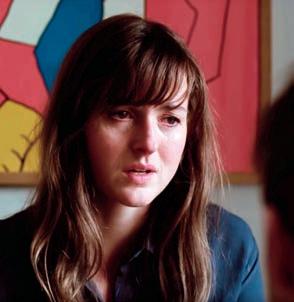
56 DEADLINE.COM/AWARDSLINE
BUCKNER FOR DEADLINE/NEON/EVERETT COLLECTION
MICHAEL
The Worst Person in the World


‘I’ll never be here again. This will never happen again.’ So, I felt very silly afterwards. I remember coming out of the theater; we were in the car, and the reviews started ticking in—so many beautiful words about my work— and it really took off from there. I didn’t know how much it was going to affect my life. The next day I remember puking a lot, because I knew it was something very big, even though I couldn’t grasp the whole picture of it. But of course it’s fantastic to get recognition for something you worked very hard on.
Did that success surprise you?
As well as audiences, it’s even become a kind of a touchstone for aspiring flmmakers
Well, when we were on set, I remember that everyone was so attached to the project. There was a big uprising of existential questions and a lot of big talks and a lot of love for the scenes. And everyone had a different—very different—but also very strong opinion about what the script was about. That kind of climate on set, how it felt there, has also been how the audience met the movie. So, it’s felt like a big kind of collective [reaction].
When we were on set, we felt we were making a flm about important topics and important themes, and that big conversations would grow out of it. And that’s also what’s happened. I still meet people that say that their life changed from this movie and that they made big choices as a result. I did that too, after reading the script. I made some arrangements in my own life. So, it’s fantastic. That’s why you want to make a movie, that’s what you want to do when you make a movie. You want to fnd something true and something that’s important to you that you can share with other people. And if that grows outside the borders of the movie itself, that’s, of course, the best thing that can happen.
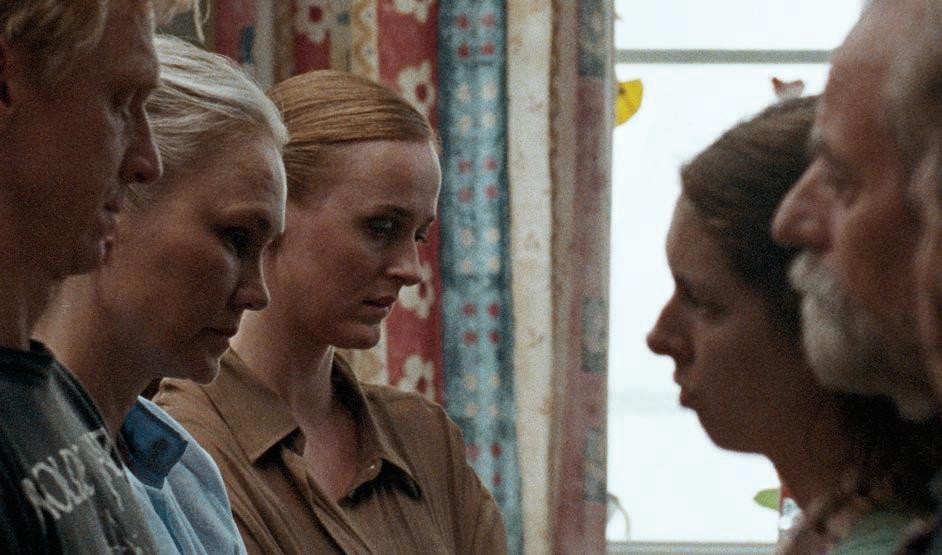
Do you get recognized for it? And what kind of questions do people ask you about it?
I get recognized everywhere I travel. And I can see the difference between fans of this movie and my other movies. The people that come up and talk about this movie, they’re really kind and curious and want to share something about themselves. It’s all good. But yeah, a lot of people have seen it. I can feel it when I go around the world.
Do you take your roles home with you?
That’s a very good question, a very good question. I’m having a lot of conversations with people I know about that, because I feel that I change a little bit right before I go into a shoot. You get into the zone and you don’t know the difference between you and the character. You fght so hard for their personality, their traits, and their battle for their own existence. Then I’ll see the movie later and I’ll disagree very much with this person’s choices. I think you have to let yourself go into this psychosis of becoming [someone else]... I mean, I’ve been doing it since I was very young, in theater, too. I’ve actually been acting for 25 years,
and I think a lot about the way you fnd the balance between letting go and staying yourself. But I guess I go very, very deep into the role. [Laughs.] Maybe a little bit too deep, since I had to lay down for two months after Armand. I think I just can’t stop and Halfdan, he can’t stop either. So, the next time we work together, we’re planning to have a third person there who will stop us. Because we cannot stop!
You very nearly gave up acting to do carpentry instead. Does that decision haunt you? No, it doesn’t haunt me now. But at the time, I wanted to go into movies, and I’d been working in theater for so long. Theater is very hard for the body and you get no money! I wanted to do something else. I think now that I am so incredibly lucky. I can choose the projects that give me that joy and energy that I didn’t get from the projects before. I wanted to give up because it wasn’t really giving me anything anymore. The projects I did in TV, they were just not for me. They were for someone else. I have respect for people who want to do it that way, but I needed to get into the movies. Quirky, dark, existential movies.
Is it true that you’re reuniting with Joachim for another movie, Sentimental Value?
Oh, we’re starting to shoot in the middle of August. I don’t know if I can tell you what the movie is about actually. I think I can say that it’s about a relationship between a father and a daughter. I’ve read the script, and I cried. I am very excited about it. Joachim and Eskil [Vogt] have written a beautiful script, and he’s re-teaming with Kasper Tuxen, the cinematographer. He is, of course, a genius too. A lot of the same team is coming together to do this movie. It’s a different story, but it has some parallels to The Worst Person in the World.
You sound pretty happy. Do you think you are living your best life at the moment?
I guess so. I’m actually very happy. But it takes a little bit of effort to be happy in this life too, to keep your feet on the ground and do normal stuff. Like, to be in my garden and pluck the weeds and just do normal stuff, that’s very important to me. The balance between the movie life and the very down-to-earth life is important. But I’m very happy. ★
58 DEADLINE.COM/AWARDSLINE EYE EYE PICTURES
Armand
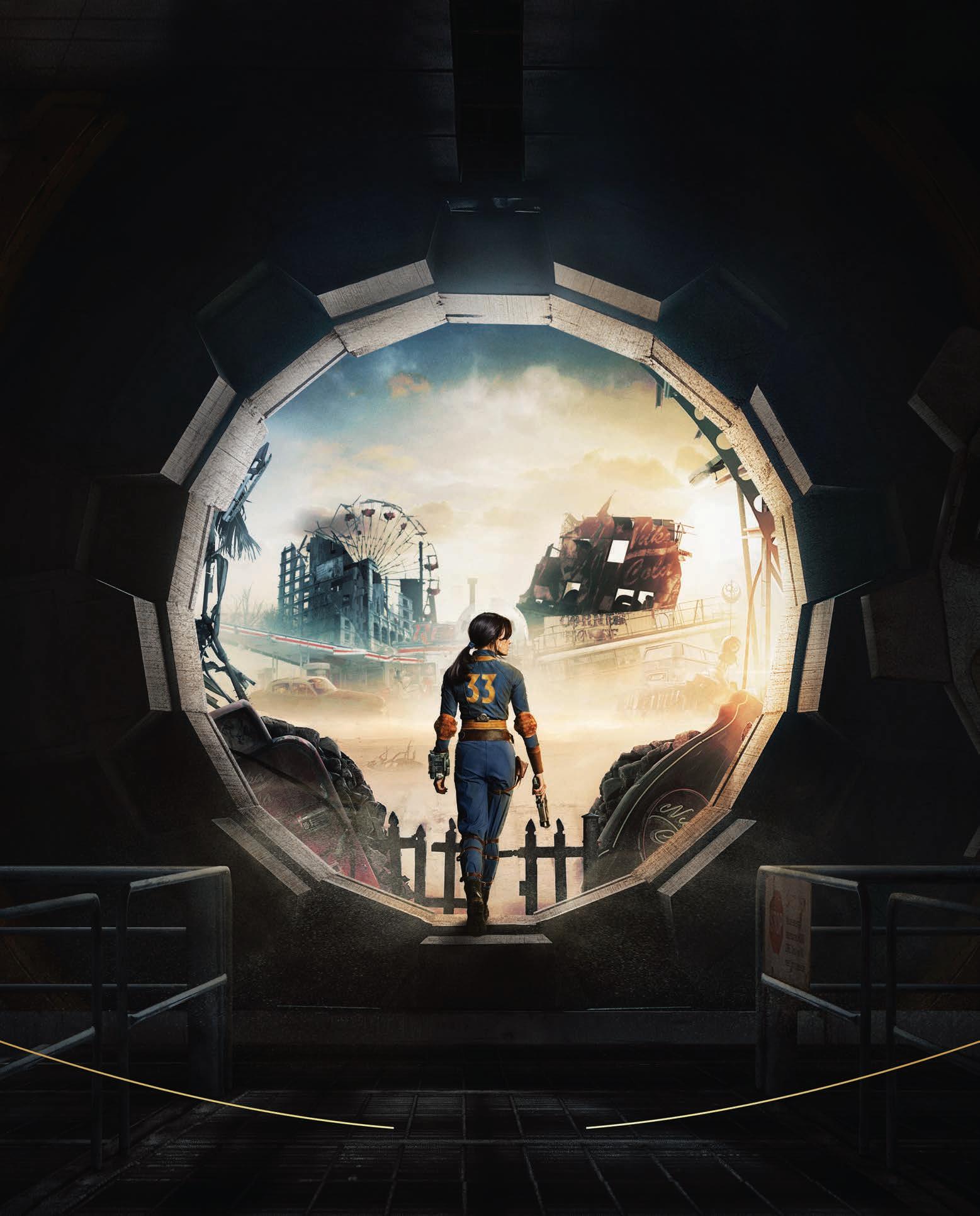


In joining FRANCIS FORD COPPOLA’S Megalopolis, AUBREY PLAZA plunged into her very own Roman Empire, with a director she’s long-admired, in a theatrical workshop of improvisation and collaboration. Given its story is taken from the annals of Ancient Rome, perhaps the gossiping factions and speculation surrounding the lm are only tting…
 By ANTONIA BLYTH Photography By JOSH TELLES
By ANTONIA BLYTH Photography By JOSH TELLES
60 DEADLINE.COM/AWARDSLINE

 Aubrey Plaza photographed at Jack Studios in New York City.
Styling by Jessica Paster. Loewe skirt and sweater, Wolford tights and Jimmy Choo shoes. Jewlery by EF collection.
Aubrey Plaza photographed at Jack Studios in New York City.
Styling by Jessica Paster. Loewe skirt and sweater, Wolford tights and Jimmy Choo shoes. Jewlery by EF collection.

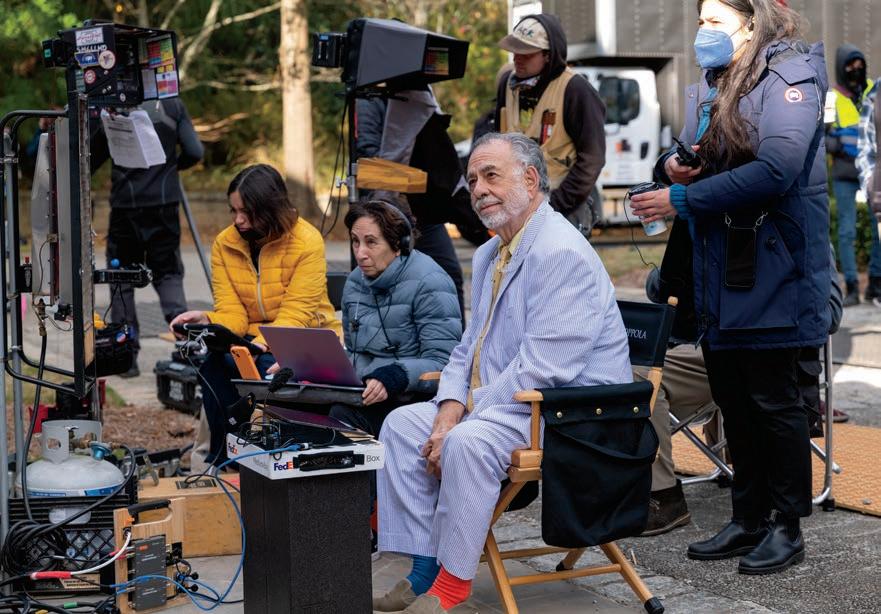
Plaza was, at the time, taking her turn as the maritally-challenged Harper in the second season of the HBO hit series The White Lotus—a role for which she was individually Emmy and Golden Globe nominated. And, when she heard that Coppola wanted to get on Zoom with her, she was also staying in the San Domenico hotel, his old home-from-home during The Godfather shoot.
If all of that felt cosmically Coppola coincidental, Plaza also points out, “I’ve orbited this family a lot. I’ve been in a Roman Coppola movie, and I’ve been in four movies with [Coppola’s nephew] Jason Schwartzman.”
In Megalopolis, Plaza stars as Wow Platinum, an ambitious and Machiavellian journalist in the world of the mega-rich and in uential. Set in a sort of near-future Manhattan-meets-New Rome, the story is based on the Catiline Conspiracy, a feud between a Roman senator and Cicero. Here, Cicero is represented by the city’s old-school mayor (Giancarlo Esposito) as he goes head-to-head with Adam Driver’s Caesar, an architectural idealist. After a disaster destroys the city, Caesar pushes for a rebuild with innovative, renewable materials, aiming for a utopia that will free the underclasses, while his enemy Cicero prefers to go with the traditional concrete, corruption, and class system. Between them comes not only Wow’s manipulations, but also the mayor’s daughter, Julia (Nathalie Emmanuel), who falls hard for the idealist Caesar.
When I sit down with Plaza, in a photographic studio somewhere o the West Side Highway, it’s one of those perfectly New York, crisp, blue-sky days. Framed in the window behind us, the sun glints o the Empire State Building—a ttingly cinematic setting in which to discuss Coppola’s Manhattan-esque lm, his rst mainstream feature o ering since 2011, and one that’s been the talk of the industry in the build-up to its Cannes premiere. And not all of that talk has been kind. Rumblings abound—about Coppola’s decision to self-fund the production to the tune of $120 million, and, at the time of press, the lm’s clanging lack of distributor. Then there were the muted reactions to its oneand-only industry screening back in March. Coppola, however, turned around and upped the ante, entering the lm in Competition at Cannes. Apocalypse Now comparisons have been made, given that both lms walked a rocky road of sorts. So,
63 DEADLINE.COM/AWARDSLINE PHIL CARUSO/TRITON FILMS
Francis Ford Coppola on the set of Megalopolis
will Megalopolis, like Apocalypse Now, rise up in a blaze of glory at the festival? What does Plaza make of all the swirling gossip and speculation?
“I thought it was kind of funny,” she says. “I would defend Francis all day long, but he doesn’t need my defense. I think when you’re on the inside of it, and you know what’s really going down, it’s almost like, ‘Let them make up their stories and let them cause a big ruckus about it. Why not? Drum up some more attention for the movie.’ I think it ends up, in my mind, all working for the movie.”
She also cites the “mythology” surrounding Coppola’s work. “People want that, especially with him, with all the stories about Apocalypse Now. They want it to be a disaster, they want some big epic… whatever. Knowing Francis like I do now, I would think that it wouldn’t bother him at all, that he would love the tales that are being told about the lm, like, ‘Go on, make up all the stories you want.’
“He’s got such a magical way of directing and inspiring actors. You can feel it when you watch his movies and I felt it when I worked with him. It was everything that I had hoped for. And I think ultimately, he is just a brilliant storyteller, and he has something to say, I think. Every movie that he makes, there is a passion behind it. It feels like there is a reason for it. It’s pure in an artistic sense. Even though he’s obviously commercially successful through the years, it never seems like it’s about that. It’s just that he wants to tell stories and he wants to play with actors. So, it’s my favorite stu .”
Back before their rst Zoom meeting,
Coppola sent Plaza the lm’s entire script—a move she says shocked her. “He emailed it to me and said something like, ‘You should read it rst and make sure that you want to audition.’”
Plaza promptly read it and emailed back.
“I believe the way I described it was, ‘This is a beautiful nightmare.’ And he, of course, picked the ‘nightmare’ word out rst, which was not meant in a negative way. But he was like, ‘A nightmare? This movie is a love letter to humanity. This is going to give hope to society and humanity, it’s not a nightmare.’ And I said, ‘No, no, no. I didn’t mean it like it is a nightmare. But it feels impressionistic in that way. It feels like it’s a dream.’ The whole thing feels very, very dreamlike, and scary. There is, in my opinion, some scary imagery and some nightmarish qualities to it, but in a beautiful and unforgettable way.”
Once she was cast, Plaza dug into her character of Wow. “The backstory that we came up with was that she was born in a trailer park in the Midwest, Kansas City. It had a very To Die For vibe to it, or smalltown girl wants to be famous news anchor kind of thing. Power is very important to her, and she will stop at nothing to get it.”
Wow also needed to appear extremely magnetic and seductive. “Francis would call me The Golden Woman, and Milena Canonero, the costumer that he’s worked with forever, they wanted me to be dripping in diamonds and just be radiating luster and wealth.”
The name Wow Platinum seemingly required matching platinum hair.
“Which is very funny because I’m a dark Megalopolis


64 DEADLINE.COM/AWARDSLINE
OF AMERICAN ZOETROPE/MEGALOPOLIS/MIHAI
COURTESY
MALAIMARE
“I would DEFEND FRANCIS all day long, but he doesn’t need my defense. I think when you’re on the inside of it, and you know what’s really GOING DOWN, it’s almost like, ‘Let them make up their STORIES and let them cause a BIG RUCKUS about it. Why not? Drum up some more ATTENTION for the movie.’ I think it ends up, in my mind, all working for the movie.”

65 DEADLINE.COM/AWARDSLINE
brown-haired girl,” Plaza says. “But yes, I bleached my hair blonde for Francis and Milena. For anybody else, never again. But for them, I did it.”
Wow is also something of an outsider—a characteristic Plaza has often gravitated towards. “My character was the biggest outcast. Because I’m dealing with this incredibly wealthy family, the richest family in the world, I’m navigating these dynamics, and I end up marrying the richest man in the world, played by Jon Voight. I am totally an imposter in every sense. But I have such an insane ambition that it just overwhelms that feeling that I don’t belong.”
In her 2022 lm Emily the Criminal, which she also produced, Plaza’s titular character sits on the fringes of a successful friend group, unable to gain a foothold as she slides into debt and fraud. In The White Lotus, she is the one person unable to swallow the Kool-Aid that marriage is a don’t ask-don’t tell endeavor. And in Ingrid Goes West, Plaza is a deranged codependent, stalking Elizabeth Olsen’s immaculate in uencer character. In every case, Plaza’s character is on the outside looking in. She’s the one doing or saying the ‘wrong’ thing, the awkward thing. Even back in her breakout role in the long-running comedy series Parks and Recreation, her famously deadpan character of April Ludgate portrayed a woman out of kilter and o -beat.
So why does she feel compelled to look under every sharp rock; to point to the extremely uncomfortable?
“I think one thing that I really love about acting and about putting myself out there is to wear those icky feelings and portray all of those things that everybody feels, because it’s a universal feeling,” she says. “It makes people feel seen. And I think with a lot of the characters that I choose to play, there is an underlying sense of wanting people to feel seen. I felt that way when I did Emily the Criminal and Ingrid Goes West too.
“Personally, I relate to those characters in the way that I think a lot of people do. And it’s all those feelings of feeling like an outsider, whatever it is, not good enough, or a freak, or whatever. And I feel like I, de nitely, over the years, have embraced those things because I have this impulse: I’d rather humiliate myself and put myself in the line of re for the good, so everyone else can sit back and feel like, ‘I’m OK.’ It’s
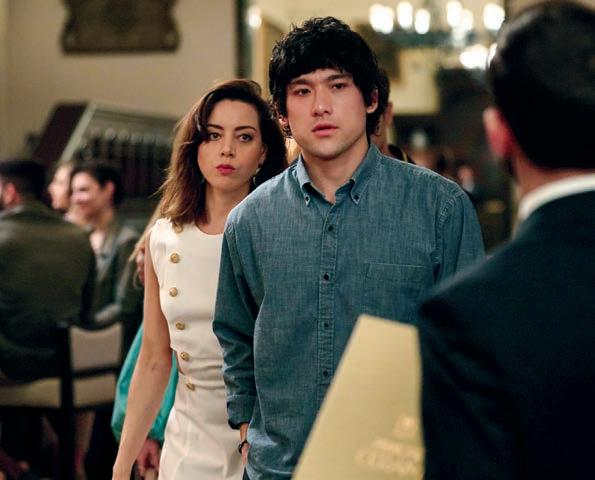
my own little way of trying to make the world a better place.”
Growing up in Delaware, Plaza had zero industry connections. “So, I think there’s always been a sense of feeling out of place in that way. I’m sure so many people feel that way,” she says. “I always felt like something was di erent about me. I think I’ve always had this sense of strangeness, or feeling like I’m an alien or something. But I think also, that feeling has helped me always connect with other people that feel that way.”
Plaza’s family was extremely committed to community service, and from the age of eight, she would go along with them, experiencing “nursing homes and working with the elderly, or working with disabled people and homeless daycares. So, thinking about it now, maybe that shaped me in a really big way.”
Upon her arrival on the set of Megalopolis, Plaza discovered a kind of workshop-type scenario, where improvisation, collaboration and even actors’ re-writing were welcomed.
“I think that’s a really big part of Francis’s approach,” Plaza says. “I don’t want to speak for him, but it seems to me that he gathers a group of interesting, wild actors and then he tries to inspire them to play. We wrote scenes and we conducted ourselves like a theater troupe, me and Jon Voight and Shia [LaBeouf]. We were writing scenes and giving them to the script supervisor. And then she would give them to Francis and sometimes he would like it and put it in. But every day he wanted to play. He ran it like it was a theater camp.
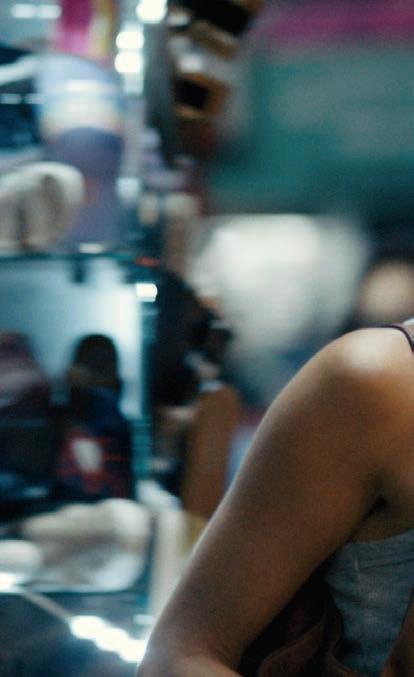
There were games all day, and we were in character the whole time.”
Wow and Driver’s Caesar have some explosive dynamics, and Driver turned out to be a perfect match for Plaza’s approach. “I loved working with him. I felt that we were on the same page instantly. And what I really loved about working with him was, he was like me, where he really likes to play. He likes to surprise you. He’s so prepared and so thoughtful about his work, but he’s also willing to throw it out the window and have a laugh and mess around. And I love to work with an actor that can do both at the same time. I think a lot of times, people lose their sense of spontaneity and playfulness when they take themselves so seriously. And there’s a really amazing con dence about someone that can be both. It’s everything I like about a scene partner.”
That playful theater troupe scenario will, Plaza says, result in some rather, shall we say, interesting footage for Mike Figgis’s making-of Megalopolis documentary. For one thing, Plaza had no idea who Figgis was, or what he was doing on the set.
“I didn’t know that it was a real documentary being made or that Mike Figgis, no less, was operating the camera, until he introduced himself, I’d say a week into shooting, maybe even longer than that. I thought it was b-roll! That documentary is going to be really something to watch. Just think about the roster of personalities.” It is, of course, a roster that apart from Plaza, Driver, Voight, LaBeouf and Emmanuel, includes Laurence Fishburne, Dustin Ho man and Jason Schwartzman.
66 DEADLINE.COM/AWARDSLINE HBO/ROADSIDE ATTRACTIONS/EVERETT COLLECTION
From top: Plaza and Will Sharpe in The White Lotus; Plaza in Emily the Criminal

Plaza staying constantly in character probably helped Figgis somewhat. “I was just speaking in tongues,” she says. “I was out of my mind, I’ll be honest. I don’t know what’s going on in that documentary, but I hope I have approval over all that footage. And I will demand that legally.”
And there it is, that deadpan schtick Plaza was famously branded with postParks and Recreation. She’s long since proven her range well beyond that early label but seeing it in action is a belly-laugh moment. She betrays nothing, and yet somehow silently also conveys she’s enjoying the joke on the inside—it’s some Jedi mind-trickery, and it is funny. Back on Megalopolis, the in-character, in-deep approach felt necessary, Plaza points out. “Most of the time I was so in it, and I think all the actors were, that I didn’t have time to even think about the optics of
what was going on, I was just so immersed in the experience. It’s a pretty relentless approach of shooting those movies [with Coppola]. It’s an intense set when you know that Francis is behind the monitor and it’s your turn. Of course, there were moments that were just insane.”
All told, Plaza was shooting in Atlanta for eight months. For the nal two weeks of that, her Megalopolis shoot overlapped with her role as the witch Rio Vidal in Agatha, Marvel’s follow-up to the Wandavision series. Fortunately, both projects shot on the same lot, but the double-duty led to some shenanigans.
“I would literally go from one to the other and would put my Wow wig on and my Wow costume on. And then the next day, I would go to the Agatha set and I’d be dressed as a warrior witch with a dagger and stu ,” Plaza says. “At one point, when I was dressed in the Marvel character, I snuck onto the Megalopolis set and I started harassing Giancarlo Esposito and Adam and everyone. It was absolutely insane behavior.”
When she nally left Wow behind in Atlanta, Plaza felt her lingering ghost. “She was wildly con dent and not scared of anything. And I would say that there were days for sure where I felt empowered by the character, because I think my con dence lies mainly in my work. I nd sometimes that in my personal life and when I go home, I don’t have the same kind of con dence and assertiveness that I do somehow when I’m working and when I’m playing these other people. There were certain things that would normally take me down, or normally I’d have a hard time, and I felt that Wow was really fueling me, giving me strength.”
But the other side of that was the strain of becoming someone so opposite to her actual self. “That energy, being ‘on’, and being this big personality that walks into a room and demands attention and isn’t afraid of anybody or anything, it’s just exhausting to play someone like that. And I think in my real life actually, I have much more social anxiety and insecurity, and,”— she laughs— “I tend to not want to be around anyone.”
But, despite that anxiety and insecurity, Plaza has felt a generational pull toward performing. “There are people in my family that were very, very inspirational to me. My Uncle Chico, who passed away, was an artist. He ran a salsa dancing studio in Philadelphia, and he made lms. He had no money, and he would sell everything he had to make a short lm. He was just really that kind of person. And my great-grandmother was a amenco dancer. No one ever really went to Hollywood and did anything, but I think I’ve always had this feeling like there’s un nished business in the generations of people in my family. It almost felt like I’m empowered by all of these people—especially the women—in my family that wanted to be actresses or wanted to be out there but didn’t have the resources or the money to ever make their dreams come true.”
And those inspirational gures extended beyond family, too. “I was always slightly delusional as a child, and I grew up very, very obsessed with Judy Garland. She was a very big inspiration to me. Rosie O’Donnell is someone that I really admired as a young person. I read her biography and I felt very inspired by her. I think I was inspired by just so many
“Considering the ENORMOUS BUDGET and the fact that it was all of his own money and TIME, he was not precious at all. You would think that if someone spent that much MONEY on their own film that they would be so CONTROLLING and so particular about every single thing, but there was a real sense of COLLABORATION and EXPERIMENTATION.”
67 DEADLINE.COM/AWARDSLINE

“It was EVERYTHING that I had HOPED for. And I think ultimately, he is just a brilliant STORYTELLER, and he has something to say, I think. Every movie that he makes, there is a PASSION behind it. It feels like there is a reason for it. It’s pure in an ARTISTIC sense.”
women that made it happen that didn’t have a connection or came from nothing. And I felt like, well, if they can do that, I can do it too.”
And then there’s John Waters. His lm Serial Mom is one Plaza cites as deeply a ecting. When she hosted the Independent Spirit Awards for the rst
time in 2019, Waters gamely jumped in on her opening monologue, and now she’s cast as the lead in his upcoming lm Liarmouth, based on his rst novel, which is described as a ‘feel-bad romance’.
“She takes big chances,” Waters says of Plaza via email. “She can be scary OR charming OR beautiful OR criminal on
screen and often all four. My kind of star— the real thing!”
“It’s an absolute dream come true,” Plaza says. “His movies meant a lot to me growing up. Really, they changed my life. And so even just knowing him and being his friend is enough for me. But the fact that he wants me to star in the movie is crazy, and I just want to do it justice.”
Despite rumors that Liarmouth is struggling with nancing, Plaza says, “We are gearing up to shoot. It’s not in ux. We were hoping to shoot, I would say, in the spring 2025. And it’s an epic script.”
A couple of days after our New York meet-up, Plaza calls me from Albuquerque, where she’s gone straight into shooting Honey Don’t, Ethan Coen’s lesbian B-movie follow-up to Drive-Away Dolls, with Margaret Qualley, Chris Evans and Charlie Day. So far, one day in, Plaza describes the job as “just wild”.
She’s “striking while the iron is hot” she says, and her schedule is packed. Only last week she was in Bulgaria for the animation/live action hybrid movie Animal Friends—a experience she describes as “amazing and very funny to shoot with animals voiced by Ryan Reynolds and Jason Momoa. And Dan Levy and I had a blast.” She “learned all kinds of skills” she says, including shooting machine guns, jumping out of helicopters, and pole dancing. “I had no idea how weak my core was until I tried to pole dance. It was a kind of run-and-gun situation, but I did get upside down.”
She also plans to produce more projects. She’s very proud of the four lms she has produced so far, including her seat-of-thepants experience shepherding Emily the Criminal from insu cient funds on day one of its shoot, to making Obama’s ‘Best Movies of 2022’ list.
“I found out the night before that we actually didn’t have all the nancing,” she says, “and I had to make a really hard decision to either shut it down or to start shooting and trust that I could nd the money while we shot. I believed in that movie so much that I said, ‘We’ll start. We’re not shutting down. We’re going to start tomorrow, and I will nd the money.’ And I did.”
Directing is on the table, too. “I don’t need to take over the world,” Plaza says, “but I want to keep up a standard of quality for any movie that I decide to make. And I do want to direct. I’m very, very much going to do that.”
68 DEADLINE.COM/AWARDSLINE EMMA MCINTYRE/WIREIMAGE
Plaza on the red carpet at the Governors Awards.
So how did working with Coppola in uence or inspire her for the future?
“All of my instincts about directing and about making movies, I felt, were validated. All the things that are important to me, I felt like were important to Francis. And all of the instincts that I would have, I think, as a director, I felt that he was embodying them. So, me and him are just basically the same…”—she allows a tiny smile —”I’ve met my match, nally in Francis Ford... No, that sounds obnoxious. I don’t mean it like that. I just mean I felt so inspired by him. And I think all of the things that I love about making a movie were all of the things that he loved about making a movie. I think that I will denitely carry that on when I direct a movie and remember that at the end of the day making the movie is just as important as the nished movie itself. Because he loved being on set and he loves the process of making it and playing. The thing that I was so impressed by, especially considering the enormous budget and the fact that it was all of his own money and time, and everything, was that he was not precious at all. You would think that if someone spent that much money on their own lm that they would be so controlling and so particular about every single thing. But there was a real sense of collaboration and experimentation.
“We would do something that was othe-cu and weird, and Francis would say, ‘I like that, do that again.’ And then all of a sudden, the scene would change. And then all of a sudden, he would have another idea. And then all of a sudden, we’re shooting in a di erent location we didn’t even plan to shoot. And then the whole day goes by and you’re like, ‘I had no idea any of that was going to happen.’ So, I will de nitely remember those moments.
“For me, movies are a spiritual experience. The movie itself is this living, breathing organism and you have to feed it and inspire it and nourish it and watch it evolve. And I think people that are so controlling about it, sometimes they lose that quality. Whatever the end product is, he’ll never lose that quality.”
In My Old Ass, Megan Park’s festival hit, set to premiere this fall, Plaza plays Elliott—a woman given the chance to meet her younger self. Older Elliott warns younger Elliott (Maisy Stella) not to fall in love. But, although armed with the truth of how badly it will hurt, young Elliott
decides she is going to go ahead and do it all anyway.
This of course leaves one pondering the course of things, but Plaza, for her part, has absolutely no notes for younger Aubrey.
“I don’t have any regrets about anything like that,” she says. “I think what it really makes you feel is just how precious time is, and you can take comfort in knowing that it’s all happening for a reason.”
Perhaps then, all those early-on cosmic Coppola coincidences were happening for a reason, leading to what was meant to be?
But then came one more.
A few months ago, when Plaza was at dinner in New York, a woman passed by her table. It was So a Coppola.
“I don’t know her and I’m a huge fan of hers,” Plaza says. “She stopped and said, ‘I just saw my father’s lm.’ And I was so
scared, waiting to hear any kind of reaction. She said, ‘What you did in that movie was very impressive.’ She used the word ‘impressive’ in a way that I was like, ‘Oh, my god. I don’t know what she’s talking about, but I’ll take it.’”
Now, on the eve of her very rst Cannes, Plaza re ects upon it all. She’s starring in a lm Francis Ford Coppola has wanted to make for decades, surrounded by chatter and buzz and the possibility of so much more to come. She smiles. “It’s unbelievable. It’s ridiculous,” she says.
If she, like Coppola, could do the thing she truly wanted, and make choices unfettered by compromise, what would she do?
“I’d like to be the owner of a WNBA team in Philadelphia,” she says. “Women’s sports are the future.”
I don’t think she’s joking. ★



SHANA MAHOOD/SUNDANCE INSTITUTE/NBC/EVERETT COLLECTION/KEVIN WINTER/GETTY IMAGES 69 DEADLINE.COM/AWARDSLINE
From top: Plaza with Maisy Stella in My Old Ass; with Chris Pratt in Parks and Recreation; hosting the Independent Spirit Awards.
IT REMAINS A TIME OF GREAT UPHEAVAL IN THE ENTERTAINMENT INDUSTRY, AS IT BATTLES TO GET TO GRIPS WITH AN EVER-CHANGING LANDSCAPE. DEADLINE’S 2024 SELECTION OF DISRUPTORS SUGGESTS THE FUTURE WILL BE DECIDED BY EXCITING NEW AND ESTABLISHED TALENT. THE PEOPLE, COMPANIES AND MOVEMENTS REFLECTED IN THIS YEAR’S SELECTION COME FROM ACROSS THE INDUSTRY AND ACROSS THE GLOBE, TRANSCENDING BARRIERS AND REWRITING FILM, TELEVISION AND THEATER INTO EXCITING NEW FORMS.
70 DEADLINE.COM/AWARDSLINE

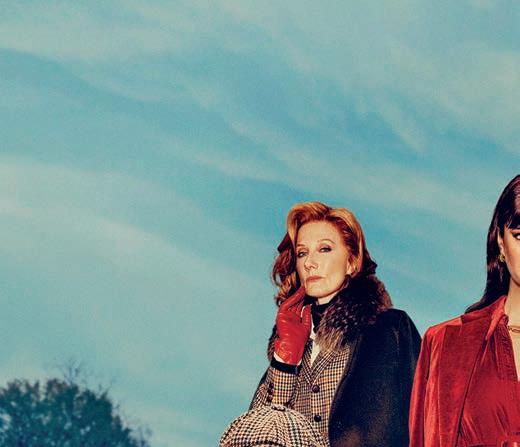

“FILLED WITH STYLE,
PANACHE & LAUGHS . ”







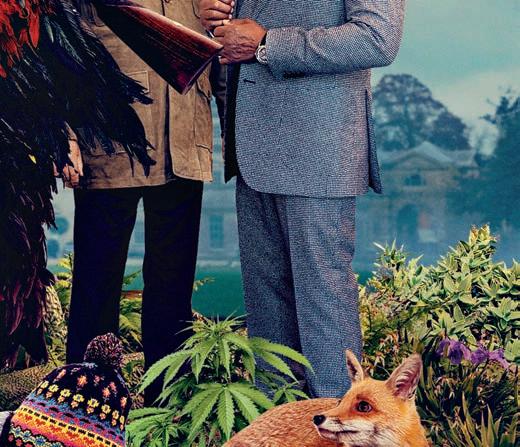












FYC.NETFLIX.COM F YC } OUTSTANDING COMEDY SERIES
CONSIDER A NEW CLASS OF COMEDY
DAVID OYELOWO
THE LAWMEN: BASS REEVES STAR IS WORKING TO “NORMALIZE THE MARGINALIZED” WITH PRODUCTION COMPANY YORUBA SAXON AND STREAMER MANSA
BY RYAN FLEMING
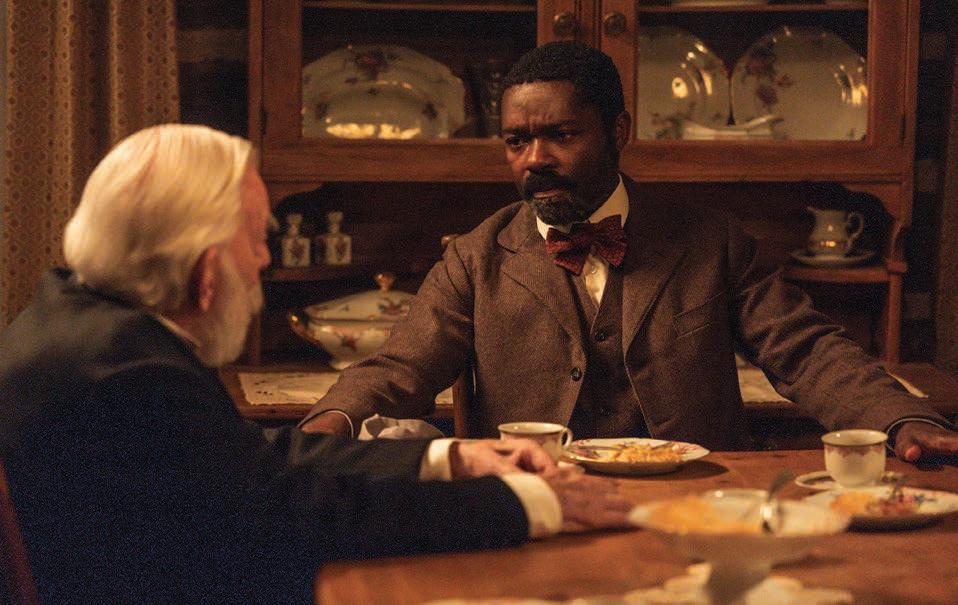
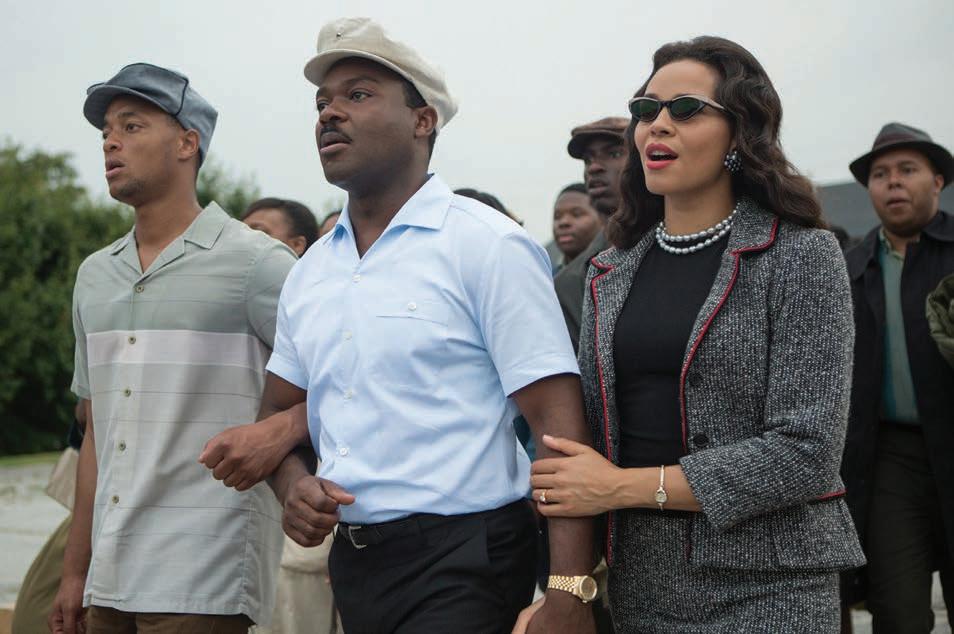
Near the end of the miniseries
Lawmen: Bass Reeves, David Oyelowo’s titular character is told something all too familiar to many unsung real-life heroes: “No one’s gonna ever know, but you made history today.”
“You can just imagine how many people from marginalized communities that is the truth for,” he says. “People who very much had a real hand in building this country, and whether it’s their history not being taught… or that their contribution to history hasn’t been valued in the same way, which is why getting this show made was an obsession.”
That obsession took the form of Yoruba Saxon, a talent-led production company Oyelowo created with his wife Jessica in 2014, though his desire to produce actually came from his “accidental experience” of helping to put together Ava DuVernay’s Selma years before. “I didn’t realize those moves that go on to lead to the project being made was producing, I just knew that I had this deep desire to play [Dr. Martin Luther King, Jr.] and I just kept chipping away to get it made.” Oyelowo’s experience on Selma shaped Yoruba Saxon in many ways, including their rst governing principle—perspective. “In 2007, when I rst read the script, it was a white male director, then it went to another white male, then a Black man, then another Black man, and then eventually it was directed by a Black woman,” he says. “Each time, you saw the narrative slightly shift on the basis of their own bias and perspective.” The shift was so great, that the story of Selma was initially
72 DEADLINE.COM/AWARDSLINE
Selma
LAUREN SMITH, PARAMOUNT+/ATSUSHI NISHIJIMA, PARAMOUNT PICTURES/BRIAN HIGBEE
Lawmen: Bass Reeves

centered on Lyndon B. Johnson, with Dr. King as a side character.
“By the time it got to Ava DuVernay over that seven-year period, not only was Dr. King the protagonist, but the women in the movement were also front and center.”
Their second governing principle being to “normalize the marginalized”, Yoruba Saxon was created with the intent to not just bring less traditional narratives to the screen, but to make them commonplace. “How do we have it so Bass Reeves isn’t anomalous? That Queen of Katwe isn’t anomalous, that Selma isn’t anomalous?” questions Oyelowo. “Because in our business, we constantly talk about comparisons. If you have very few comps, that becomes an excuse not to make it because you don’t have enough data… so there’s a lot of wood to chop to get to the point where some of these narratives are being normalized.”
That lack of comps was just one of the reasons Lawmen: Bass Reeves took nearly a decade to get made. “It’s no secret that shows or lms centering on Black people traditionally have been deemed to have less value, less reach, less potential for remuneration, all of which is not true, and which Bass Reeves
“THEY ASSIMILATE BLACK CULTURE AND THEY REPACKAGE BLACK CULTURE, BUT THEY DON’T NECESSARILY VALUE IT IN A WAY THAT PUTS IT FRONT AND CENTER”
went on to disprove,” he says. With the most-watched series premiere on Paramount+ of 2023, Oyelowo proved that a Blackled series has global appeal, no matter what some might believe. “We were coming up against all of these false notions. It’s the only explanation you can nd and/ or give for a character that is that cinematic, that interesting, steeped in a genre that is that beloved… and in the 150 years since the events that he lived, we haven’t had a show that properly centers him in a major way.”
The success of the Paramount+ series has provided an example of what can be accomplished if a studio trusts their creatives to do something a little di erent. “In lieu of comps, you want successes, which is where a Bass Reeves becomes very useful,” he says.
“You want successes to be able
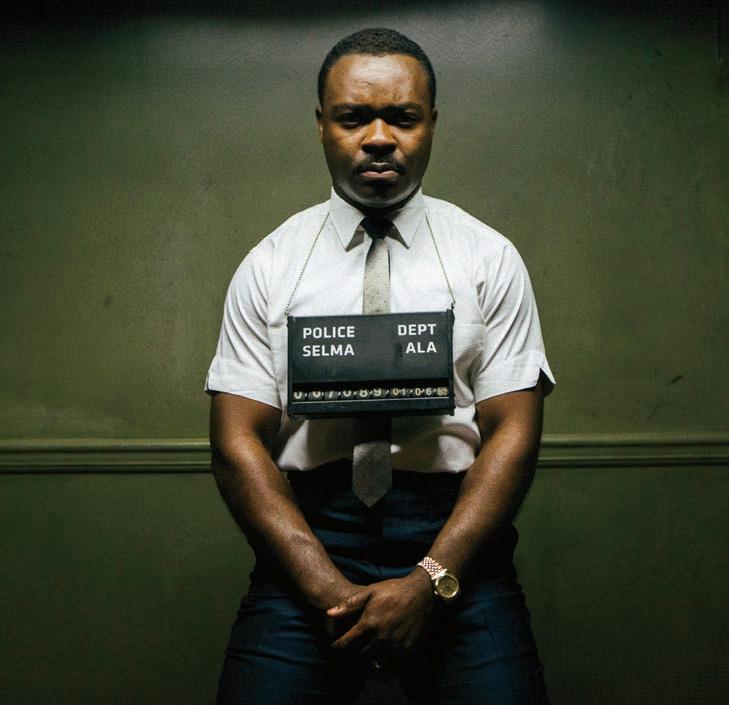
to go, ‘Listen, when Paramount trusted us with something that felt a little uncomfortable, they were rewarded for it. Trust us.’ Now, the chances are that you are going to fail as well as succeed, but that is where you are constantly trying to nd, as we call them, the wins on the board. And it’s terrifying. It’s not for the faint of heart, but this is the business that we’re in.”
After seven lm productions, including the Oscar-nominated 2023 live-action short The After, Lawmen: Bass Reeves is just the beginning of Yoruba Saxon’s foray into the television space. The production company has recently signed a rst-look deal with Apple TV+, which Oyelowo sought after working on Silo and seeing the autonomy they gave series’ creator Graham Yost. “The amazing thing about Apple is that they know what they know and they know what
they don’t,” he says. “They know what good business looks like, but they’re still young when it comes to being creators of content, and that means that their partnerships with creatives are true.”
Their rst collaboration, Government Cheese, is already in the works and Oyelowo says they are o to a “very robust and fruitful” start. “Our show follows a Black family in the valley in the late ’60s trying to get their own piece of the American dream while eating government cheese.” The title comes from the term for processed cheese provided as government subsidized food for people dependant on welfare or food stamps, “a lot of them Black and brown people… It’s a parabolic, absurdist, surreal comedy and the title hints at that.”
In a time where many legacy studios are relying heavily on maintaining their old IP, Oyelowo says he is “incredibly excited” to have the rst-look deal at Apple. “The great thing about Apple is that an Apple original is actually a very real thing. A lot of the time it’s an original idea because they don’t have a library to rely on. They don’t have all this IP to continue to mine, and that’s



74 DEADLINE.COM/AWARDSLINE ATSUSHI NISHIJIMA, PARAMOUNT PICTURES/EDWARD ECHWALU, WALT DISNEY PICTURES/REKHA GARTON, APPLE TV+/NETFLIX
Clockwise From left: Selma, Queen of Katwe, Silo, The After.



FROM THE CREATORS OF GAME OF THRONES FOR YOUR EMMY ® CONSIDERATION

FYC.NETFLIX.COM
OUTSTANDING DRAMA SERIES
incredibly exciting for a creative person who likes to color outside the lines of what we’ve already done or already seen.”
While Yoruba Saxon is seeing success with streaming currently, Oyelowo remarks about experiences he and other Black creatives have had with studios in the past.
“You have this experience of making things that, at some point, you have to hand over to someone else in the hope that they value it as much as you do. It’s a real thing that people can either low ball you in buying the lm, or they can undervalue the project in how they distribute and market it, and then they can put it on or take it o the platform whenever they choose… and shows and lms centering Black and brown people can often be of less value because so many of the decision makers, the gatekeepers, the curators are not part of the demographic.”
Finding the situation “untenable”, Oyelowo worked with Nate Parker, Chiké Okonkwo, and Zak Tanjelo to co-found Mansa in April of 2023. “Much like producing, Mansa started out of necessity.”
Mansa is a free, ad-supported streaming platform with a focus on Black culture for a global audience. “It’s a place where those shows that are traditionally undervalued elsewhere can be valued on a platform by an audience that are engaging with it because they see value in those projects.”
The most important aspect of the platform for Oyelowo is
the curation, which he says is important for engagement. “It’s values-based, and I don’t mean in terms of morality, but in terms of, ‘What are you placing value on?’ There are things that Black and brown people globally place value on that curators don’t. They assimilate Black culture and they repackage Black culture, but they don’t necessarily value it in a way that puts it front and center. But on a platform like Mansa, we don’t just acknowledge that Black culture probably drives the culture—when you think of music, sport, fashion, literature—we actually put it front and center in that narrative. It’s something that is more integrated and organic to the platform.”
Just as his journey to producing rst started with Selma, Oyelowo’s journey seems to have come full circle with a recent Mansa deal. “We literally just closed a deal with my dear friend Ava DuVernay for some of her lms,” he says with a smile. “Not only ones that she’s made, but ones that she has distributed through [her distribution company] ARRAY. That’s just the latest one we’re very excited about, but so many of them are to do with preexisting libraries that, to be honest, just sat there not being platformed. You have all these creatives who sold their work for a pittance and don’t know why no one’s seeing it. Now if you go on Mansa, that is no longer the case.” ★
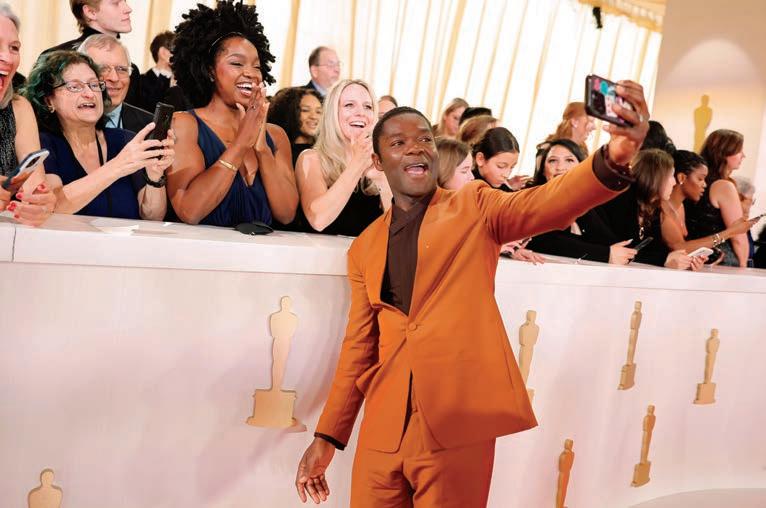

NADYA TOLOKONNIKOVA
THE PUSSY RIOT CO-FOUNDER IS STILL BANGING THE DRUM FOR FREEDOM IN HER RUSSIAN HOMELAND BY MELANIE GOODFELLOW
Nadya Tolokonnikova, co-founder of the feminist protest art collective Pussy Riot, was in Berlin when news broke on February 16 of the sudden death of Russian opposition leader Alexei Navalny in an Arctic penal colony.
Two days later, she was protesting in front of the Russian embassy in Berlin alongside Pussy Riot co-member Lucy Shtein, his lawyer Lyubov Sobol and former Russian state TV employee and 2022 Deadline Disruptor Marina Ovsyannikova.
Like most Navalny allies, Tolokonnikova believes that Russian President Vladimir Putin has blood on his hands.
The activist, artist and performer fronted another Navalny commemoration at the Wende Museum in Los Angeles on March 2.
“They opened their doors for us to make a pop-up exhibit and just let people come together. It’s very important for me that we don't close in on our little selves and grieve alone,” Tolokonnikova says via Zoom.
Tolokonnikova says Navalny was instrumental in her birth as a pro-democracy activist in her early 20s.
The activist casts her mind back to the frst time she saw him speak at an opposition conference in 2011. She and a friend had just anonymously announced the existence of Pussy Riot.
“He came up on stage with his team, a group of young and thirsty-for-freedom professionals. They were extremely organized, focused and positive. It was refreshing. It felt like he already came from some Russia of the future,” she recounts.
“He was very personable, friendly and extremely charming. He gave me this conviction that I needed to build my own movement, just like he was doing, but with a focus on feminism and gay rights. And that's what we did.”
It marked the beginning of a decade of daring art and performance-based activations in Russia challenging Putin’s rule, including the Punk Prayer performance in a cathedral in Moscow which led to a two-year-prison sentence and a spell in a Siberian penal colony.
Tolokonnikova, who is now living outside of Russia, continues to resist Putin from afar.
She is currently gearing up for her frst museum show at OK Linz Center for Contemporary Art in Austria in June.
“It’s called rage. Rage is probably my primary emotion. There is also depression and apathy, but I prefer rage because it's more productive and can result in art, whereas if you’re apathetic, it results in nothing and you only deteriorate.” ★
EMMA MCINTYRE/MAT HAYWARD/GETTY IMAGES 76 DEADLINE.COM/AWARDSLINE
Oyelowo on the red carpet at the Oscar this year.

LIGHTS.
ENCHANTMENT. nmfilm.com
CAMERA.
Christopher Nolan at Ghost Ranch, New Mexico. Melinda Sue Gordon/Universal Pictures
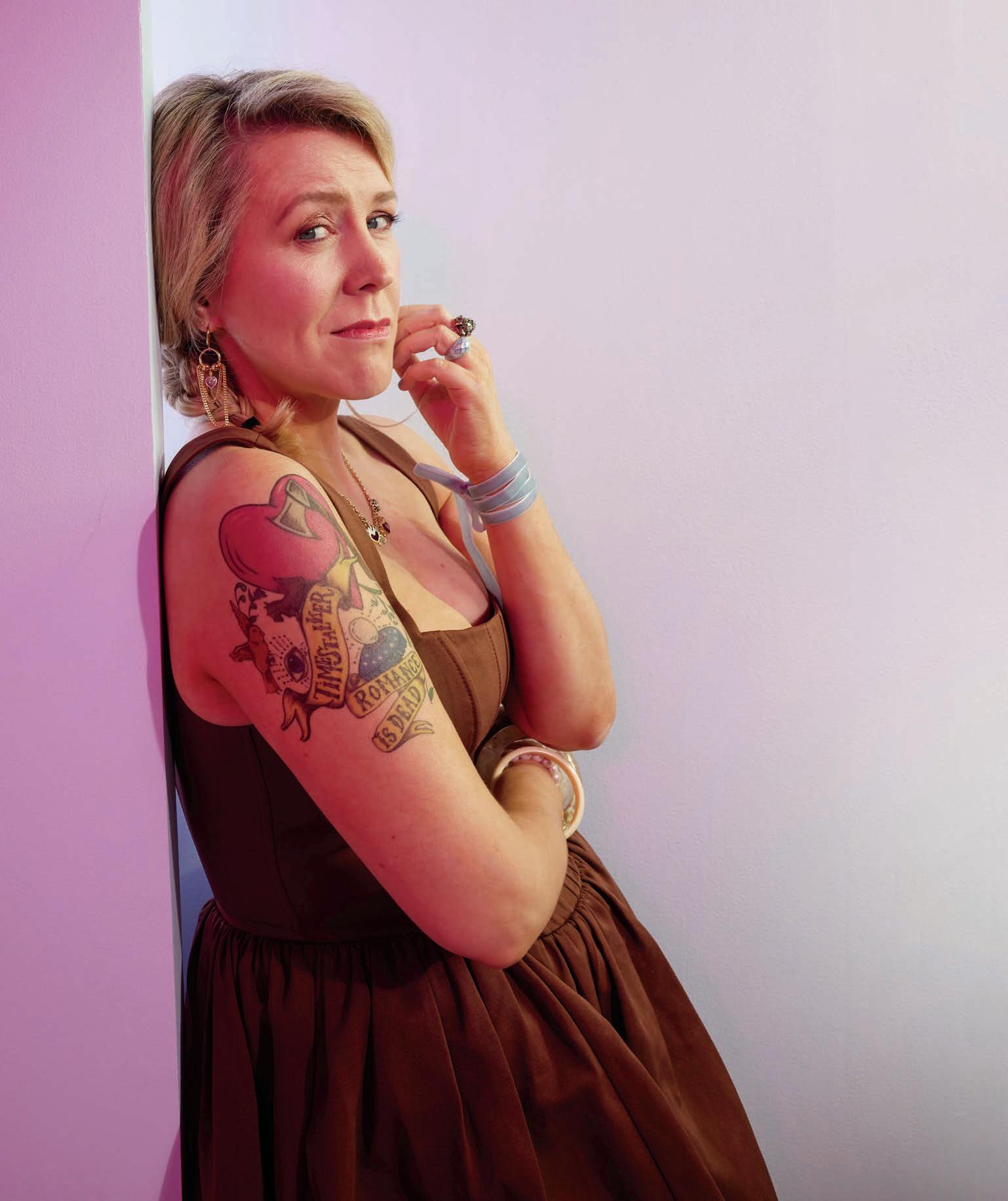
TWISTED SISTERS
ALICE LOWE IS PART OF A NEW GENERATION OF WOMEN DIRECTORS THAT ARE QUIETLY SUBVERTING THE MALE-DOMINATED CONVENTIONS OF HORROR BY DAMON WISE
After she won the Palme d’Or for Titane in 2021, in a which a sociopathic stripper becomes a serial killer and has sex with muscle cars, Julia Ducournau was effusive in her gratitude to the Cannes Film Festival. “Thank you for calling for more diversity in our experiences of film and our lives,” she said. “Thank you for letting in the monsters.” Titane was only her second movie; the first, Raw , made its humble debut in Critics’ Week, but it was recognizably the work of the same artist, being a tender coming of age story about a veterinary student who discovers that she comes from a long line of cannibals. Although Cannes has a long way to go in terms of gender parity, the festival has been quick to tap into the new wave of female-directed horror that has sprung up in the wake of Jennifer Kent’s The Babadook 10 years ago. In Competition this year there’s Coralie Fargeat’s The Substance, the follow-up to her blooddrenched thriller Revenge, and in the Midnight strand, there’s The Balconettes by Noémie Merlant, teased by mk2 Films as “a brazen in-your-face-foray into genre”. And in Critics’ Week we have Emma Benestan’s Animale described by the sidebar as “a Western, slasher, body horror, and revenge lm”—in which a strange beast stalks a French town’s annual running-of-the-bulls event.

COREY NICKOLS/GETTY IMAGES/HANWAY FILMS 78 DEADLINE.COM/AWARDSLINE
From left: Alice Lowe; Timestalker.
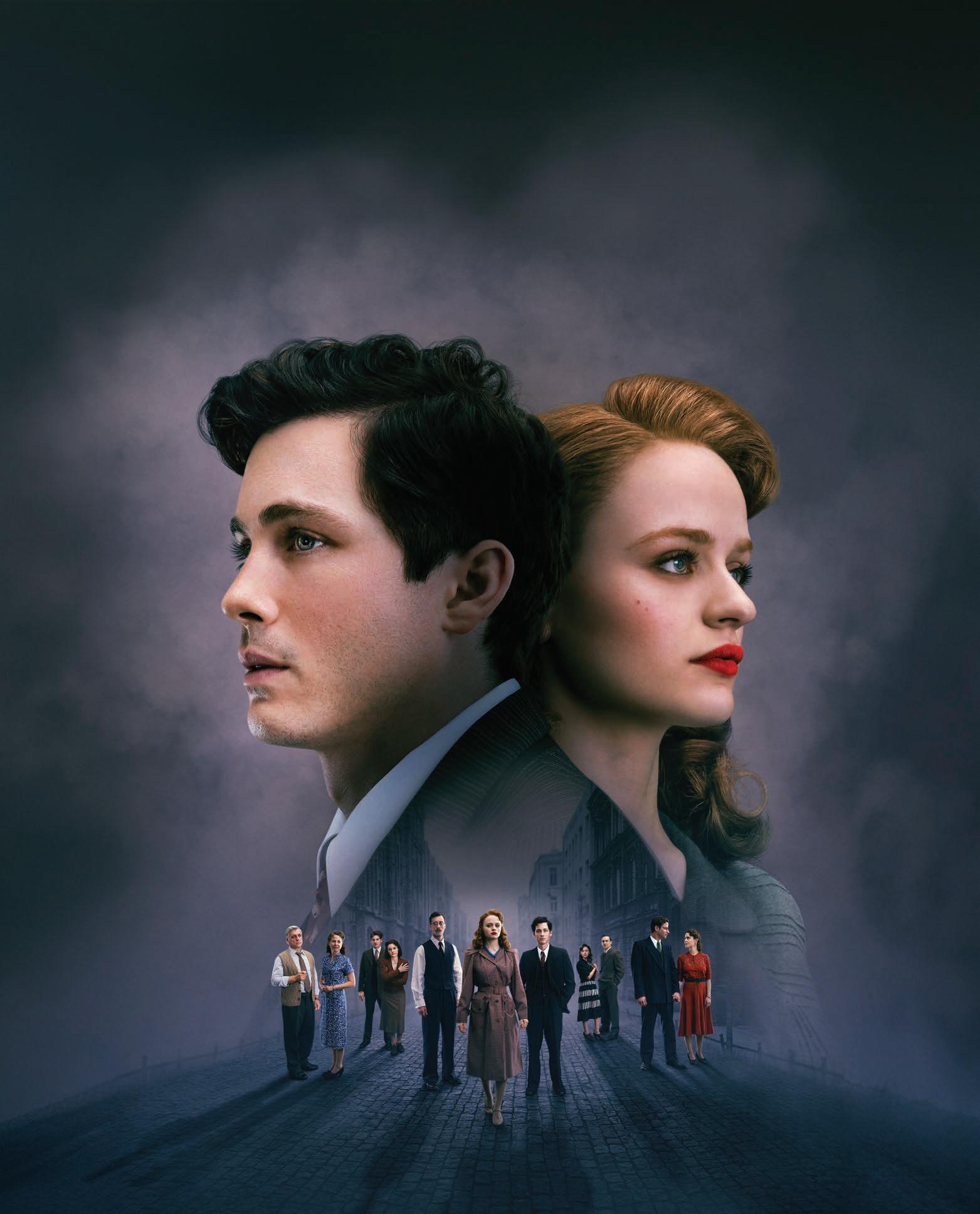
FOR YOUR EMMY ® CONSIDERATION OUTSTANDING LIMITED SERIES LEAD ACTRESS JOEY KING LEAD ACTOR LOGAN LERMAN
“A SPRAWLING STORY OF SURVIVAL. THE ENTIRE CAST IS EXCELLENT.” PASTE
“A POWERFUL DRAMA OF SURVIVAL. JOEY KING SHINES.”
DAILY BEAST
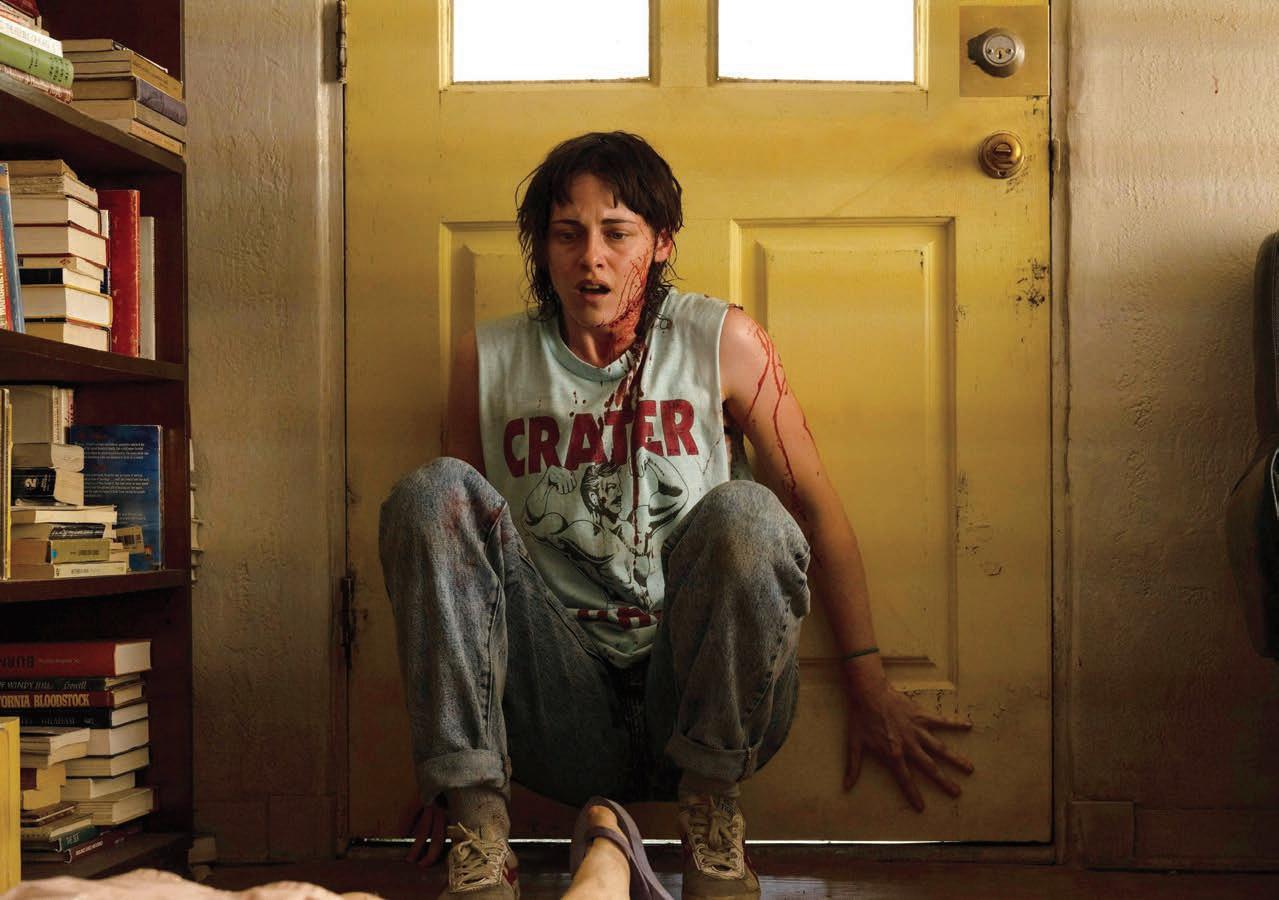
Outside of Cannes, the phenomenon has also been embraced by Sundance, where The Babadook debuted, and which recently hosted the world premiere of Rose Glass’s steamy, sexually transgressive, steroid-abuse crime story Love Lies Bleeding. SXSW isn’t far behind either; the Texas festival introduced audiences to Alice Lowe’s Timestalker, a British horror comedy with roots in 18th century romantic ction and Monty Python. Once again starring Lowe, Timestalker tells the story of Agnes, a woman condemned to relive the same doomed love story in di erent settings and centuries.
As an actor, Lowe has been familiar to genre fans for her work with British directors such as Edgar Wright and Ben Wheatley, with whom she made Sightseers in 2012. She made her debut behind the camera in 2016 while heavily pregnant; the lm was called Prevenge and starred Lowe herself as a grieving widow whose unborn child commands her to kill, messily, the people she believes were responsible for her husband’s death.
“I loved making Prevenge,” she says now. “I really enjoyed it, but the number of people that were like, ‘God, I’m sorry you had such a terrible, traumatic experience with pregnancy…’ I’d be like, ‘It’s not a documentary! I had a whale

of a time. I was living my best life.’ Appearances can be deceiving! But, having said that, I love to test the audience’s tolerance, really, as regards what they expect from a female lmmaker.”
By way of comparison, she mentions reading a review of Jane Campion’s The Piano. “They said, ‘It’s like a childish fairytale,’” she recalls. “It was such gendered way of seeing it, I thought, because, to my mind, all lms are fucking fairy tales! Who thinks that anything that comes
out of one person’s mind is necessarily more valuable than what comes out of someone else’s mind? But I think there’s a pressure on women to show what women are, [to show] the reality of what women are.
“I feel like that’s our social responsibility with lm at the moment,” she continues, “and I’m not having that. I’m a fantasist. I’m deluded. I’m a deluded fantasist, and that’s what my lms are going to be about. And why shouldn’t they be? I think that was de nitely my reaction to the era that we’re in, and I’m so delighted there’s so many lmmakers out there—female lmmakers—who are breaking new ground.”
Though Rose Glass also uses explicit gore as one of her tools, primarily to make her audience squirm, Lowe revels in the absurdity of it all. The violence in her lms is apt to be graphic yet utterly ridiculous. “I like outraging an audience,” she says. “Isn’t that what it’s about? If you’re making an independent lm, you’re not trying to not rock any boats. I’m not making a Hallmark card, studio romcom. I’m trying to ru e some feathers.”
Lowe suggests that, in some ways, horror is a relatively safe area for women to work in, since it’s a solidly commercial genre in terms of sales, and that balances out some of the usual
80 A24/DOMINIQUE CHARRIAU/WIREIMAGE DEADLINE.COM/AWARDSLINE
Rose Glass
Love Lies Bleeding
FOR YOUR EMMY ® CONSIDERATION OUTSTANDING LIMITED
SUPPORTING ACTRESS
RILEY KEOUGH LILY GLADSTONE


“ RILEY KEOUGH IS PHENOMENAL.
INSTANTLY GRIPPING.”


“ LILY GLADSTONE IS SPECTACULAR. SHE’S AN UNPARALLELED SCREEN PRESENCE.” COLLIDER
SERIES


concerns about femaledriven stories. As long as a horror lm delivers the requisite chills and kills, the horror audience can be very accepting of changes to the formula. Proof of that fact is that it would be impossible to make a modern-day slasher movie today, with ’70s levels of sexism and sexual sadism, without a signi cant level of irony.
“For me, it’s about perspective and interiority,” says Lowe. “That was the whole thing with Prevenge. I was saying, ‘I’m going to make you see the world through this pregnant woman’s eyes. I’m not going to let you have another person to latch onto.’ I often use Taxi Driver as an example. When people say, ‘I don’t like the main character,’ I’ll say ‘Do you like Travis Bickle? Do you want him to be your best friend? I don’t think so. But you still watch his story.’ With Prevenge, I wanted to create a female character that was like that. You don’t have to like her, that’s ne. You’re just going on a journey with her.”
This, she thinks, is true of Timestalker as well. “It’s like you’re in this woman’s head,” she says. “You don’t have any choice. There’s nowhere to run. It’s probably one of the darkest lms I’ve made, in that way, even though I didn’t try to make it dark. Because you’re just in this woman’s world and you don’t get out of it. You’re not allowed out of it.”
Furthering the comparison with Taxi Driver, Lowe explains that her primary urge is to rebel against gender expectations. “I wanted to tell a story that would force you into the perspective of a person who is typically reviled,” she says. “There’s a certain horror trope—like Kathy Bates in Misery or Glenn Close in Fatal Attraction—of the woman as monster. I wanted to say, ‘Well, what’s her story? What’s she got to say about it? How does she feel?’ And then I’m going to force you to feel how she feels, because you are going to see it from her point of view. I want the audience to feel like they haven’t seen this story before, even if they think they have.” She laughs. “Especially if they think they have.” ★
AKELA COOPER
THE GENRE TV SCRIBE AND FEATURE FILM WRITER TALKS ABOUT PUTTING THE FUN BACK INTO HORROR
BY DESTINY JACKSON
While most families spend their nights huddled around the TV watching the latest PG-rated family-friendly fodder, horror writer Akela Cooper’s family was up to something sinister. “I watched a lot of R-rated horror movies with my brother, sister and my parents,” Cooper recalls with a laugh. Often enthralled by the latest creature feature or delightfully spooked by a certain striped-sweater-clad knife-fngered dream demon hell-bent on terrorizing small-town teenagers while they slept, Cooper had an innate pull to becoming a professional Hollywood horror writer.
“Horror speaks to me in ways other genres don’t,” Cooper says. “Horror and sci-f allow you to address real-world issues with a shiny veneer that allows you to have a message without people feeling like it’s preachy. You get to do crazy shit, as long as you have rules that you follow—and those are fun.”
With two viral cult hit features under her belt, Malignant and M3GAN, made in collaboration with horror writer-director James Wan, Cooper is not only having fun but is also twisting the rules on the well-worn horror genre, the B-movie. The low-budget flms were initially conceptualized for quick, consumable entertainment and scares, not longevity. However, Cooper managed to maintain the essence while also pushing the boundaries of the genre.
2021’s Malignant is a gonzo giallo-inspired slasher that is equal parts campy and violent. The flm centers on the murderous fury of a telekinetic tumor that emerges from the back of a woman’s skull. Though not a box offce success as it was hampered by the pandemic simultaneous theater release to streaming model, it found a relatively stable wordof-mouth cult following online. The following year’s release of M3GAN, however, would be considered a huge success in more ways than one. The AI-centric story acts as a cautionary tale about the dangers of technology wrapped up in the cute but murderous hijinks of a high-end perfect companion doll for children. At the behest of Wan, who craved a modern-day version of Child’s Play for a new generation of horror fans who didn’t grow up with that franchise, Cooper took a risk at treading familiar ground while making it delightfully bonkers in the process. M3GAN surprised at the box offce pulling in $180 million against its $12 million budget. In addition, the viral swoopy murderous dancing involving a paper cutter seen in the flm garnered .3 billion views
on TikTok, cementing her place in pop culture as a horror movie icon.
With numbers like those, it was clear that the pair had tapped into something audiences wanted. In juxtaposition to the recent onslaught of elevated horror by the likes of contemporaries such as Jordan Peele or Ari Aster, perhaps there is more of a desire to consume wacky horror that straddles the line between B-movie quality and emotionality.
“Elevated horror is still the acceptable horror right now. We’ve punched some holes in that with Malignant and M3GAN to make way for B-movies, which I was happy with,” Cooper explains. “You got stuff like Barbarian and Smile, which was half elevated, half B-movie, monster movie, which was cool. Right now, the market seems like a 60/40 split for elevated versus traditional B-horror movie tendencies.”
Cooper goes on to acknowledge the unique element in her projects that not only translates to box offce success but also leaves a lasting cultural imprint.
“People are responding to fun. And I’m by no means shitting on elevated horror, but Hereditary is a damn good horror movie, but it’s not fun,” she says. “What I was missing was the sense of renting videos and watching them with your friends at 2 a.m., and just being scared shitless and giggling enjoying the craziness of the movie. I think audiences responded to Malignant and M3GAN in that way because it’s a fun communal horror experience when you start to see M3GAN singing ‘Titanium’, and you’re not the only one in the theater going, ‘What the fuck? This is funny.’ The great thing about horror is that it’s a community. I think audiences are responding to the B-movie fun of what I hope I am bringing to horror.”



82 DEADLINE.COM/AWARDSLINE
Revenge
From top: M3GHAN Malignant; writer Akela Cooper.
NEON/SYLVIN LEFEVRE/GETTY IMAGES/PRICILLA GRANT/EVERETT COLLECTION/UNIVERSAL/WARNER BROS.
Coralie Fargeat
FOR YOUR EMMY ® CONSIDERATION INCLUDING
COMEDYOUTSTANDING SERIES
OUTSTANDING LEAD ACTOR IN A COMEDY SERIES
PATRICK BRAMMALL
OUTSTANDING LEAD ACTRESS IN A COMEDY SERIES
HARRIET DYER

“ +++++ UNFAILINGLY FUNNY AND PERFECTLY ACTED.” THE GUARDIAN
“ A JOYFULQUICK-WITTED, NEW SERIES.”
VANITY FAIR
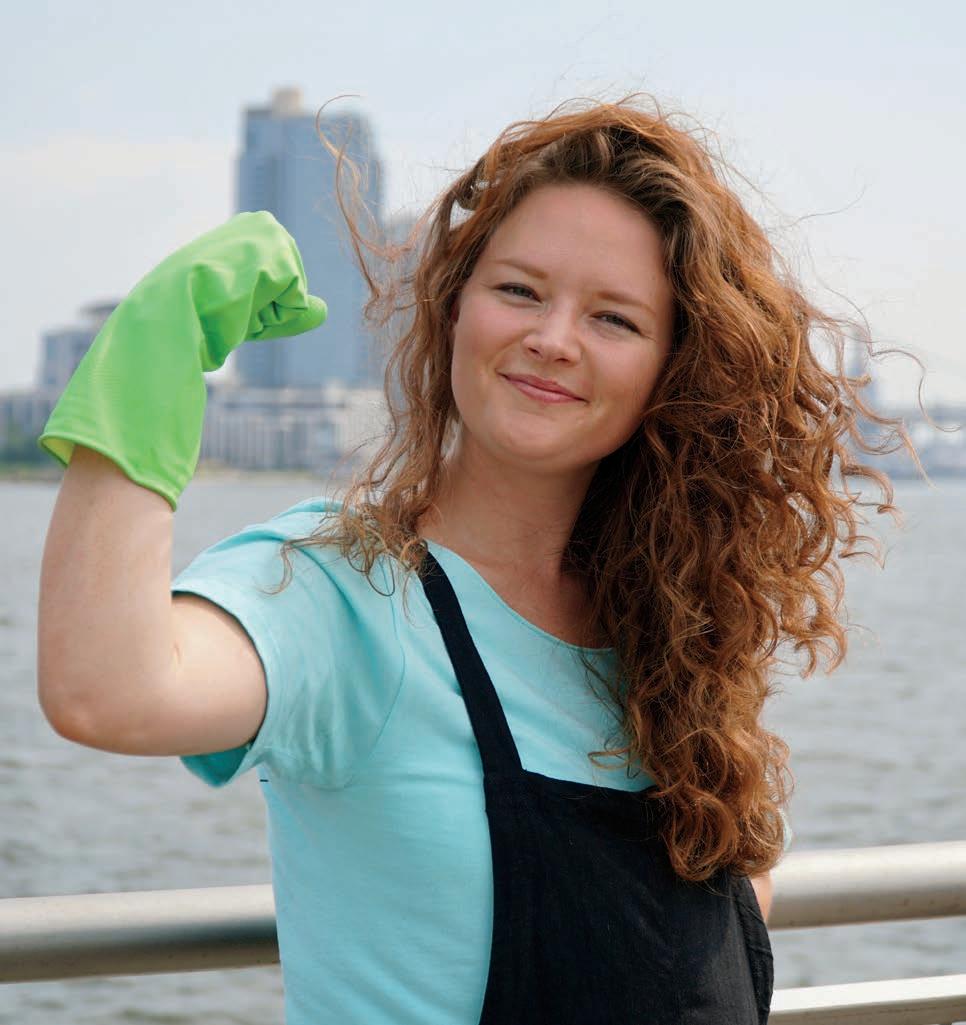
SUSTAINABILITY HEROES
CLIMATE WARRIORS ARE CONVINCING PRODUCTIONS TO EMBRACE STRATEGIES THAT REDUCE THEIR CARBON FOOTPRINTS
BY DIANA LODDERHOSE
Behind the glitz and glamour of lm production, there are an increasing number of eco warriors in the industry who are tirelessly working behind the scenes to ensure not only that productions become more environmentally sustainable long term, but are also engaged in educating the sector and promoting climate storytelling on screen.
Emmy-winning and Oscar
nominated producer Lydia Dean Pilcher, who founded New Yorkbased production company Cine Mosaic, was one of the earliest advocates for sustainability in the entertainment sector. After becoming a mother, and inspired by Al Gore’s 2006 documentary An Inconvenient Truth, the producer-writer-director—whose credits include The Darjeeling Limited, Queen of Katwe and Radium
Girls (a climate narrative that she co-directed)—immediately felt compelled to be an ambassador for greener solutions in the industry. She trained at Gore’s The Climate Reality Project before co-founding the Producers Guild of America’s PGA Green and GreenProductionGuide.com, an online industry tool kit designed to reduce the lm, television and streaming industry’s carbon
footprint and environmental impact. Pilcher also serves as a chair of the Directors Guild of America’s Sustainable Future Committee, and was one of the earliest U.S. producers to measure carbon footprints on productions after receiving a grant from the Alliance of Climate Protection, which she rst tested out with her colleague Mari-Jo Winkler on Sam Mendes’ 2009 Focus Features production Away We Go, which Winkler was also executive producing. Shortly after that, she kickstarted the sustainability committee at the PGA.
“We’ve gone through a big shift from where we started,” says Pilcher. “Right now, the climate crisis has accelerated and more and more people in their daily lives have had some touchdown to oodings or wild res or pollution that requires masks, so now it feels like people are really on board to be greener with their choices. Climate denialism is not a thing for anybody’s who’s in touch with what is going on.”
In 2014, Pilcher realized the industry needed an action plan and the PGA released a call to action. “We realized we couldn’t just be talking about plastic water bottles and recycling—we needed to be doing something bigger with energy. It was abundantly clear to us that we needed to transition to electri cation in our industry.” The PGA then gave a clear set of recommendations on best practices to achieve those goals and it now hosts an inter-guild Sustainability Alliance, which includes all the major unions in the U.S. industry.
“It’s a powerful group,” she says. “We are living in a climate-altered reality and it’s going to be a climate-altering future, and we have to think about what we can do to just keep it from going further. Clean energy transition is super important and that’s really what we’re putting all of our energy into.”
Emellie O’Brien, founder and CEO of Earth Angel, is another pioneer in the sustainable lmmaking evolution, having worked on more than 160 major lms, television series and commercials since 2011 to reduce their environmental impact. Her
84 DEADLINE.COM/AWARDSLINE EARTH ANGEL
Emellie O’Brien, founder and CEO of Earth Angel.

“UNPRECEDENTED TWISTS… EMOTIONAL CRESCENDOS EVERY WEEK”





“





©2024 CBS Broadcasting Inc.
sustainability leadership on The Amazing Spider-Man 2 was hailed as one of Sony Pictures’ most ecofriendly blockbusters. In 2013, she founded Earth Angel to expand her expertise and impact and has since worked on projects such as Darren Aronofsky’s The Whale, AppleTV+’s Severance and Martin Scorsese’s Killers of the Flower Moon
“I knew what a powerful medium this was and really wanted to help leverage it toward educating folks on these important issues,” says O’Brien. “It wasn’t until I got onto my rst professional lm set where my eyes were really opened to the amount of resource ine ciency that was happening.”
O’Brien emphasizes the importance of education, collaboration and transparency, highlighting the need for better resource management practices and including reducing waste and fuel consumption and prioritizing sustainability in the initial planning stages.
While she admits the lm and TV industries aren’t the biggest polluters in the world, she points to the lack of data as an alarming signal. “What we do know is that we ultimately produce a luxury good and there is a ton of opportunity to be reducing that impact and the amount of emissions that we’re seeing on these projects is quite staggering.”
Like Pilcher, initial conversations with budget-conscious producers were challenging when Earth Angel rst set out: “I had phone calls with producers after we laid out our whole program who said to me, ‘I’m not here to save the planet, I’m here to make a TV show.’”
That mindset is starting to change, she says. “I typically tell producers to think of us as their sustainability
department. In the same way that most productions have specific departments, we function very similarly.” These plans are bespoke to each production and tracked through a production’s life cycle.
But how does one persuade budget-conscious producers to integrate a sustainability department into their budget at the planning stages when the wider assumption is that greener solutions can often be more expensive in the current age?
“We have to show numbers in ways that make sense for what we communicate, which doesn’t always align with how production budgets are structured,” says O’Brien. “So, that’s been a challenge over the years, but we have been able to show how there are savings.”
She points to reuse strategies for materials as more cost e ective than calling in dumpsters as an example. In A24’s The Whale, they were able to repurpose the entirety of the house set. She credits Aronofsky as an “enormous advocate” of sustainable productions. “When you have the luxury of having talent involved advocating this, it goes a long way.”
Education, she adds, is paramount and O’Brien points to “great resources” such as Pilcher’s GreenProductionHub.com and BAFTA albert (more on that later) as good places for production teams to start.
“The number one thing that makes sense to me is to donate your food,” says O’Brien. “Figure out a plan to donate your food because you’re going to save money and you’re not spending as much in waste removal.”




Last year in the U.K., the British Film Institute announced a package of industry support to its new BFI National Lottery Sustainable Green fund, investing, £586,755 ($724,839) into two industry leader programs—Julie’s Bicycle and BAFTA albert—in a bid to help the U.K. industry tackle the climate and ecological crisis. At the same time, the public funding body hired Keir Powell-Lewis into the newly created role of Head of Environmental Sustainability at the BFI.
Julie’s Bicycle provides a range of free resources and tools for BFI supported projects, such as the Green Cinema Toolkit to help projects track their impacts while BAFTA’s albert has extensive experience in delivering screen industry production and editorial training. BAFTA albert’s carbon calculator was rst developed within the television productions sector, where it is widely adopted, but now is making a push into the lm sector. All feature productions backed by the BFI as well as co-funding bodies such as BBC Film and Film4 are all required to seek BAFTA albert certi cation.
Powell-Lewis notes that an industry consultation with BritainThinks found that “environmental sustainability is really important to the sector, but no one really knows whose job it is.”
“It feels like one of those topics that everyone knows is important but no one feels that they can x themselves in a way that is meaningful,” he says. The BFI made it a strategic principle for BFI-backed projects to meet sustainability criteria. “When we did this, we knew we needed to give these projects the support to do that.”
It partnered with BAFTA albert to ensure the training and resource provider was able to support the industry in managing and reducing its carbon footprint e ectively across all areas. “We needed to bring people together to tackle sustainability almost as a pre-competitive issue so that we’re able to make a step change,
rather than just tinkering around the edges.”
Powell-Lewis points out that “the greenest solution is not always the more expensive solution,” and found that when it came to productions, there was a real issue with “overspeccing of power generation.”
“Some of the data we got suggests that people are overspeccing on power to the tune of about 80%. So, we know that the energy draw on grid connections is somewhere in the region of 18-22% of what they were speccing on their generators, and that’s a huge education piece for us.”
The BFI is also in the early stages of a project with ITV to decarbonize on location production and make grid connections across the U.K., which Powell-Lewis says is a “real collaborative e ort.”
Matt Scar , managing director of BAFTA albert, stresses that there are “a lot of myths around the world of sustainability” and the organization prides itself on training people how to frame questions around making every section of a production greener.
“It feels like the load right now is on a sustainability specialist within, but actually it should be everybody’s responsibility,” he says.
Storytelling, meanwhile, also has a crucial role to play when it comes to changing perception in the business. Pilcher, who is a convener of 60 climate storytelling organizations in the industry “all working in di erent facets of the research”, says she’s seeing a movement in Europe and the U.S. when it comes to representing climate storytelling.
“It’s really an underutilized solution,” she says. “Toxic chemical companies and fossil fuel companies have known for a long time that they were contributing to planetary damage and that’s one of the reasons that climate storytelling is important because they’ve squeezed it out of our screens.”
And it doesn’t have to be dystopian storytelling that makes audiences feel “helpless and have feelings of anxiety,” she says.
“What we’re trying to say is that we can do this, and come up with solutions and we can work together, and we can have agency and you will feel so much better about your world if you lean into it.” ★
86 DEADLINE.COM/AWARDSLINE BAFTA/POLLY THOMAS/BFI/EARTH ANGEL
BAFTA albert's Matt Scarff; inset, albert certifcate.
From left: Lydia Dean Pilcher, and Keir Powell-Lewis.

“HILARIOUS. ONE OF THE BEST AND BRIGHTEST COMEDIES ON TELEVISION . ”
“AS CHARMING AS EVER . THE WRITING IS HILARIOUS. EVERY CHARACTER CONTINUES TO DELIVER . ” COLLIDER
FOR YOUR EMMY ® CONSIDERATION PASTE
PRODUCERS UNITED
SOME OF HOLLYWOOD’S MOST SUCCESSFUL PRODUCERS ARE BATTLING FOR UNIONIZATION AND THE WELFARE OF THE NEXT GENERATION
BY MIKE FLEMING JR.
Agroup of 86 producers responsible for generating the lion’s share of lm and TV in Hollywood have banded together to form Producers United. While acknowledging they have made a good living, the collective aims to address the fact that producers typically spend lengthy periods in development with little to no pay or bene ts. This means that only tenured producers—those with enough personal assets to survive long, speculative stretches—can survive within the current system. And, without essential support, up-and-comers struggle to nd a foothold. Producers United members want to open the doors for the future generations of producers-in-training, and they feel that inaction will not only hurt the producers, but surely whittle down the in ux of creative minds in the business, and thus the quality of future projects.
“I don’t think what we are suggesting will be painless, but we believe it’s not wildly painful, either,” said Lorenzo di Bonaventura, one of the most proli c makers of big studio pictures and among the few left who still has an overall deal at a major studio. “We’re talking about basic American rights here. You have a right to work and get paid for it, and you should have healthcare.”
Hollywood is coming o a crippling strike with another potential labor stando with Teamsters and IATSE in July, and yet, without the muscle of a union with collective bargaining behind them, producers stand alone.
“What we’re asking is to face up to a basic commitment,” Di Bonaventura says, “which is to pay people for their work and give them a little protection. This is not bone breaking from a monetary point of view. We recognize that we’re asking them to take a step, but we don’t believe it’s that big a step. But it’s a huge step for the emerging producers.”
That’s why the 86 producers who make about 90% of Hollywood lms are seeking reforms they say will head o an “extinction event” for future generations of producers. The cost seems nominal, mainly moving around money that will be applied to the fee that kicks in after a green light, and right before production begins.
It’s hard not to sympathize with the producers, especially during the crucial period of development that largely determines whether a lm or pilot will be any good. While writers and everyone else get paid, career producers who oversee the whole process are expected to survive on half of a $25,000 development payment—the only thing sustaining them for a period that could may be anything from, say, nine months, to more than a decade. Studio overall deals are becoming rare, and those who don’t have one have to just hang on. Not to mention, the lack of healthcare.
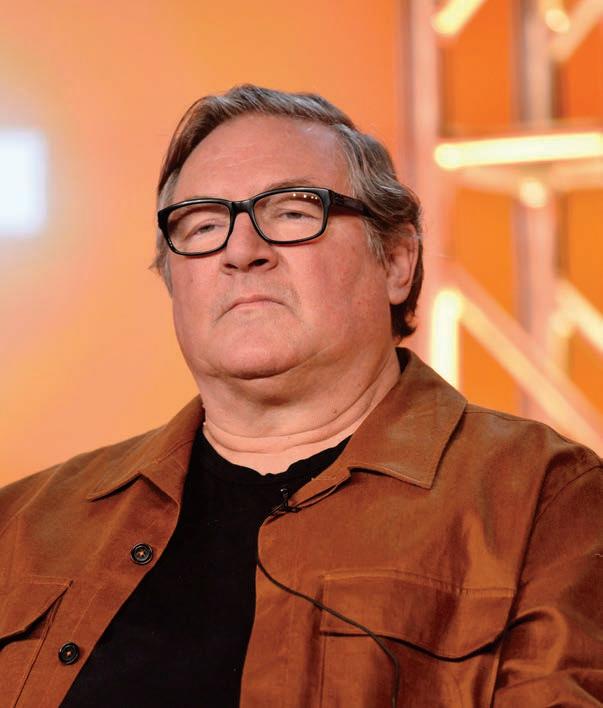
Worse, these producers are the ones signing a paper that places them on the hook for budget overages and anything else that goes wrong, even a decade after the project’s release. At that point, studios certainly don’t want to hear about the results of audits that require extra residual payments. Producer fees might be generous when things work out, but if a project dies in development, all that upfront work is for naught. Small wonder they liken themselves to wildcatters, those who drill and only get rich when they strike oil.
Even if they hit the geyser, producer residuals have been capped. Plus, they’ll be the ones to take a haircut on their fees if budgets are crunched or extra producers are added, with the threat that refusal will kill a project in its tracks.
Producers United believes its coterie of career producers—those whose allegiance is solely to the project—are vital toward being the rst line of defense against budget overruns and set safety. Of course, the latter is on everyone’s mind after the tragedy of Rust.
Producers United also believes that most of the CEOs don’t even know about their plight, and the hope is, that by spreading awareness, the issue might be addressed.
So why don’t the producers have the muscle of a union behind them? It’s not for lack of trying. In 1950, they had the Screen Producers Guild, which in 1968 brokered a deal with AMPTP that put producers on par with the DGA. Except, the WGA challenged its authority to rep producers, because many had ownership stakes in the studios, and the California Courts agreed. That situation no longer exists, but the PGA was denied another attempt to unionize in 1983. The NLRB ruled that producers were still essentially an arm of the employers, and shared in the proceeds.
Producers United hopes to avoid that and to persuade the bosses that these reforms will be best for their business. But many of the same producers last year petitioned the AMPTP to drop the word ‘producers’ from that moniker, because it made them seem at odds with labor guilds like WGA, SAG-AFTRA, IATSE and Teamsters. While it would have essentially amounted to the cost of new stationery, their appeal so far has fallen on deaf ears.
 SAG-AFTRA Strike
SAG-AFTRA Strike
One particularly intriguing part of this is that these producers should have allies among the studio chiefs. After all, it is inevitable they will eventually be former studio chiefs. Odds are, they will transition to producing, putting them in the same boat with those whose course they are currently well-positioned to change. ★
88 DEADLINE.COM/AWARDSLINE JEROD HARRIS/GETTY IMAGES/VALERIEMACON/AFP VIA GETTY IMAGES
Lorenzo di Bonaventura

FYC
DEEPIKA PADUKONE
RACKET TO ROCKET: INDIA’S SURPRISE SUPERSTAR IS ON A MISSION TO BREAK DOWN BOUNDARIES AND
TABOOS
BY DIANA LODDERHOSE
For two consecutive years, Deepika Padukone has kickstarted India’s box o ce with a bang: In 2023, the acclaimed actor and producer reunited with her Om Shanti Om co-star Shah Rukh Khan for espionage actioner Pathaan, which went on to take $76 million in India and crossed the $100 million global box o ce milestone without a China release. This year Padukone starred in Viacom/ Mar ix’s Hindi aviation actioner Fighter (from Pathaan director Siddharth Anand), which grossed $43 million globally in just 30 days.
“Of course, the success of a movie is important, and box o ce is important, and the awards and accolades are important, but for me, as a person, the time I’ve had with people and the experiences I have on the set of a lm are the most important,” Padukone says.
The former Cannes jury member, who is now one of India’s biggest female stars, rst broke into the Hindi cinema scene in 2007 with blockbuster hit Om Shanti Om opposite Bollywood legend Khan. The lm is largely considered one of the country’s most classic titles, and when its director, Farah Khan, cast unknown model and former badminton athlete Padukone (Deepika’s father is Indian world champion player Prakash Padukone) as its leading lady without even auditioning her, it quickly catapulted her to star status.
“It was sort of unheard of,” says Padukone of the experience. “I remember thinking, ‘Why would they put so much money into such a big movie for such a big superstar and then cast me opposite without even an audition?’” But, according to Farah Khan, she saw something in Padukone that had yet been undiscovered—a unique mix of the old and modern world of Indian cinema.
“When I think back, I think of myself as so young and naïve and lost but at the same time, I felt so protected and I really couldn’t have asked for a better debut, because they protected me

and they didn’t need to,” says Padukone. “They made sure that I emoted well and that I said my dialogue well, and made me feel included and comfortable. And then when we started promoting the movie, they really propped me up and put me out there and my life changed overnight.”
Since then, Padukone has starred in a raft of hit lms such as romantic comedies Cocktail, Yeh Jawaani Hai Deewani, and Chennai Express, as well as heist comedy Happy New Year and period dramas Bajirao Mastani and Padmaavat. There’s also 2015’s Piku, for which

HOUSE OF PIXELS/VIACOM/ EVERETT COLLECTION 90 DEADLINE.COM/AWARDSLINE
Padukone in Fighter.

FOR YOUR CONSIDERATION
OUTSTANDING LIMITED OR ANTHOLOGY SERIES
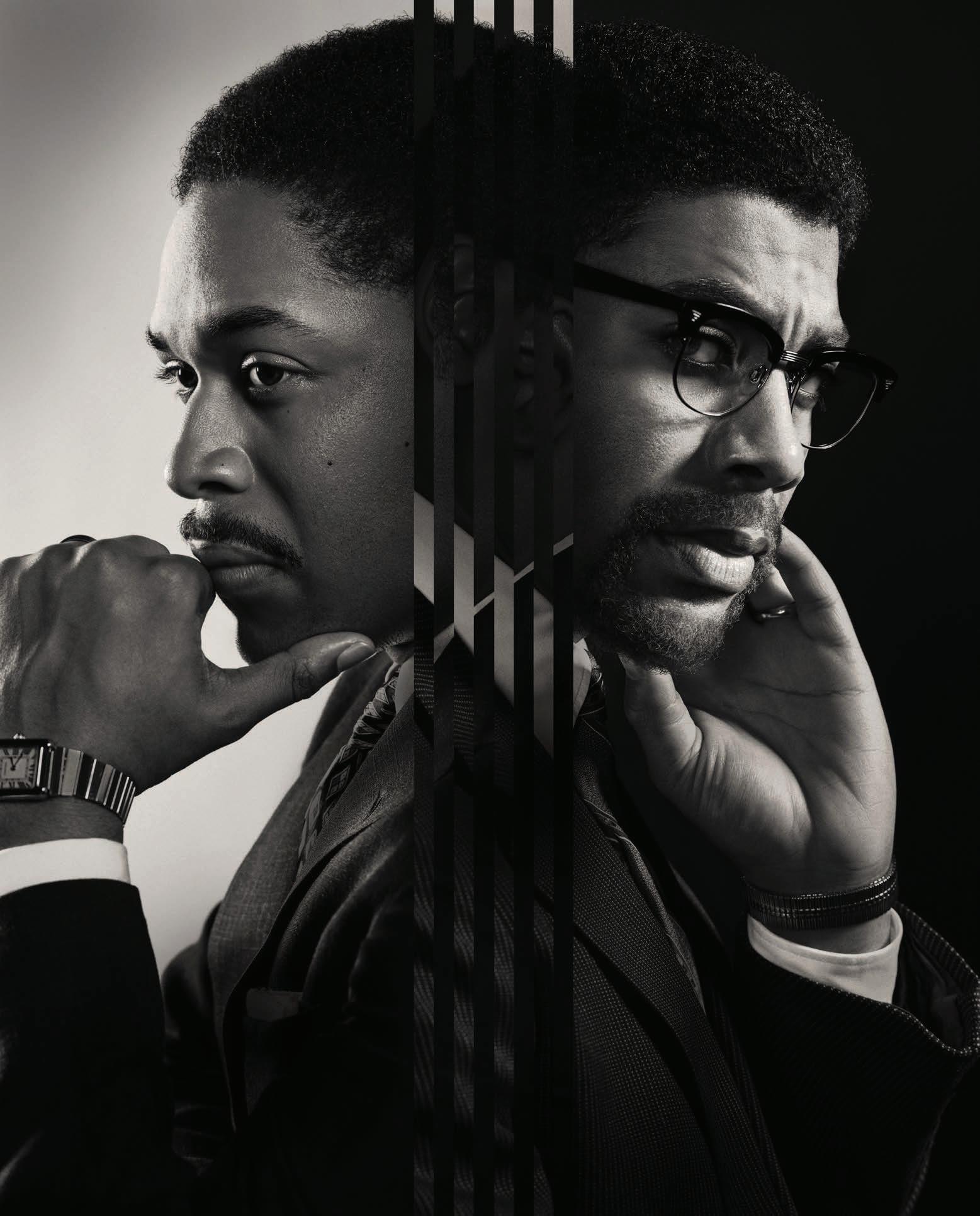
TWO MINDS, ONE MOVEMENT
“HARRISON AND PIERRE GIVE UNBELIEVABLE PERFORMANCES. A STUNNING OFFERING THAT DELIVERS A PUNCH FAR TOO GREAT TO IGNORE.”
THE WRAP
“AN ENTHRALLING ILLUSTRATION OF THE CIVIL RIGHTS MOVEMENT AND ITS LEADERS.”
VARIETY




she won two Filmfare Awards for Best Actress.
This year, she has Kalki 2829 AD set to release in May, which also stars Telugu actor Prabhas, an epic sci- lm that she describes as “part mythology set in a post-apocalyptic world” and she is currently lming Singham Again, the third instalment of Rohit Shetty’s Singham series, which also stars Padukone’s husband Ranveer Singh.
Later this year, she’s slated to star in a Bollywood remake of the 2015 Robert De Niro and Anne Hathaway lm The Intern, which Padukone will also produce via her Ka Productions banner. It will be the second project from the production company after 2020’s Chhapaak, in which Padukone played acid attack survivor Laxmi Agarwal.
Padukone is one of the few Bollywood actors who have managed to break into Hollywood
DROPOUT
having made her English-language debut in 2017’s XXX: Return of Xander Cage with Vin Diesel. “About a decade ago, when I started my journey in the West auditioning, it was a really new process for me because I’d never had to audition. I wasn’t a trained actor, and I never went to a fancy acting school—everything that I’ve learned has been on the job.”
Auditioning in Hollywood was, admits Padukone, a challenging experience—“the systems are so di erent between Hollywood and Bollywood”—but she’s encouraged by how much the global lm world has changed since she starred in XXX. She points to the success of Indian title RRR—which made Oscar history when it won Best Original Song in 2023 for “Naatu Naatu”—as a boon for Indian cinema exports. “I think the world has become smaller, and the world has come together and it’s really
FROM GAME CHANGER TO DUNGEONS & DRAG QUEENS, A COMEDY FOCUSED STREAMER THAT KEEPS YOU GUESSING BY RYAN FLEMING
There are a lot of streamers out there, but none quite like Dropout. “I’m a determined hipster,” jokes Dropout owner and CEO Sam Reich (left). “I can’t do anything that the rest of the industry is doing— I’m just too determined to be unique.”

Unique is not diffcult to fnd on Dropout, which was created in 2018 as a subscription service for CollegeHumor content before CHMedia rebranded to Dropout in 2023. Take Game Changer, hosted by Reich, where the premise changes every episode and the
contestants must learn the rules as they play, or Dimension 20, an anthology series where a group of improvisors play role-playing games like Dungeons & Dragons
“It all began with Dimension 20 on TikTok in late 2020,” says Reich. Noticing a correlation between social media popularity and subscriber growth, Reich took it a step further by asking if there was a way to reverse engineer a show that markets itself effectively on social media. “We’re in a unique position to answer that question, because we are making the content as well as distributing it.”
From there, new shows like Make
about telling great stories,” she says. “Whether it’s working in Sweden or Bosnia, it’s about telling interesting stories that resonate for an audience across the world.”
She adds, “I don’t think we’ve drastically changed anything in India about the way that we work or the kinds of stories that we tell. I think we’ve always had interesting stories to tell, but I do think that what has changed is that the world has opened up to the idea of the East and to India in particular and I think that’s the change—realizing there is a world outside of America.”
Beyond the world of entertainment, Padukone has long been a staunch advocate for mental health awareness and has often spoken publicly about her struggle with depression. In 2015, she revealed her battle with depression and anxiety in a candid interview with India’s NDTV, a subject that was still receiving stigma in the sub-continent. Since then, she set up the Live Love Laugh foundation, a non-pro t organization that aims to raise awareness about stress, anxiety, depression and mental health in India while focusing on accessibility and a ordability in rural India as well as corporate mental health.
“It really began with my personal journey about a decade ago and when I went through my own experience with anxiety and depression, I just remember that everything was so taboo and hush-hush and it made me wonder why we went about it like that,” she says. “That’s what’s really prompted me to come out and speak about my own experience and normalize it. ★
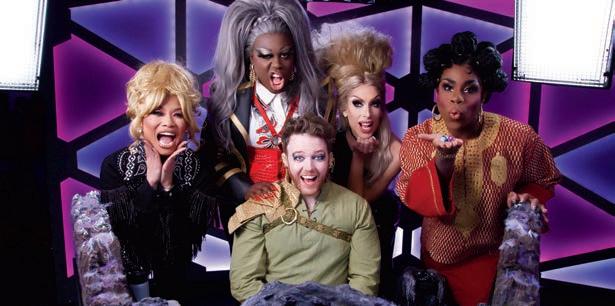
Some Noise and Very Important
People allowed for easily cut clips to be posted on social media, leading to what Reich refers to as a “dizzying” growth for the streamer. “We just had our third biggest month on the platform ever, and the average Dropout subscriber is sticking around for well over a year and a half.” This puts Dropout's Lifetime Value, which is the average amount a customer will spend on the service in their lifetime, well over $100.
“For a $6-a-month subscription,
that is saying something.”
All this growth has led to new series, more opportunities for live events and, perhaps the most exciting of all, the opportunity to work with four queens from RuPaul’s Drag Race in a season of Dimension 20 titled Dungeons & Drag Queens
“I’ve been trying to make this happen forever,” says Reich. “Now the queens are part of the Dropout family. It’s a dream come true for me, because Drag Race is basically my baseball.” ★
92 VIACOM18/YASH RAY FILMS/EVERETT COLLECTION/DROPOUT/KATE ELLIOTT DEADLINE.COM/AWARDSLINE
Clockwise from left: Om Shanti Om, Fighter and Pathaam.
Dungeons and Drag Queens.
“ TONY SHALHOUB IS COMPULSIVELY PERFECT.”
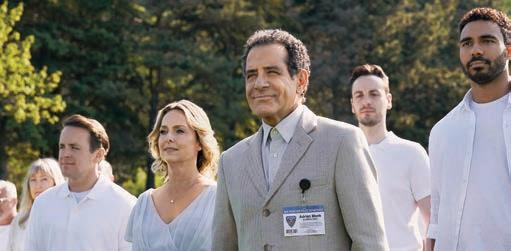








USA TODAY FOR YOUR CONSIDERATION OUTSTANDING TELEVISION MOVIE LEAD ACTOR TONY SHALHOUB
LEE SUNG JIN
HOW BEEF’S DARK, SUBVERSIVE COMEDY SMASHED NETFLIX CHARTS, ADDRESSED A MENTAL HEALTH CRISIS, AND CONNECTED WITH A GLOBAL AUDIENCE
BY STEVIE WONG
When Lee Sung Jin’s limited series Beef wrapped production back in 2022, the cast and crew were so happy with the profound camaraderie they’d developed that they’ve attempted to meet for dinner at least once a week ever since—some irony for a story originally borne out of anger and resentment. Some time ago, pre-Beef, Lee found himself angrily tailing a driver in a road rage incident for nearly an hour. When he happened to tell Ravi Nandan, A24’s head of television, about this moment of madness, Nandan suggested Lee might expand on it. Was there more story to tell?
The complex and personal stories behind two strangers clashing with such vitriol eventually evolved into Lee’s limited series. At turns hilarious and disturbing, it follows the lives of Amy (Ali Wong) and Danny (Steven Yeun) as they enter into an intense feud that is, in truth, fueled by their deep sadness and pain. Not your standard comedy fare, but then that is the magic of Lee. It worked so well that Beef quickly landed at the top of the global streaming charts after its release in April last year. Critics raved at how it perfectly captured the undercurrent of frustration in society, and it is considered one of the highest-rated Net ix TV originals of all time.
Eventually, in a Beef-level comedy moment, Lee would thank the road rage driver who began it all. In his Golden Globe acceptance speech he declared, “Sir, I hope you honk and yell and inspire others for years to come.”
After spending more than a decade writing and then producing comedies like It’s Always Sunny in Philadelphia, 2 Broke Girls and Dave, Lee had built a very successful career working on other people’s popular shows. But the idea of having his own original show tugged at him.
“There was sort of a gradual change that had been happening in me,” he says. “I guess I could call it spiritually. Over the years, I think as I’ve grown into myself on a personal level, my writing has been gradually changing. So, there was a shift happening based o my own individual change.”
Once the idea for Beef came together, Lee immediately reached out to Yeun and Wong, who also joined as executive producers, to hash out the complexities of the characters he was trying to create.
“Early on, [executive producers] Ravi and Alli Reich at A24, along with Steven and Ali, were all collaborators before we even took out the show as a pitch,” Lee recalls. “They really helped encourage me and really push me to a place where it was OK to write more honestly. That support system allowed me to
nd that con dence and it felt di erent from day one.”
Being able to work with the two leads from the start, Lee discovered what the story’s universal themes would mean for Amy and Danny, and he dug deeper into the minutia of their Asian American experiences, pulling together a writers’ room of “like-minded individuals”.
“Some of us struggled with very similar mental health things,” he says. “It allowed for us to have a very safe space to share openly. There were a lot of laughs, but there were days with some tears. I think that’s really the best space to operate, it’s in the stu that we’re too scared to talk about. Because it was during the pandemic, I think weirdly, Zoom helped. Looking back, it was this therapeutic vessel to vomit our insides into. It gave us a little bit of distance to share stu you normally wouldn’t.”
Lee also mined the notes app on his phone for experiences and conversations he’s saved over the years.
“I write down everything,” he confesses. “David Lynch says something along the lines of, ‘No matter where you are, just write down everything, because the worst feeling in the world is forgetting

this thing you thought was good, and it’ll never come back again.’
My notes app is just full of scribbles. For [Beef ] I would go back on funny interactions and see if there’s a place where that psychology could t. Sometimes, I’ll be on the phone with someone, and they’ll hear my ngers clacking and they’re like, ‘Are you writing this down?’ and I’m like, ‘Yeah, I am. Sorry.’
“I’ve been pretty cocooned to how big the show is,” says Lee, “but I was in Korea last August, and I was just getting a co ee across from my hotel, and a woman stopped me and in Korean was like, ‘Are you the gamdong-nim (director/showrunner) of Beef ?’ That was surreal, especially since I’m in a country where I look more like everyone else, and still someone loved the show enough to seek me out and recognize me.”
With the show’s success, Lee also found himself on a year-long journey promoting the series during its award campaign—an experience that led to what he calls his “ ve-minute stand-up set describing Beef ”, which is “pretty locked in now,” he laughs. “As media-trained as the story has become, it is pretty surreal to re ect on that [road rage] incident, especially after the show coming out and throughout award season. But we have screenings sometimes and I’d meet people who are super connected to the show because of the way we’ve highlighted loneliness, depression, and mental health things that we go through. I think that connection in person impacted me quite a bit, knowing that because of aspects of the show, people felt less alone. That’s been really lovely.”
MICHAEL BUCKNER FOR DEADLINE/ANDREW COOPER/NETFLIX 94 DEADLINE.COM/AWARDSLINE
Beef

“THE PEOPLE YOU CHOOSE TO BE AROUND ... ARE THE MOST IMPORTANT CHOICES YOU CAN MAKE.”
By the time Lee made it to the Primetime Emmy Awards, Beef had already received countless plaudits—among them, three Golden Globes, four Critics Choice Awards and eight Emmys, including Outstanding Limited Series, directing (Lee), actor (Yeun) and actress (Wong). But Lee is by no means resting on his laurels.
“You never know when that creative alchemy may strike again,” he says. “I think it’s just a reminder for me as a writer, and I guess writers in general, to not game ideas to see what will be successful. Oftentimes, the gold is sitting there right under our noses, through the psychological struggles or the little ego bruises that you’re taking day to day. Re ecting on that has been the coolest lesson this past year.”
A second season of Beef has inevitably been discussed. Though Net ix hasn’t o cially announced if the limited series might return as an anthology, Lee wanted to clear the air on some of the theories that are out there.
“In my initial pitch of Beef, we did pitch it as an anthology series,” acknowledges Lee, “but not multiple seasons. I gave a general idea of how a show called Beef could work as an anthology… but I didn’t necessarily have all these things planned out.

“It’s important to be adaptable and respond to the current moment, or whatever current truth is pulling at you as a writer. But it’s too early to say where things will head. I’m just trying to remain as open as possible and am mentally ready to tap into whatever lane I need to, because unfortunately there are beefs everywhere you look, and denitely not a shortage of material to pull from.”
But what Lee knows is that the magic of whatever he works on next will never be replicated from the experience of working on this particular series.
“I’ve let go of the idea that anything I work on next will feel the same as Season 1,” he says. “It was a certain con guration of people that may never come together in that way again. I’ve had to let go of that idea, as sad as that is, because everyone involved would love to replicate the feeling.
“That doesn’t mean whatever comes next can’t be ful lling, boundary-pushing and truthful. It’s all about getting to know the new collaborators, having those deep conversations, and making sure everyone’s on the same frequency. The people you choose to be around, whether in work or in your personal life, are the most important choices you can make. And I take that aspect very seriously before stepping into the ring with them.”
For now, the weekly dinners will remain in place, where the Beef gang can celebrate the special bond they’ve created through working on the show.
“Me and Steven found a Korean barbeque spot where they have an attached karaoke room,” Lee reveals. “We did an o cial big Beef reunion dinner, and we may have stumbled in and knocked out a couple of songs. But it’s getting harder and harder to grab that bill. I’ll pretend to use the bathroom early, but then somehow Ali’s beat me to it or Steven has prepaid. That’s the real award, to try and get the check rst. I think it’s just a testament to what a lovely group of people we have that everyone’s always trying to treat one another.” ★

TOHO GROUP
HOW GODZILLA S OSCAR WIN MADE THE JAPANESE STALWART A MONSTER
IN THE NORTH AMERICAN MARKET
BY
NANCY TARTAGLIONE
Established in 3 Japan’s Toho Group has grown into a flm industry powerhouse not only at home but globally. Working across production distribution and exhibition the behemoth has recently been on an expansion spree reeling in box offce around the world and with recognition from ma or awards bodies. Long synonymous with Godzilla, which it launched in 1954, Toho this year broke out in another way as its phenom Godzilla Minus One went on to win the VF Oscar a frst for the Kaiju, or "strange beast monster genre.
Indicative of the company’s status its President and CEO Hiro Matsuoka gave an opening day address at CinemaCon in April. We spoke with Matsuoka about Toho’s outlook and strategy for the years ahead.
Toho has increased its international activity—has this been part of an overall strategy?
Yes overseas opportunities have been part of our long-term growth strategy. We recognize that the fan base for our content— both Godzilla and anime has been growing internationally in recent years and in many cases has developed into passionate and deep-rooted communities. Our goal is to make access to the content they en oy easier while also gaining awareness with new audiences.
How have you worked to innovate?
For Godzilla, part of the rapid expansion in the last few years was triggered by the 2014 Legendary version of Godzilla. [The Japanese icon became a big hit in Hollywood with subse uent flms allowing audiences to have consistent exposure to Godzilla content. In support of this international interest, we deepened our fan outreach… We’ve also established regional subsidiaries in the past few years building teams who have the best knowledge of each country s market and allowing them the exibility to service their regions based on that expertise.
What is the goal of the U.S. subsidiary?
North America is a top priority market for our global strategy and we believe that working out of Hollywood is the best way to deliver our content globally. Although the rise of streaming and the popularity of anime have changed the environment since our original strategy was formed we have not changed the direction of our business which has been, and will continue to be, focusing on the fans.
In addition, we’re not only bringing Japanese productions to North America but also thinking about delivering content developed in North America to markets around the world including Japan by utilizing our investment and partnership with Fifth Season and other producers in Hollywood.
Where do you see Toho in the next 10 years?
In 0 3 we released a long-term strategy that extends to 03 the 100th anniversary of Toho’s founding. As part of that strategy, we established animation as the fourth pillar of our business.
Key to Toho’s future is the ability to create and develop pro ects and IP the expansion of the anime business the use of digital technology and expanding into the overseas markets. To this end we will invest in growth and build new and exciting teams. We hope that you will have high expectations for Toho in the future, because we do. ★
ANDREW COOPER/NETFLIX/TOHO INTERNATIONAL/EVERETT COLLECTION
96 DEADLINE.COM/AWARDSLINE
Godzilla Minus One
From left David Choe and Lee Sung Jin.
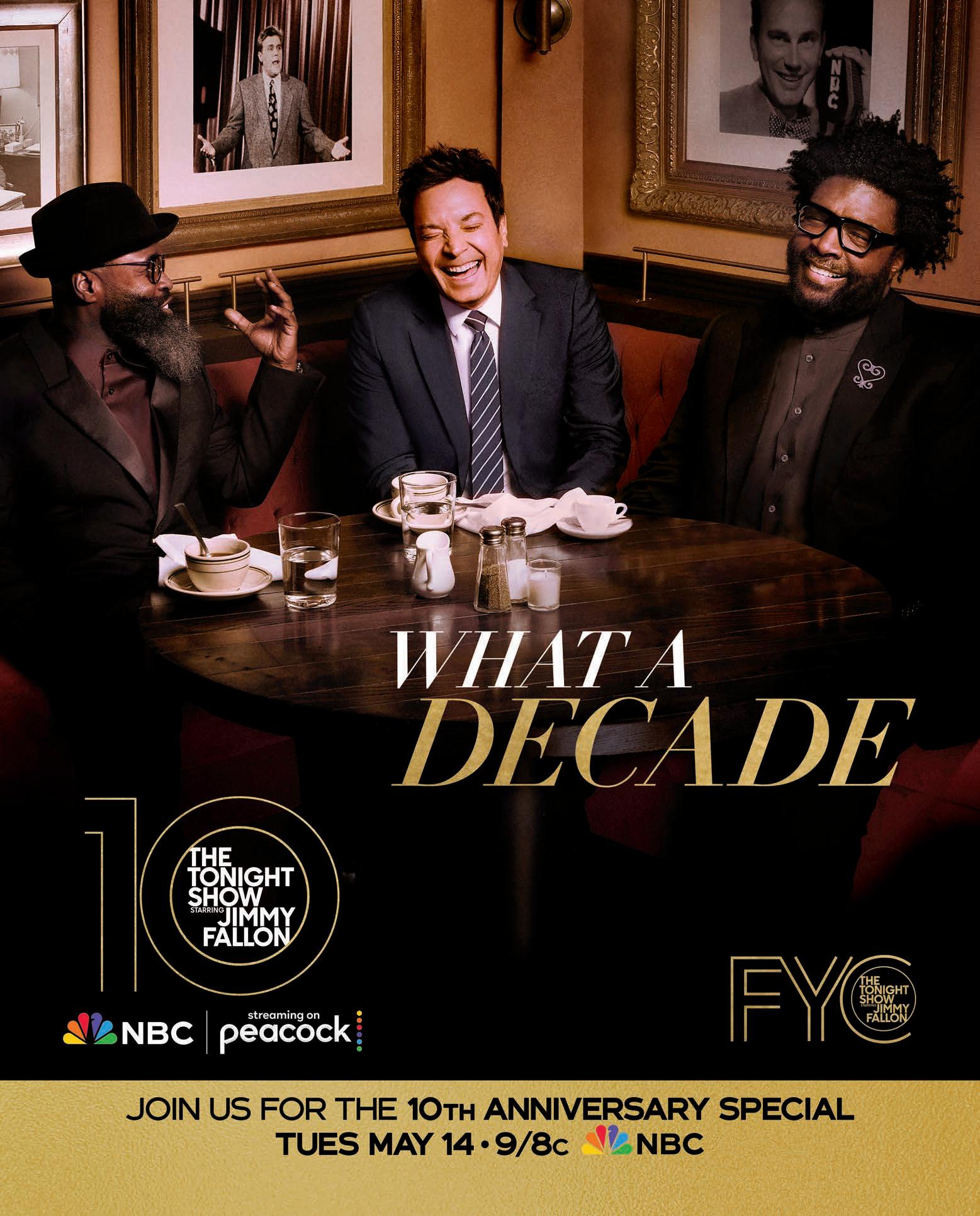

ELEMENT PICTURES
THE ANGLO-IRISH OUTFIT SOARS TO A NEW LEVEL WITH A TRIPLE BILL OF FILMS FOR CANNES
BY DIANA LODDERHOSE
Element Pictures is coming o the back of yet another buzzy awards season with its absurdist comedy Poor Things, directed by Yorgos Lanthimos, notching 11 Oscar nominations and coming home with four wins, including Best Actress for Emma Stone. But just when it feels like the company’s trajectory can’t get higher, the IrishAnglo production, distribution and exhibition banner is hitting the Croisette this year with no less than three lms in the Cannes o cial selection. Lanthimos’s Kinds of Kindness, which reunites him with his long-term writing partner Efthimis Fillipou and Poor Things stars Stone and Willem Dafoe, will compete for the

Palme d’Or, while French actor Ariane Labed’s directorial debut September Says and I Am Not a Witch director Rungano Nyoni’s sophomore feature On Becoming a Guinea Fowl are both screening in the Un Certain Regard section.
It’s especially signi cant to Element co-founders and co-CEOs Ed Guiney and Andrew Lowe as this marks the most Cannes selections the Irish-Anglo out t has had at the festival in one year, and, markedly, with three projects that the company has nurtured from development to nal cut.
“It’s a great result,” Lowe says. “We couldn’t be happier with the mix of titles we have heading to Cannes this year. It feels like a big achievement
98 DEADLINE.COM/AWARDSLINE ELEMENT PICTURES/YORGOS YANTHIMOS/SEARCHLIGHT PICTURES/EVERETT COLLECTION
Emma Stone in her Oscar-winning Poor Things role
FOR YOUR CONSIDERATION IN ALL CATEGORIES INCLUDING
BEST ACTOR IN A LIMITED SERIES
BILL PULLMAN
BEST LIMITED SERIES

MURDAUGH MURDERS THE MOVIE

A LIFETIME ® TWO - PART ORIGINAL MOVIE
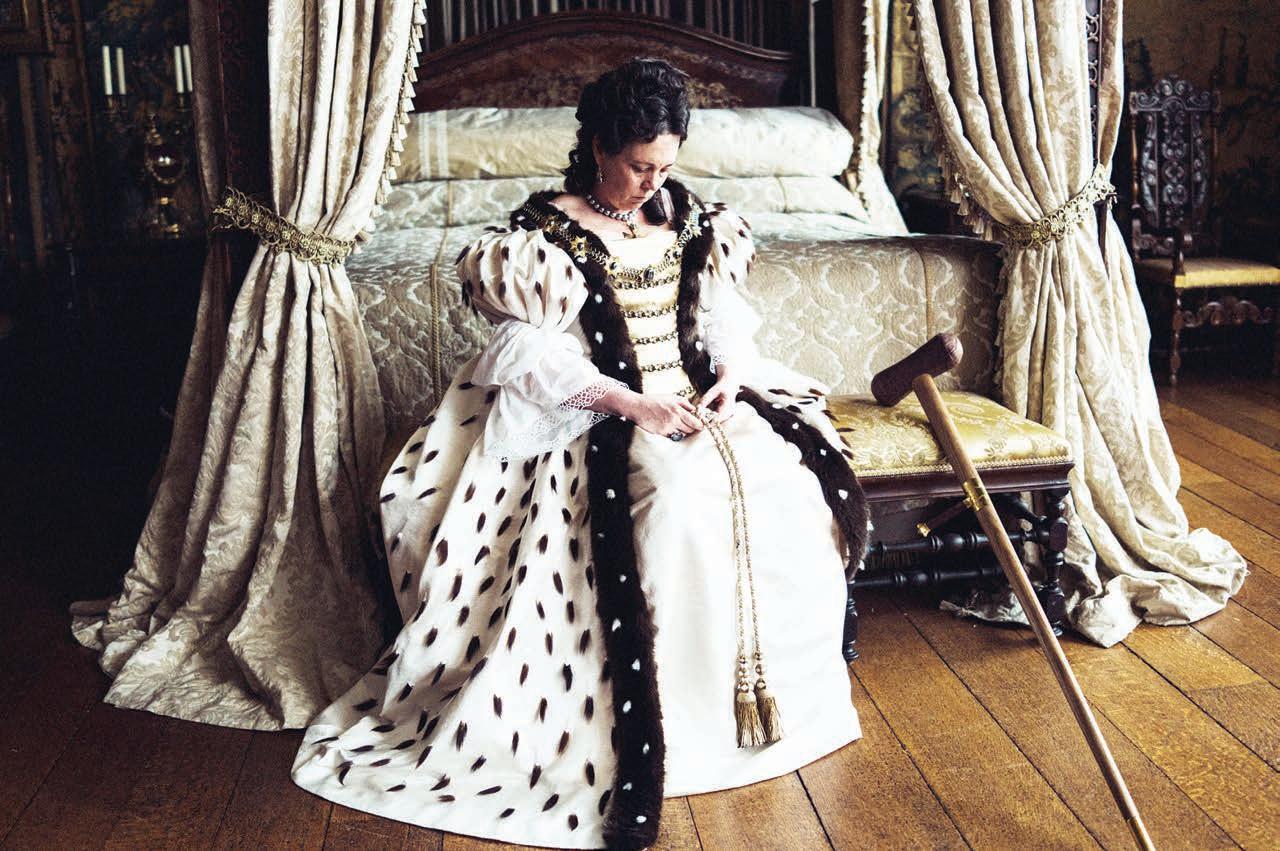
and re ective of the range of projects we like to work across.”
Lanthimos’s latest Competition contender (both The Lobster and The Killing of a Sacred Deer competed for the Palme d’Or in 2015 and 2017, respectively), stars Stone and Dafoe along with Jesse Plemons, Margaret Qualley, Hong Chau, Joe Alwyn, Mamoudou Athie and Hunter Schafer. It’s an anthology broken into three parts: “It’s seven cast members appearing in e ectively three separate lms,” says Guiney.
The lm was shot while Poor Things was in post-production, which explains the quick turnaround. “There were a lot of visual e ects for Poor Things, so there was an opportunity to do this,” Guiney explains. “That’s why it’s present so early.”
Labed’s debut September Says, which is produced by Element’s Chelsea Morgan Ho man along with Irish producer Lara Hickey, is based on Daisy Johnson’s novel Sisters. It follows the story of September who gets suspended from school resulting in her sister July asserting her own independence. Meanwhile, On Becoming a Guinea Fowl, the second feature from ZambianWelsh writer-director Nyoni, is described as a family drama set in Africa.
“Our thing is working with people who are auteurs in a way, and who have a very particular point of view,” says Guiney. “Then it’s just about us trying to help them do what they do. One

of the things we are good at is working with lmmakers who have very di erent kinds of approaches and styles and ambitions in terms of what they’re trying to do and it’s our job to help that rather than suggest that there is only one kind of Element style. Our house style is actually not having a house style.”
Indeed, the Room and The Favourite producers have built a solid reputation on both sides of the Atlantic as being one of the most talent-friendly European businesses in the market,
with Lanthimos, Lenny Abrahamson, Joanna Hogg, Sally Rooney and Sebastián Lelio being some of the directors and writers they do repeat business with. Element also has strong ties with companies such as Searchlight Pictures, BBC Films and Film4.
“Because we have worked with so many di erent artists who have such particularly distinct ways of working, you have to wrap your arms around that,” says Guiney. “It’s very exciting and the Cannes titles are all fantastic and they're all
100 DEADLINE.COM/AWARDSLINE FOX SEARCHLIGHT/A24/EVERETT COLLECTION
The Favourite
Poor Things
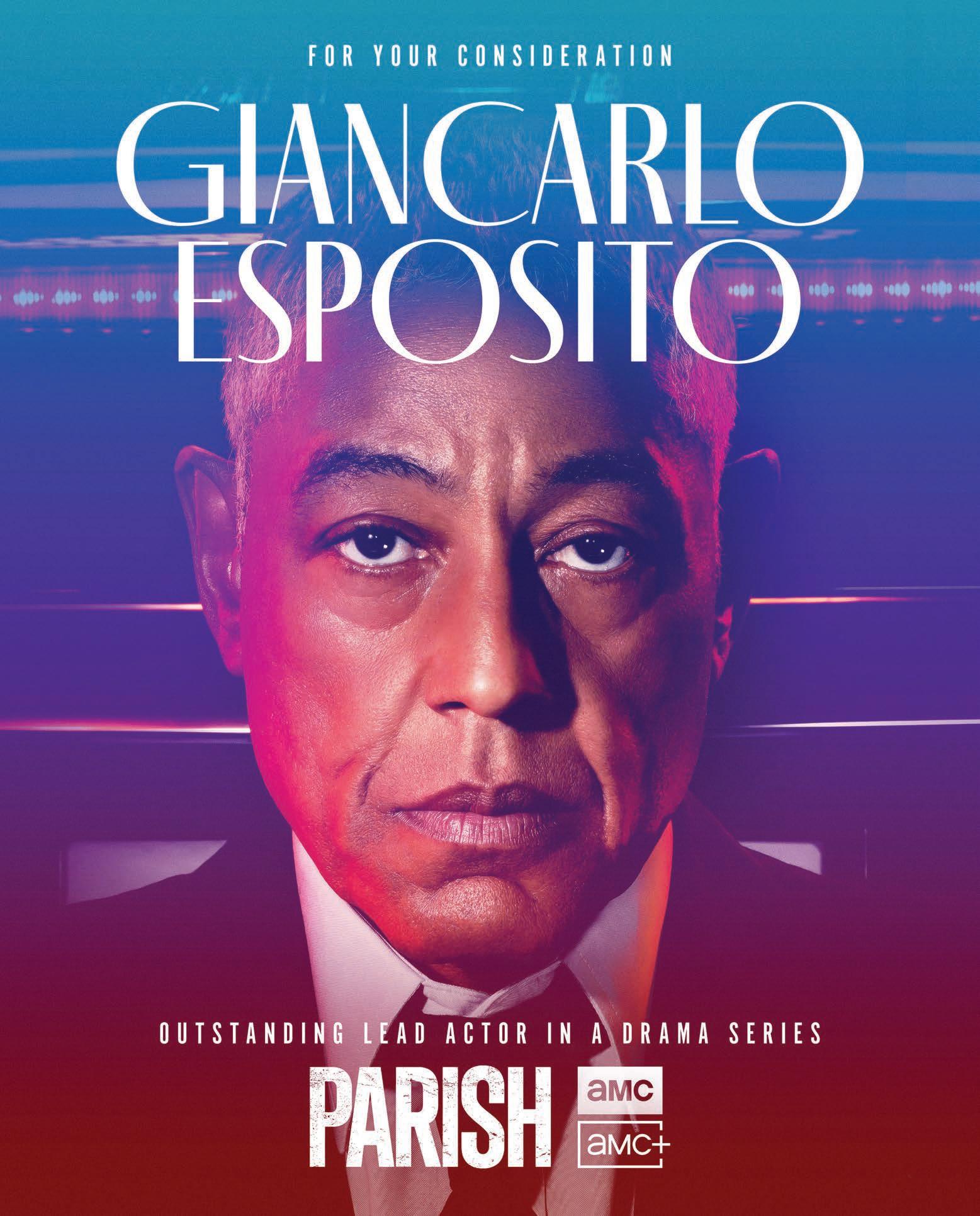

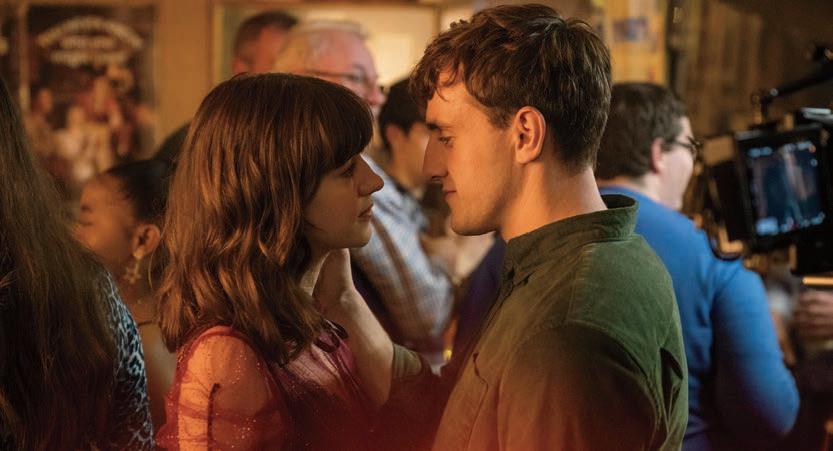
saying very di erent things. For us this comes from fascination and fandom—just a desire to see movies and be a part of those conversations.”
In 2022, Fremantle acquired a majority stake in Element, which Lowe says has been “really impactful” in allowing the company to be more strategic with its choices on both the lm and television side.
“It’s enabled us to double down on the things that we love doing, which is working with really
talented lmmakers and helping them make the best version of their lms,” he says, adding that the company has a “big development slate” on the TV side and is looking to build on the success it’s already had with productions like Normal People and Conversations with Friends Crucially, Element Pictures is giving back to the Irish lm community in an unparalleled way and this can be clearly seen with its recent successful launch of Storyhouse, a new
“THE CANNES TITLES ARE ALL FANTASTIC AND THEY'RE ALL SAYING VERY DIFFERENT THINGS.”
screenwriting festival that celebrated storytellers and the art of storytelling.
The two-day event, which was held in March at its Light House Cinema in Dublin, kicked o its inaugural year with a host of writing talent such as Poor Things scribe Tony McNamara, Element collaborator Abrahamson, Holy Spider’s Ali Abbasi, How to Have Sex writer-director Molly Manning-Walker and One Day writer David Nicholls, who all participated in insightful conversations about their process of writing.
“We want to do it again next year for sure,” says Guiney of the festival. “What I was happiest about was that it was this original idea of writers talking to writers that really de ned us and I was really struck by the generosity of the people we invited and how they spoke about their experience, which made it all really inspiring.”
Lowe adds: “Now we’re going to take stock and make sure we build o of it so that next year is even better, but still has the same intimacy.” ★
102 DEADLINE.COM/AWARDSLINE FOX SEARCHLIGHT/A24/EVERETT COLLECTION
The Lobster
Normal People



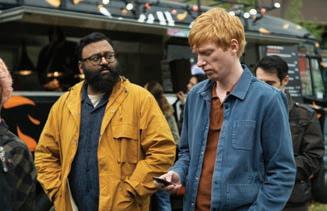




EVA NGORIA
WHY THE ACTOR-DIRECTOR TURNED PRODUCER IS COURTING “THE MOST DIVERSE GENERATION EVER”
BY DOMINIC PATTEN

The past year has seen Eva Longoria direct the Oscar nominated Flamin’ Hot, form the Banijay-backed Hyphenate Media Group with Cris Abrego, and be awarded $50 million for her advocacy and charity e orts by Amazon founder Je Bezos. That’s along with the Desperate Housewives alum’s other day jobs on upcoming seasons of Hulu’s Only Murders in the Building, Apple TV+’s Land of Women, and more. A dedicated Disruptor from the drop, true multi-hyphenate Longoria wants to see a shift in Hollywood, and she has the pillars of demographics and demand in her sights.
You’ve touted Hyphenate as a production banner, a business incubator, a talent agency and a bottom-line centered wake-up call. How does that mix work in the Hollywood of today?
Cris and I know there’s a better way to do business. This is exactly a disruptor point of view, because that’s exactly what Hyphenate is. We’re in an industry that wants to keep us in our lanes, as creatives, as people, as Mexican Americans, and any other type and nationality as well.
I really believe that the strikes of last year were not only necessary to reset the industry, but they were a direct result of creators taking back their power and interrogating these existing systems. The systems no longer work, they don’t produce a creative environment. They are archaic, and expensive.
JOSH TELLES 104104 DEADLINE.COM/AWARDSLINE

How do you mean?
For me, I was constantly in these overall deals, that could not serve my ambitions. Cris and I looked around and saw, wow, there’s a huge whitespace, no pun intended. The current paradigm of how our business works is the rst thing that’s diluted out of the development process is diversity. We want to see the industry shift from quantity back to quality, but not lose diversity in the process.
ith diversity offcers, programs and productions frst on the chopping block of late, that doesn’t sound like something the studios and streamers are inclined to do. It should be, because if any company is going to grow they’re going to have to gure how to attract Generation Z. They’re going to have to make undeniable, inclusive content for the most diverse generation we’ve ever seen and Hyphenate is here to do that.
A c insey report released earlier this year estimated that ollywood could pull in to billion more annually if there was more atino representation on both sides of the camera. A study conservatively predicted another billion boost in yearly revenue if the representation of Black Americans improved. In an industry that makes about billion annually, that’s at least an e tra billion being left on the table. ow do you battle against that You battle every day. Look, it’s not a question of whether there’s space for this inclusive content. That’s the wrong question. The question is who nowadays really can a ord to leave $18 billion on the table? This is about a business solution.
Part of the point of Hyphenate is not to ignore the money on the table. We’ve decided to create content for the growing market, not the shrinking market. Half of Gen Z is non-white. A full 25% of Gen Z is Latino. The question should be, who’s going to want to miss out on making the most compelling content for that generation?
The premise is clear, but how do you overcome the pressures towards the status quo?
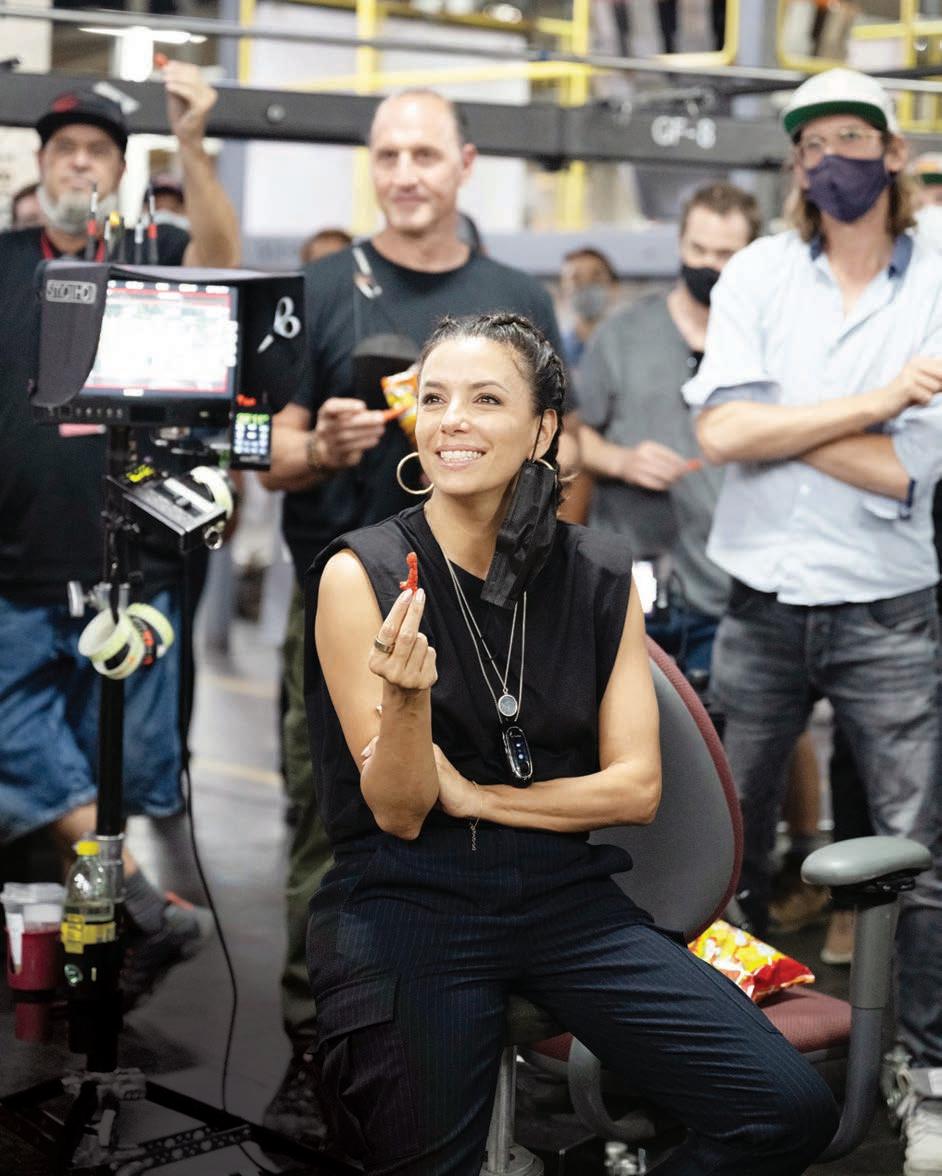
If we at Hyphenate focus consistently on delivering premium content, which doesn’t mean pricey, I think we can overcome the pressure all these silos and vertical integrated companies face to buy from within or use the same people. Our business model makes us have skin in the game, take risks as well with the studios and networks and platforms. That changes the status quo, that changes the relationship and that’s what I want. I don’t want to be an employee. I want to be a partner, there’s value in that for everyone.
Speaking of value, earlier this year, you were awarded million from eff Bezos and auren S nchez as part of their Courage Civility prize for philanthropists. our va ongoria Foundation has been in the trenches for more than a decade, providing educational and economic programs for atinas. ow did this award come to pass I gave a speech at this Women in Film dinner this awards season, and I said, “You know who helps women? Other women.” So, if you are ever in a position of power to hire someone or recommend someone, recommend the woman,
hire the woman on their merit, because nobody else is going to do it. Unknown to me, Lauren was in the audience, she later told me, and she thought, “I can help.” The award is bigger than any industry award I could ever get. It allows us to continue to scale what we’ve been doing at the foundation with STEM education for girls, microloans and an infrastructure of opportunity. It’s the most important work I can do.
With the foundation and with Hyphenate, I want to build a pipeline of skills and talent. That’s the real value. ★
106 DEADLINE.COM/AWARDSLINE ANNA KOORIS/SEARCHLIGHT PICTURES/EVERETT COLLECTION
Longoria on the set of Flamin' Hot.

DANISH DOCS
SOMETHING SPECIAL IS BLOOMING IN THE STATE OF DENMARK
BY MATT CAREY
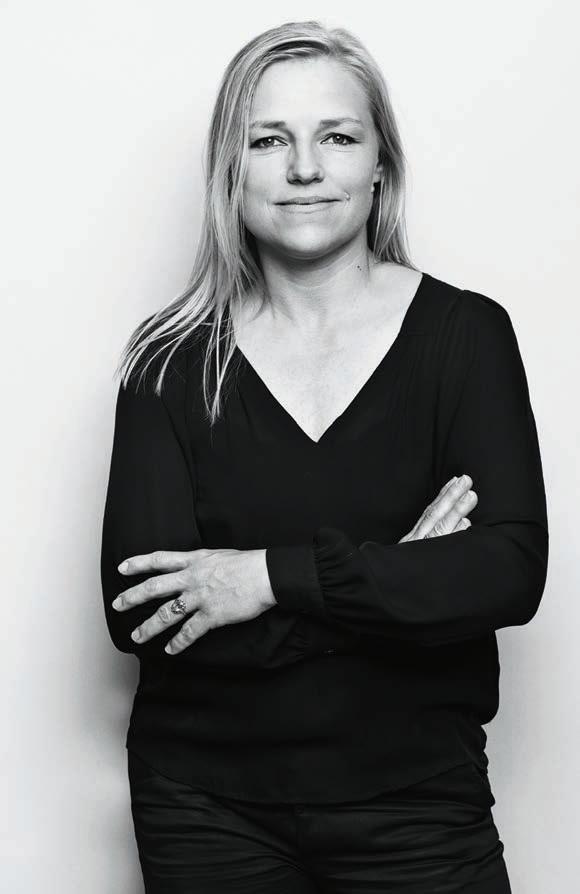
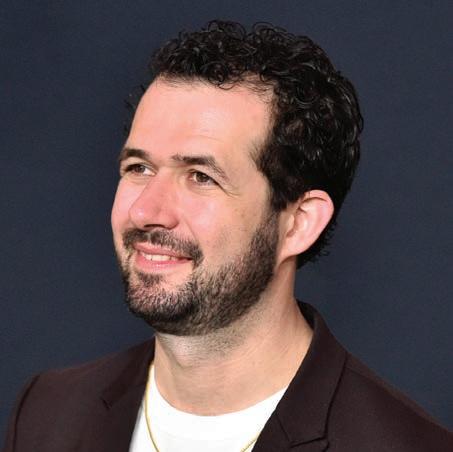
Denmark, the Nordic country bordering the Baltic and North seas, has become a global leader in documentary lmmaking despite its diminutive population— fewer than 6 million people.
“It’s extraordinary, the talent we have, telling stories from a very personal, artistic perspective and still reaching out to audiences around the world,” says Ane Mandrup, head of documentaries at the Danish Film Institute. “I think there’s something special going on.”
That “something special” is evidenced by recognition on a remarkable scale: Danish produced and/or directed documentaries have earned numerous Oscar nominations in recent years, including The Act of Killing, The Look of Silence, Last Men in Aleppo, The Cave, Flee and A House Made of Splinters
Flee, directed by Jonas Poher Rasmussen, achieved something that may never be equaled again—scoring Oscar nominations for Best Documentary Feature, Best Animated Feature, and Best International Film. Rasmussen’s documentary centered on an Afghan refugee he met when he was growing up in a small town in Denmark.
“We have lmmakers who are really trying to put their personal touch on everything they do, no matter if it’s their personal story, but also if it’s a political story, then they nd their own personal way of telling that story,” notes sound designer Peter Albrechtsen, an Academy member whose credits include The Cave, A House Made of Splinters, The Distant Barking of Dogs, and narrative features Evil Dead Rise, and The Killing of Two Lovers. “That’s something that has been a core kind of quality for Danish documentary.”
Sigrid Dyekær, producer of the Oscar-nominated The Cave and Emmy-winner The Territory, points to something more elemental in the Danish character that accounts for success in both non ction and ction lm.
“Storytelling has always been part of our upbringing, something we learned from Hans Christian Andersen, I think, and we learned from Karen Blixen, the Out of Africa writer,” Dyekær observes. “We all grew up with this element of storytelling, which is so extremely important in our culture. Maybe because we’re so small that we think nobody would care about the Danes, nobody would care about what we
produce or do, but if we create a story around it, then maybe people would be more interested in what we have to o er. I de nitely think we have this creative soul, all of us.”
Denmark has disrupted the non ction lmmaking space through a combination of factors, among them cinematic training, nancial support, and international collaboration.
The National Film School of Denmark, founded in 1966 and now run by Tine Fischer, is a rigorous four-year program with an extraordinary roster of graduates: on the narrative side, Bille August, Lars Von Trier, Lone Scher g, and Thomas Vinterberg, and on the non ction side, Eva Mulvad, director of Enemies of Happiness, and an Emmy winner for The Cave; Simon Lereng Wilmont, the Oscar-nominated director of A House Made of Splinters, and Oscar-shortlisted The Distant Barking of Dogs; and Lea Glob, recently Oscar-shortlisted for Apolonia, Apolonia.
Glob says she learned from her professors, “To nd a way to be an artist in whatever way you can and to be conscious about methods, personal themes and visual language. And to build a con dence as a director, so you will be able to carry and protect and value the initial interest-idea and core of a lm all the way through a lmmaking process and treasure it until it is in the nal lm.”
Apolonia, Apolonia began as an assignment at the lm school. It led to a 13-year odyssey to document artist Apolonia Sokol as she rose from obscurity to prominence. “Mostly,” Glob says of her lm school experience, “I learned how to live a life as a director, and continue to create lm, despite all thinkable obstacles—internal obstacles and external.”
Albrechtsen attended the Danish Film School from 1997 to 2001, studying alongside “docu-

JEPPE GUNMUNDSEN-HOLMGREEN/GETTY IMAGES/DRAFTHOUSE FILMS/EVERETT COLLECTION DEADLINE.COM/AWARDSLINE 108
Ane Mandrup
Jonas Poher Rasmusseen
The Act of Killing

“CLEVER, FUNNY, INSIGHTFUL & IMMEDIATELY ADDICTIVE.”


mentary directors and ction directors, and we just went back and forth and worked with both of them. It was not like, ‘Now we are making a documentary, this is something special,’ or ‘Now we are making a ction lm. This is something special.’ No, it was really this wonderful open-minded approach to just lmmaking. We were making movies, we were telling stories, and I think that has had an enormous impact on all the [Danish] picture editors, cinematographers who’ve been working internationally with documentaries as well, that there’s this basic idea at the Danish Film School that when you’re doing a documentary, you are also making a movie.”
Albrechtsen and Glob cite faculty member Arne Bro as a big in uence on students. “He was really focused on nding each person’s personal imprint when making movies,” Albrechtsen says, noting that advice went for directors as well as cinematographers, picture editors, and sound editors. “What kind of personal approach do you have to the way you make movies? And this means we were brought up with the idea that when you make a documentary, it’s both visually and sonic storytelling. It’s cinematic storytelling.”
First year tuition and fees for USC’s graduate program in cinematic arts can run between $44,000 and $58,000. The Danish Film School, by contrast, pays students to attend. “No debts once you were done,” Glob says. “This is a great advantage if you want to be able to take creative risks. So even people of low privilege could a ord to dream of becoming directors.”
Support for lmmaking extends beyond schooling to the government-funded Danish Film Institute, which has backed the great majority of acclaimed Danish documentaries, including Flee, Apolonia, Apolonia, President—the award-winning lm directed by Camilla Nielsson and produced by Signe Byrge Sørensen— and Oscar-nominated lms The Act of Killing and The Look of Silence, directed by Joshua Oppenheimer and produced by Sørensen.
“We look for artistic originality and for artistic vision when it comes to projects that apply to us for funding,” says the institute’s Mandrup. “Most of those documentaries that travel internationally, we’ve supported them.”
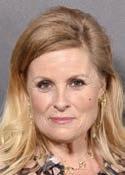

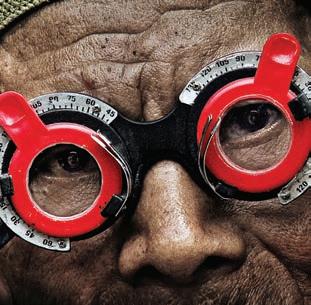
An independent lm consultant with substantial experience evaluates proposals from lmmakers. “You don’t tick boxes, you don’t have to satisfy a committee, you satisfy one person,” says Mandrup, adding that it can be an iterative process. “We like to see ourselves as the risk-taking part in projects. So, we’ll develop perhaps once, twice, three times what it takes for the individual project to hone the idea, the arena, the characters, and getting closer and closer to the treatment and to the story that’s at stake and the lm potential of the project.”
In the U.S., very little government aid goes to support lmmaking or the arts in general. Mandrup and Dyekær—producer of The Cave and The Territory—say that in Denmark, however, people believe in directing tax revenue to such pursuits.
“I think it feels like we are a poorer country if we don’t support arts,” says Dyekær. “It’s very important because artists and art pieces can help us understand the world we’re living in… We know that if we don’t produce documentaries, we will lose a very important window into—especially for the young generation, because honestly, they don’t read books. So how are you going to help young people understand who they are and what world they’re living in and what other options are out there, and what do they need to do for themselves and their families if they don’t see that?”
The lmmaking climate in Denmark has prompted some renowned international directors to take up residence there, where they can collaborate with skilled producers and craftspeople. Oscar-nominated lmmaker Guy Davidi (5 Broken Cameras, Innocence), Oscar winner James Marsh (Man on Wire), and David Borenstein (Dream Empire, Can’t Feel Nothing) are among the directors based either full- or part-time in Denmark. Oppenheimer is closely associated with Final Cut for Real, a Danish production company founded by Signe Byrge Sørensen and Anne Köhncke that has produced The Act of Killing, The Look of Silence, Flee, A House Made of Splinters, President, The Killing of a Journalist and many other acclaimed lms. Dyekær sees collaboration as intrinsic to the Danish way of doing things. “Denmark is a trading country. That’s our culture,” she says. “We’re 500 islands and you go through the Baltic Sea and you go towards the U.K. and everybody’s somehow passing by Denmark… So, we are enormously used to people arriving with something and we have a look at it and we say, ‘Whoa, that’s interesting. Yeah, I can sell it.’ And we can sort of build a story around it.”
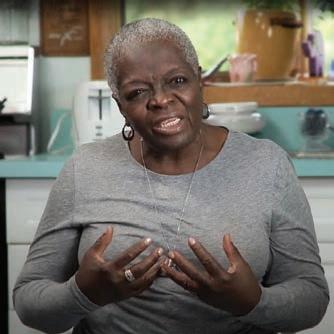
Director Yance Ford and producer Joslyn Barnes credit their collaboration with Danish partners for helping them through a creative logjam on their 2017 Oscar-nominated documentary Strong Island.
“We looked for a new editor and I had just been in Denmark and knew of Janus Billeskov Jansen who had done work on Joshua Oppenheimer’s The Act of Killing,” Barnes recalled in an interview. “We moved Yance to Copenhagen and he was there for nine months. The edit was started from scratch, literally. Hundreds and hundreds of hours of footage was looked at again. The questions that Yance started with really evolved and changed over that time and ended up in a new set of questions which I think really bene tted the lm... I think it’s really worth working there.”
Denmark not only boasts some of the top documentary lmmakers, but one of the most important documentary lm festivals in the world, CPH:DOX, founded in 2003. “The real movement of Danish documentaries into the outer world internationally sort of coincides with CPH:DOX starting,” observes Niklas Engstrøm, the festival’s artistic director (he took over from Tine Fischer, who now runs the Danish Film School). The festival’s e orts to support international cross-pollination has meant “Danish lmmakers and producers could start co-producing more and also get inspired by people from the rest of the world.”
Says Albrechtsen, the sound designer, “That festival is done in such a great way with such enthusiastic, passionate people who really have great taste in selections. And they also look at the documentary world as something that connects us all. And I think that the same goes for Danish documentary lmmakers, that we are all very ambitious in that way, and we don’t look at something as, ‘We need to tell a Danish story.’ No, we have to tell a great story. And I think that has also been very inspirational for the creative climate in the documentary world.” ★

110 EVERETT COLLECTION/NEON/DRAFTHOUSE FILMS/NETFLIX/WIREIMAGE/GETTY IMAGES DEADLINE.COM/AWARDSLINE
Apolonia, Apolonia
The Look of Silence Strong Island Flee
From left: Sigrid Dyekaer, Lea Glob.
Yance Ford and Joslyn Barnes.









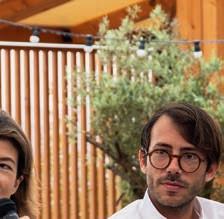

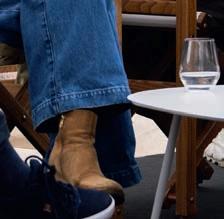



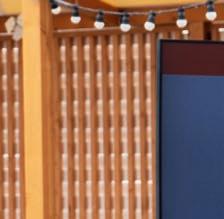





Joinindustry
conferences
May
VENUES:
Main Stage (Riviera)
Palais Stage (Palais -1)
Plage des Palmes (Goéland Beach, La Croisette)

Photo © Marché du Film
FOR ALL DETAILS & UPDATES

LENA WAITHE AND RISHI JANI
THERE’S BEEN A LOT OF EMPTY TALK ABOUT INCLUSION. BUT WITH THEIR PRODUCTION COMPANY HILLMAN GRAD, LENA WAITHE AND RISHI RAJANI ARE TRYING TO MAKE IT A REALITY
BY CARITA RIZZO
Re ecting on her career, Lena Waithe says, “I think about legacy a lot.” The writer-producer-actor, whose body of work includes creating Showtime drama The Chi and BET’s Twenties, has been on a steady upward trajectory since winning a primetime Emmy Award in 2017 for outstanding writing on Net ix’s Master of None. But for Waithe, success raised questions about where she was headed. “I didn’t know what I was actually trying to build. I wanted to have real agency over my career, but it was also not just about me, it’s about who I can work with.”
Together with Rishi Rajani, a studio exec who honed his skills at 20th Century Fox, UTA, Paradigm, and Studio 8, Waithe has created a multi-platform entertainment company that accomplishes both. At Hillman Grad Productions, Waithe and Rishi develop projects that often go against the industry grain, while also hiring up-and-coming talent from BIPOC and other marginalized communities that they can shepherd from obscurity to success.
Hillman Grad started from a place of de ance of a system that favors IP over originality. “Lena had been told ‘no’, on projects that she wanted to get o the ground, things that people didn’t believe in because of the marketplace,” says Rajani, who joined as CEO in 2018. “What I appreciated was that Lena wasn’t coming from a standpoint of, ‘How do we as a company make ourselves more marketable or appeal to the market?’ Lena has the experience of believing in a vision enough to make it happen.”
His excitement was compounded by an ability to nurture talent on the cusp of their big break. “Coming from the studio system, if someone had a great short lm or even a great rst feature, it was like, ‘That’s someone to keep an eye on.’ We ignore that,” says Rajani. “Lena was like, ‘Let’s gure it out. Give them an episode here. Put them in the writers’ room there. Let’s get them what they need to not be considered risky bets by the system we’re in.’”
At Hillman Grad, the producing arm focuses on teeing up smaller-budget lms from directors, often rst-timers, that they believe in. Additionally, Hillman Grad’s talent incubator program Rising Voices, now in its fourth cycle, accepts 10 lmmakers and gives each $100,000 to make a short lm that will screen at Tribeca Film Festival. The goal, on both sides, is to cultivate relationships that will be ongoing. “We’re constantly asking, ‘What can we do next together? What are the things that you need to make and how can we be the home for that?’’ says Rajani. “We have an incredible success rate with rst-time lmmakers and it's not an easy thing to do.”
Despite just six years under its belt, among them two years of Covid and one year of industry-halting strikes, the production company can already count the wins. A.V. Rockwell’s feature lm debut A Thousand and One received the Grand Jury Prize in the U.S. Dramatic Competition at the 2023 Sundance Film Festival Awards and the Film Independent Spirit Award for best rst feature. Radha Blank’s The 40-Year-Old Version was awarded best screenplay at the 2021 IFP Gotham Awards. The Broadway play Ain’t No Mo, on which Hillman Grad served as producer, was nominated for Best Play at the 2023 Tony Awards. Those are just the accolades. Filmmakers who have found a foothold in the industry through their mentorship include Chang Can Dunk creator Jingyi Shao (Disney+) and Being Mary Tyler Moore director James Adolphus (HBO).
Unlike most diversity programs, giving emerging lmmakers their best shot at success means not just placing them in jobs, but supporting them through the experience, like the three months Rajani spent on set with Shao. “We like to think of ourselves as the Seattle Grace of production companies,” says Waithe. “People think, ‘I made it. I got a movie or a TV show,’ and that’s really where it all begins. Part of our journey with these lmmakers is that their dream coming true can also be a nightmare some days.”
The company’s next phase is building out their own nancing capacities, which would result in them having a greater stake in their content. “We need to be able to make $1.5 to $2.5 million bets on the people that we love and work with,” says Rajani. “We know there’s an audience that exists for them.” For now, being able to amplify their voices—be that in the form of directors, writers, actors or future studio execs—already feels impactful. “They are more of my legacy than the work that I put out,” says Waithe. “I’m pleased with whatever they do, whether they decide to go make movies, work at a studio, start their own production company—even if they decide to leave. That’s actually a success story, too, because at least they had a fair shot.”

112 DEADLINE.COM/AWARDSLINE ARAYA DOHENY/GETTY IMAGES/FOCUS FEATURES/EVERETT COLLECTION
A Thousand and One
★

BRHOME . COM
GKIDS
HAYAO MYIZAAKI'S OSCAR WIN FOR THE BOY AND THE HERON IS A GAME-CHANGER FOR ANIMATION
BY DIANA LODDERHOSE
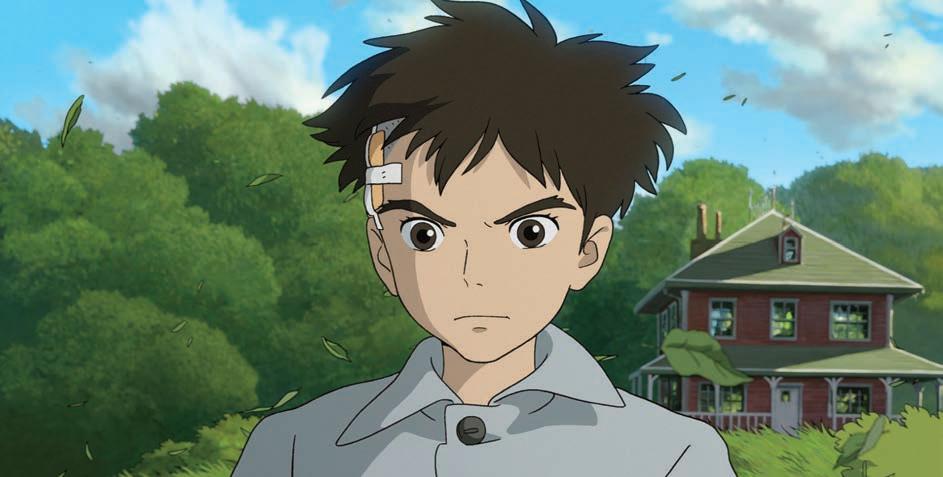
When Hayao Miyazaki’s longawaited and supposed swansong
The Boy and the Heron opened at No. 1 at the North American box o ce last December with a record-breaking $12.8 million tally, it was not only the rst original anime title to achieve such a feat, but it was the biggest ever opening for U.S. distributor GKIDS. It kickstarted what would be a whirlwind few months for the now 16-year-old company as it took the Studio Ghibli lm, (which had opened the Toronto Film Festival in September) to an enormous $46.7 million box o ce gross (more than double their initial projections) in North America and, later a Best Animation win at the Oscars.
“It was the right lm for the right time,” says GKIDS President Dave Jesteadt. “The Boy and the Heron was Miyazaki’s rst lm in 10 years, and I think that a normal concern


would have been if audiences had forgotten him, but it was quite the opposite. I think his time away, from The Wind Rises and The Boy and the Heron, coincided with Japanese animation’s stratospheric rise in popularity in America and yet, there was no new Miyazaki lm to feed that new audience.”
GKIDS founder and CEO Eric Beckman says that across the last few years, “Miyazaki’s legend has grown” thanks to the globalization of content. “There are few people—not just in animation or lmmaking but in any form or medium—that have risen to the ‘godlike’ status that he has. When we rst got the lm and we were positioning it, we didn’t want to compare Miyazaki to other animators or celebrated lmmakers. If we’re going to compare him to anybody, it’s Michael Jordan, Albert Einstein, Van Gogh or Mozart. I think a lot of people really feel that he’s on of that level of characters that has changed the medium that they work in.”
But it takes a special—and loyal— kind of company to handle what is touted as Miyazaki’s most personal lm to date, and this result is by no means an overnight success, but rather the product of a carefully
Since its inception in 2008 with Jesteadt, GKIDS has scored 13 Best Animated Feature Oscar nominations and six Golden Globe nominations including Cartoon Saloon’s The Secret of Kells and Wolfwalkers, 2012’s Spanish animated pic Chico & Rita, and Ghibli’s The Tale of the Princess Kaguya and When Marnie Was There. “We were lling a market need and it was exciting to bring these lms that nobody was distributing in the States and be supported by critics and fans and key theatrical exhibitors,” says Beckman.
cultivated near 25-year relationship between the GKIDS founders and Ghibli. Japan’s preeminent animation studio has long had a reputation for establishing deeprooted relationships with partners it trusts, and for Beckman, this relationship predates GKIDS when he was running the New York International Children’s Film Festival. There, he programmed lms such as Kiki’s Delivery Service in 1999 and curated a Miyazaki retrospective the following year.
The festival, which received more than 3,000 submissions a year and was considered the de facto entry point for a swathe of “amazing animation” that was entering the lm space, became the birthplace for GKIDS when Beckman noticed there was a huge gap in the marketplace for adult animation that skewed from the usual “four-quadrant family pictures” dominated by Hollywood majors.
“It wasn’t a huge conceptual leap from a lm festival that was very mission-driven to a distributor that was very mission-driven,” says Beckman. “The only real shift that happened pretty much immediately was that instead of just being for kids, we shifted to animation for adults very early.”
The company is in Cannes this year with Directors’ Fortnight title Ghost Cat Anzu, from helmers Yoko Kuno and Nobuhiro Yamashita, a Japanese-French co-production that GKIDS exec produced. It’s the third project that the company has exec produced, following The Breadwinner and Wolfwalkers and it’s a role the company will look to expand into in the future. “We’re nimble and boutique and that means that we can be opportunistic—in the positive sense of the word,” says Beckman. “The company has a lot of embedded options for growth, and we will look at those as they come along and as they make sense to us.”
Re ecting on The Boy and the Heron’s success, Beckman is reminded of the rst time he saw a rough cut of the lm with no dialogue or sound and just English subtitles. “I started crying ve minutes in,” he says. “It’s something to be thankful for and joyful for and I think a lot of people who are core fans felt that, so setting it up initially wasn’t that hard—you just had to remind people of what a master he was.”
Both Jesteadt and Beckman credit the audience for “grappling” with one of Miyazaki’s deeper and more philosophical lms. Looking ahead, Beckman believes this is just the beginning of the potential of the genre. “I believe R-rated, $100 million box o ce animated lms are in our future,” he says. “It’s a hugely cross-pollinating, creative period with lots of artistic and commercial potential and I’m very excited. I feel like we’ve entered the beginning of a new era.” ★
114 DEADLINE.COM/AWARDSLINE ORIMEDIA/GKIDS
From left: Dave Jesteadt and Eric Beckman.
The Boy and the Heron

Proud supporters of Deadline’s Disruptors. 3900 WAILEA ALANUI • (808) 874.8000 • WWW.FOURSEASONS.COM/MAUI
JUDITH GODR EC HE
BY SPEAKING OUT ABOUT HER PAST, THE FRENCH ACTRESS HAS UNLEASHED A FRESH #METOO WAVE IN A COUNTRY THAT HAS LONG HELD BACK THE TIDE
BY MELANIE GOODFELLOW
Judith Godrèche has been a regular on the Cannes red carpet for close to 30 years for her performances in lms such as Patrice Leconte’s 1996 Palme d’Or contender Ridicule and Un Certain Regard cycling drama The Climb in 2019.
The popular French actress-turned-director touches down this edition with a work of her own: the short lm Moi Aussi, shot under the radar in Paris in March, gathering 1,000 victims of sexual abuse.
There is no bigger disruptive force in French cinema right now than Godrèche, who has been at the forefront of triggering a new era of #MeToo in France, a country that has been notoriously slow to tackle sexism, sexual violence and harassment.
The short lm follows in the wake of Godrèche’s denunciation in January of her sixyear relationship with director Benoît Jacquot in the 1980s, which began when she was 14 years old, and he was 39.
Godrèche, 52, would go on to le a police complaint against the Farewell, My Queen and Diary of a Chambermaid director in February for “rape with constraint”.
The actress says she fell under Jacquot’s in uence while dealing with the break-up of her parents, which had left her isolated and alone.
“I was the perfect target. I was a very, very lonely kid… There was a sense of authority about him, that he was going to protect me, give me a part in a movie, a home,” she says.
Godrèche also lodged a complaint against director Jacques Doillon, for “rape with violence”, related to his behavior on and o the set of the 1989 lm The 15 Year Old Girl Jacquot and Doillon deny the allegations, but Godrèche is not backing down: “I hope that these men—who continue to go about their lives


believing themselves untouchable—will have to look justice and truth straight in the eye.”
Regardless of what happens in the courts, Godrèche’s actions have already snowballed into something bigger.
Her decision to go public has given other women and men the courage to speak-up, and not just in the cinema world, with stand-up comedy, medicine and sports also seeing an uptick in #MeToo moments.
In mid-April, for example, 59 Paris comedy clubs launched the #MeTooStandUp charter of good conduct to combat sexual and sexist violence and harassment both on and o the stage.
Film programmer and journalist Laura Pertuy, a board member of French gender equality activist group Collectif 50/50, says Godrèche's declarations have had “an explosive e ect”.
“The fact that these truths are coming from a well-known actress is changing the situation,” she says. “It’s the end of a regime and stories to which we were accustomed, but did not question for fear of being blacklisted, or out of a feeling of shame. Now we see value of speaking up within our industry and beyond.”
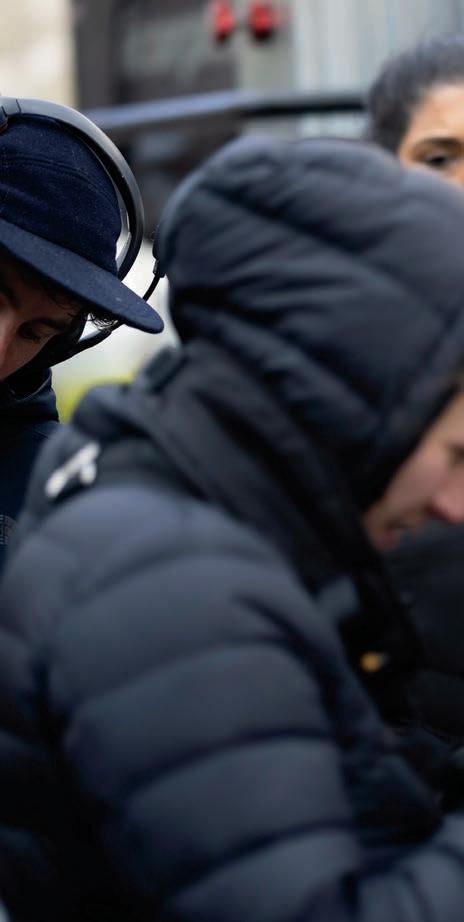
Among those to come forward in the lm world is 43-year-old actor Aurélien Wiik who launched the male-oriented #MeTooGarçons movement on Instagram, revealing he'd been abused between the age of 11 to 15 years old by an agent.
Wiik’s post followed a speech by Godrèche at France’s prestigious César Awards ceremony calling for an end to the culture of silence in the lm world around sexual violence, and a new era of truth.
The very fact Godrèche was invited to address the César ceremony signaled the tide is turning.
Just four editions previously, its 4,500 members voted Roman Polanski as Best Director for An O cer and A Spy in 2020, sparking outrage among women’s rights activists due to the fact he is still wanted in the U.S. on the charge of statutory rape of a 13-year-old in 1977.
Controversy around the celebration of Polanski, as well as accusations of underhanded behavior after it came to light that lmmaker Claire Denis had been deliberately excluded from a gala dinner, saw the body implode that same year.
The crisis forced the body to modernize, and it has since introduced a gender-balanced governing
116 DEADLINE.COM/AWARDSLINE
From left Judith Godr che at the C sar Awards MeToo flm Moi Aussi

board and a ban on professionals under investigation for sexual violence from all of its initiatives.
Justine Triet bucked the trend in 2024 becoming the second woman to win the Best Director César with Anatomy of a Fall, which also won in ve other categories including Best Film.
Godrèche has been in the #MeToo spotlight before. In 2017, she was among 20 women cited alongside Gwyneth Paltrow and Angelina Jolie in the New York Times’ bombshell report into sexual harassment allegations against Harvey Weinstein.
She accused Weinstein of pressing up against her and trying to remove her clothing in a meeting in Cannes ahead of the premiere of Ridicule, for which Miramax had acquired North American rights.
New York prosecutor Joan Illuzzi sounded Godrèche out on whether she would be prepared to take the stand, but the actress declined, fearing her testimony would be discredited due to her past with Jacquot.
“I felt very guilty for my childhood. I felt that I was somehow responsible and for that I couldn’t be a witness,” she says.
Godrèche describes the 37-year process of getting to a place where she felt ready to speak up as “a puzzle” with the pieces beginning to fall into place while she was living in LA, her home for close to a decade since 2014.
She was especially inspired by French writer Vanessa Springora’s 2020 memoir Consent, a record of her abuse as a teenager by famous
writer Gabriel Matzne . The book was sent to Godrèche by a producer friend in Paris, who suggested it was a sign that times were changing in France. Godrèche says her daughter’s adolescence around the same time also woke her up to just how vulnerable she had been as a teenager.
Other key developments include Godrèche’s decision to confront her demons in the semi-autobiographic Arte-drama, A24backed An Icon of French Cinema, about an actress returning to Paris and the milieu that turned a blind eye to her being abused years before. The nal piece was the resurfacing of a 2011 documentary in which Jacquot openly admits his relationship with her as teenager was “a transgression”.
Alongside Godrèche’s strand, another #MeToo scandal has also been brewing around Gerard Depardieu, who faces multiple accusations of sexual assault and one of rape.
The case has divided the French lm industry, with older artists such as Charlotte Rampling,

Carole Bouquet and Nathalie Baye, as well as President Emmanuel Macron, coming to his defence, while 600 younger talents signed an open letter describing that support of the actor as an attempt to place him beyond the law.
France has had its #MeToo moments in the past, but they have zzled out with little support from within the French lm industry for people calling out sexually inappropriate behavior.
Actress Adèle Haenel got little public support from her cinema peers when she accused director Christophe Ruggia of sexually assaulting her as a minor.
She walked out of the 2020 César ceremony a few weeks later when Polanski was announced as the winner of Best Director, a vote that was seen as a betrayal of the #MeToo stand.
Haenel has since announced in an open letter last year she was leaving the lm industry because of its “general complacency” towards sexual predators. Ruggia, who has denied her accusations, is set to stand trial this year.
By contrast, Godrèche has received public support from a raft of cinema personalities, including Sophie Marceau, Alexandra Lamy, Anna Mouglalis, Vahina Giocante, Mathieu Kassovitz and François Civil as well as her ex-husbands Maurice Barthélémy and Dany Boon.
She says it is too early to say whether the tide has turned for good in France.
“It’s a long and hazardous path,” she says. Determined to instigate permanent change, Godrèche has called for the creation of a parliamentary commission of inquiry into sexual and gender-based violence in the lm industry.
She would also like to see the introduction of a stipulation by law that all minors be accompanied by a trained, third-party guardian.
“The relationship of a child actor to a director is the same as that of a child to a gure of authority in other situations: if the adult wants to abuse their power, they can do so with little problem right now,” she says.
Godrèche has also expanded her campaign into the general public via a call on social networks for victims of sexual abuse to come forward with their testimonies. She has had 6,000 replies to date, which in turn have inspired the new short lm.
Her end goal is to create a foundation to support all victims of sexual abuse in France.
She suggests that the only way sexual violence will be stamped out for good is if victims from all walks of life speak up.
“Issues of money, power and interpersonal skills have so far prevented things from changing. But if the victims—who do not necessarily have this power—all started talking, again, again and again, the hubbub will rise above those who have the power and isolate them. I am just a single whistle. We need a fanfare.” ★
117 DEADLINE.COM/AWARDSLINE CORBIS VIA GETTY IMAGES/CYRIL BRUNEAU/MIRAMAX/EVERETT COLLECTION
Godrèche shooting her short flm Moi Aussi
Ridicule
APPLE VISION PRO
EVERYONE’S FAVORITE CUPERTINO-BASED TECH GIANT HAS ENTERED THE VR SPACE. COULD ITS NEW DEVICE FINALLY IGNITE THE CREATIVE INDUSTRIES?
BY JOE UTICHI

ILubezki presented CARNE y ARENA at the Cannes Film Festival. In an airport hangar 20 minutes down the coast from the Palais, the pair had created a vast volume with a sand oor as participants strapped into a virtual reality headset and found themselves joining a group of immigrants on their perilous passage from Mexico into the United States. At the time, Deadline called the installation—which would transfer to LACMA among other venues—the rst step in the birth of an artform. In the years since, there have been precious few developments in virtual reality to suggest artists have truly capitalized on the potential of perhaps the most literally immersive form of storytelling imaginable. During the pandemic, Valve Software caused a run on VR headsets— including its own Valve Index—with the release of Half-Life: Alyx, a videogame that took its own giant steps forward for the medium. Tech companies including Meta and Sony went all-in on VR, or its hybrid virtual/real cousin, augmented reality. But there have only been scant examples of VR innovating as an artist’s medium.
With the February release of Vision Pro, Apple, the tech giant renowned for squaring the circle on nascent technologies that haven’t yet quite hit the mark, hopes that it has created a platform that may just change all that. Could Vision Pro be the paradigm shift that makes VR and AR an essential tool for artists and audiences? The possibilities are tantalizing. Even tech reviewers who have seen dozens of headsets come and go have been impressed with the smart implementation of various technologies inside Vision Pro. From its intuitive user interface built around simple glances and gestures, to its lightning quick response times and high-resolution screens, the developers behind Vision Pro have worked hard to eliminate the many VR pain points that cause an “uncanny valley” e ect that many users struggle to shake.
Apple’s unique approach to Vision Pro has been to attempt to de ne a new market segment. Vision Pro is not a headset that requires any kind of tethering to a Mac or PC, nor is it a low-powered remote device. In fact, it has the same computing hardware as its own upper echelon of MacBook Pros built right in. Its visionOS is adapted from its other, highly successful operating systems for its portable devices. Vision Pro
is not exclusively a streaming service, a personal computer, or a videogame platform. Just as iPhone was introduced as an iPod, a phone and an internet communicator all at once, Vision Pro is intended to serve all of these functions simultaneously.
The device has already attracted the attention of lmmakers like Jon Favreau, who created some of the headset’s launch showcase lms, and James Cameron, who said his experience was “religious”. But it is also priced at $3,500 in its most humble con guration, and Apple analysts suggest sales have been sluggish. Many tech reviewers have cautioned that Vision Pro, in its current form, may not be the device that capitalizes on its own potential, but that future iterations of the headset may well get there. Vision Pro, they say, must be seen to be believed.
So, what might the potential be for the creative industries?
STREAMING
Perhaps the least revolutionary of Apple Vision Pro’s toolset is its capability as a streaming device for traditional 2D and 3D content. Native apps already exist for streamers like Apple TV+ and Disney+, while Net ix and others are available through the web browser.
It has long been possible to access streaming content through devices such as Meta’s Quest headset, the latest iteration of which starts at $499, and Sony’s PlayStation VR2, which retails at $549. But Vision Pro’s 23-megapixel micro-OLED display technology and beefed-up computing power does make streaming a much more pleasant experience. In concert with its augmented reality function, in which the device’s two screens— one dedicated to each eye—give users a view through the headset and into their own three-dimensional living rooms, throwing a cinema-sized projection onto the wall and watching as the ambient lighting from feature lms and TV shows dance around the environment certainly makes Vision Pro feel more immersive than its competition.
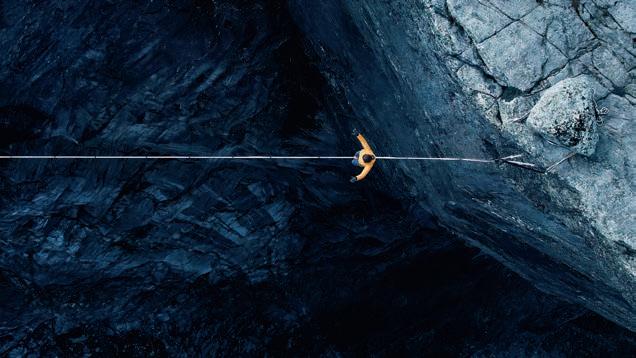
Vision Pro also advances Apple’s implementation of Spatial Audio, with two small speakers hovering above the user’s ears delivering surprisingly powerful and e ective virtualized 3D audio.
But the device weighs upwards of 600 grams (1.3 pounds) excluding its external battery pack, and that battery o ers only 2-2.5 hours of
118 DEADLINE.COM/AWARDSLINE APPLE
Lorenzo di Bonaventura
Appe Immersive Adventure


CUSTOM GAME TABLES, FURNITURE, & LIGHTING 11RAVENS.COM MADE IN LOS ANGELES 8687 MELROSE AVE B-117 WEST HOLLYWOOD, CA 90069 310-741-1681 INFO@11RAVENS.COM

semi-tethered power, meaning Vision Pro may not yet be a committed binger’s dream.
FILMMAKING
With stereoscopic cameras built into the Vision Pro, as well as the company’s latest iterations of the iPhone, the 15 Pro and 15 Pro Max, users can capture awe-inspiring 3D home videos and photographs. Enterprising lmmakers are almost certainly going to be able to capitalize on these technologies for their own storytelling, and while the videos are still framed—that is to say, they won’t give a full 360-degree virtual experience—the hologram e ect is breathtaking.
The real excitement for professionals, though, comes with Apple Immersive Video. The company has created a proprietary camera rig for capturing 180-degree 8K video content. One of the sample clips involves a train running along a snowy, mountainous track, and it seems like no accident that the sense of immediate immersion recalls the apocryphal stories of audiences running from the theater when they rst experienced the Lumière brothers’ L'arrivée d'un train en gare de La Ciotat in 1895.
The Immersive Video camera rig is an Apple exclusive at present, but from a seated position, its potential is immediate. Want to experience a play without leaving the house? Apple Vision Pro could o er the best seat available, on demand, and the stage is no longer con ned to a theater.
Many VR users report motion sickness when watching 3D immersive content that features a lot of movement. Apple has carefully curated its sample clips to keep the camera largely steady, or at least keep movement to a minimum. It will be up to lmmakers to process how to capture shots without making lms that feel like stomach-churning rollercoaster rides.
LIVE EVENTS
Apple Immersive Video’s installation at major sporting events and concerts is another tantalizing prospect. Demonstration footage of Major League Soccer games, with a 3D camera centered directly above the goalposts, goes a step beyond delivering just the best seat in the house. Indeed, watching sport from such a unique vantage point grants an entirely new perspective on the action.
Another example features a performance by Alicia Keys inside a rehearsal room. The placement of the camera once more puts viewers in the heart of the action, among Keys and her band. What if Apple Immersive Video came to the Oscars red carpet, or inside the Dolby Theatre itself? Suddenly Hollywood’s hottest ticket might not be quite as out of reach as it once was.
The real trick for Apple will be to keep the content coming, and to gure out the right ways to stream it live. With an 8K resolution at a high framerate of 60fps, and with such an expansive eld of view, compression will be a key consideration. So far, Apple has showcased only short samples of what Immersive Video can do. No current longform TV shows or movies, nor live events, are available in the format, and early adopters have been disappointed by the slow drip of new footage. Apple will need to move fast to line up examples that make good on these demos.
PRODUCTION
Perhaps the most intriguing innovation for lmmakers is less about audience delivery. As an augmented reality computing device, Vision Pro’s use on lm sets suggests exciting opportunities for all departments.
Filmmakers on YouTube have already teased Vision Pro’s monitoring
abilities. Video Village takes up valuable space on set, but Vision Pro understands where users are spatially. Cinema-sized screens monitoring camera output can be placed in any convenient spot and will stay there as users move away from them to complete other tasks.
Imagine a costume department in which reference images and videos are pinned to the walls behind designers, from which to readily refer as they work. A workspace designed for script supervisors to keep logs with little more than a chair to work from. Focus pullers may no longer require small reference monitors to keep shots sharp. The use-cases are multitudinous.
Filmmaking is a collaborative medium, and Vision Pro’s front-facing lenticular screen, which give a virtualized image of the user’s eye movements from the front of the headset, means the device doesn’t necessarily have to be removed for conversations to continue unhindered. The e ect is not quite as pronounced as it appeared in Apple’s early teaser videos, with the device’s re ective front face making it more subtle than the company might have hoped, but it is a clever idea set for future enhancement.
Battery life will also hinder potential set usage, especially in remote locations. But might a cache of backup batteries take up less space on an equipment truck than the many monitors, laptops, and other devices currently essential on a lm set?
Apple’s gamble with Vision Pro is bold: to carve a new niche for a technology that had all the hallmarks of approaching obsolescence, like 3D cinema before it, when Apple rst announced it. Despite a handful of promising implementations of VR and AR, Mark Zuckerberg’s vision of a future inside the metaverse still feels more meme than meaningful, and even Vision Pro’s heavyweight form, beautiful as it is to look at, struggles to overcome the fatigue of extended operation of a headset.
But the rst iPhone launched in 2007 with 2G internet and no App Store; only the suite of applications Apple had designed for it. By the time its successor arrived 18 months later, that had all changed, and the smartphone era truly began. Those tech reviewers are right to imagine a fruitful second or third iteration on this concept. And if any company can sink the dollars necessary into slimming down the device and its price, it is Apple. Its success, though, will rely on third parties; lmmakers and users willing to embrace its potential. Just as cinema was de ned as much by its practitioners as it was by those that developed its technology, so will the wider industry and audiences be the ones charged with establishing the language of this new paradigm.
Apple Vision Pro does feel like the rst device of its kind to make that journey truly worthwhile. Competitors will doubtless spring up to emulate some of this innovation now that Vision Pro is in the wild, but even at a price point nearer $500, its rivals have struggled to overcome the gimmicky nature of VR, and paucity of truly revolutionary content, to muster large sales volumes. Vision Pro is certainly more impressive than its rivals technologically. Only time will tell if Apple’s high-priced dice-roll will truly ignite the future of a new artistic medium. ★

120 DEADLINE.COM/AWARDSLINE APPLE
Lorenzo di Bonaventura
Prehistoric Planet
Profle view of Apple Vision Pro.

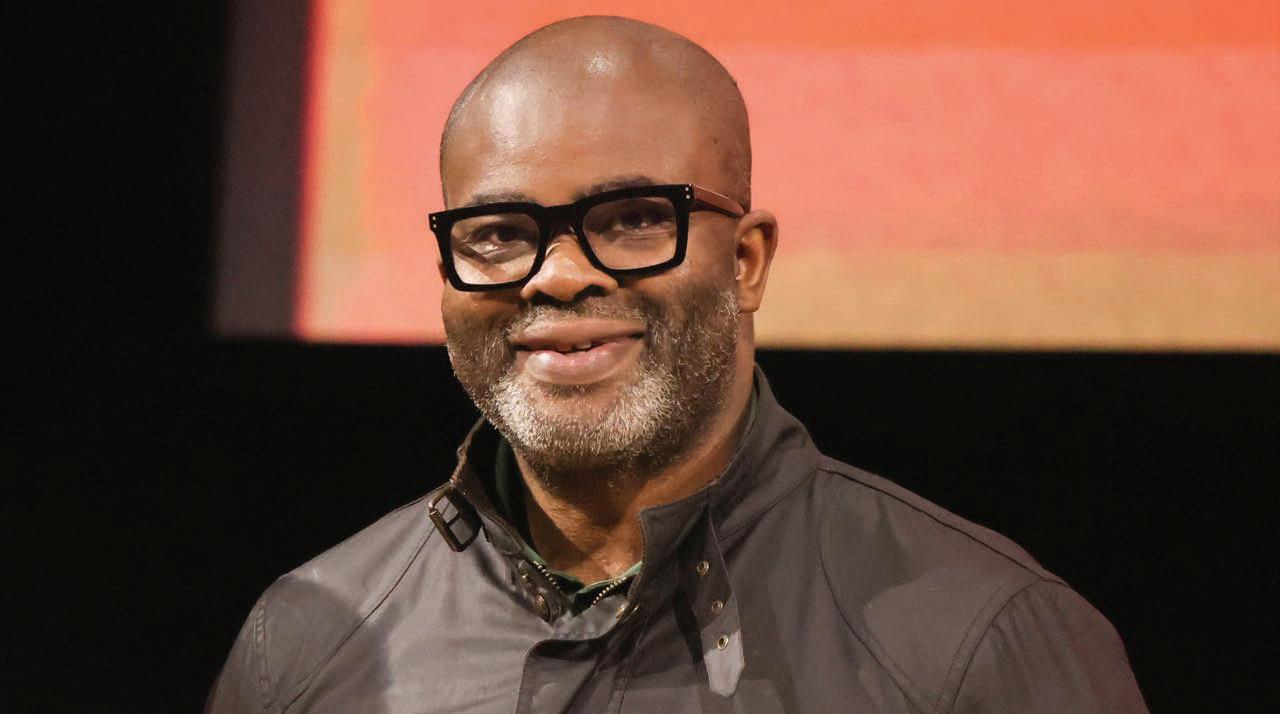
MISAN HARRIMAN
THE PHOTOGRAPHER, CHAIR OF THE SOUTHBANK CENTRE AND NEWLY MINTED OSCAR NOMINEE ONLY PICKED UP A CAMERA FOR THE FIRST TIME SIX YEARS AGO. WHAT’S NEXT?
BY JOE UTICHI
Surreal. That’s how Misan Harriman describes his rst time at the Academy Awards earlier this year. Six years before, his wife had bought him a Fuji lm X100 for his 40th birthday and encouraged him to start taking pictures with it. Then there he was, surrounded by the global industry’s most overachieving, himself an Oscarnominated director.
He had always loved lm, having been raised on ’80s and ’90s cinema like The Lost Boys, Big Trouble in Little China and Stand By Me He describes Home Alone, of all
things, as “more than entertainment for troubled kids like me,” and will share his connection to the classic movie’s study of “trauma response” and the way it, and lms like it, saved him. Born in Nigeria in 1977, Harriman was the only Black kid at his British boarding school. “With my kind of neurodiversity, I’m not supposed to be good at anything,” he says. “I failed every exam I took, dropped out of school, university, all that.”
Cinema quickly became his way of connecting to the world. He was obsessed with the cinematography of Stanley Kubrick’s Barry

Lyndon, to the point of delivering a school presentation on its use of light when he was nine years old. “I became a cinephile without even really realizing it. And I guess it was because I was looking for the meaning behind all of the things that confused me about life. I found the answers in lm.”
So, why did it take him so long to think it was something he might be able to do for a living? “Self-doubt and self-love are bedfellows,” he says. “I met a woman that fell in love with the parts of myself I was ashamed of and saw the boy in me that saw the world with wonder.
She was the one who said, ‘That boy needs to express his point of view.’ I needed someone to love me a little bit to lead me to this journey.”
The camera was a little digital, xed-lens gem that is still beloved among photographers for its similarity to lm. Harriman turned to YouTube to gure out how to use it, seeking out content creators with small subscriber bases like Mattias Burling, whose passion is buying secondhand cameras and guring out their quirks. “There’s always a middle-aged man or woman in their garage explaining to you how things work,” Harriman says.
122 DEADLINE.COM/AWARDSLINE RODIN ECKENROTH/GETTY IMAGES/MISAN HARRIMAN

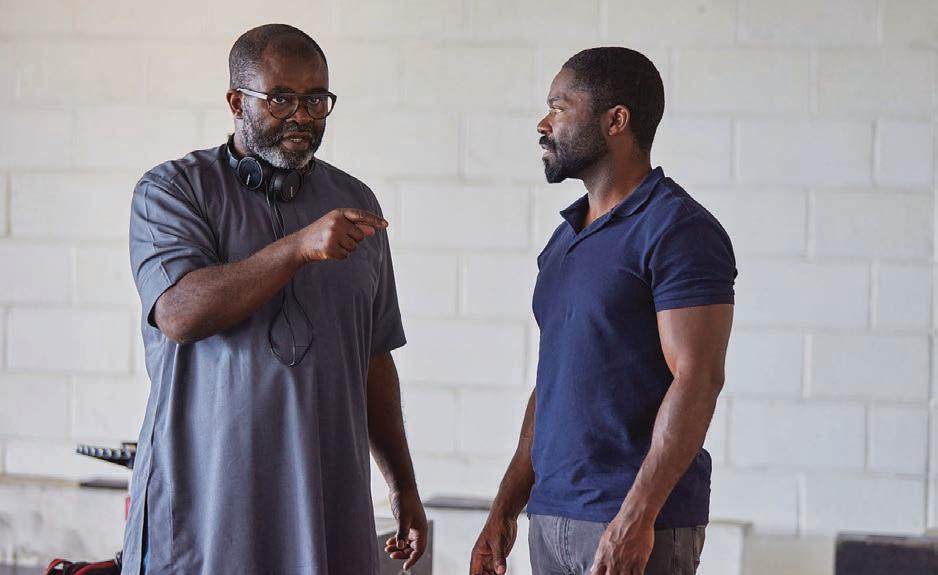
“You feel you can fail without fear of judgement. The top guys [on YouTube] make you feel insecure. They’re like jumping out of helicopters in Antarctica. But the smaller ones, they’re learning too, and they’re much more passionate about shooting than they are about being content producers.”
And so, he went out and started shooting. “Fail, fail, fail, fail, and then fail again. I just kept tweaking my failures with help from my YouTube friends.”
Harriman’s work to this day is as focused on capturing everyday life as it was at the beginning. He would hit the streets of London and observe. Find slices of life in every frame he took. He took a trip to Rajasthan in India, “the most beautiful place in the world,” and aimed his lens at unusual things. “The photos were shit,” he laughs. “But I cherish those images as much as I do all these iconic shots people keep telling me I’ve taken, because they remind me that little failures can become big wins.”
The watershed moment for him came when Covid happened. 99% of his images, he estimates, he has taken since 2020. “It’s crazy, because it really wasn’t that long ago when you think about it.” He had been uploading his favorite shots to a little Instagram account he had maintained, but he never really saw a following.
When George Floyd was killed in May of that year, and the Black
Lives Matter movement led to global protests, the activist in Harriman was compelled to capture them. He went back out onto the streets of London to shoot a series of images of the protests and uploaded them to his Instagram account. Martin Luther King III came across them and reposted, leading to more reposts from a slew of celebrities. “I don’t think any of them knew they’d been taken in London,” Harriman says.
It could be suggested that his viral
my life,” Harriman says. “It’s been a wild journey since then.”
There isn’t a celebrity now who wouldn’t want Harriman to take their portrait, and he’s photographed many, including Angelina Jolie, Danielle Brooks, Salma Hayek Pinault, Spike Lee and Harrison Ford. On our next pages, he will share some of his favorite work, which includes shots of Liam Neeson and Kate Winslet. But, for Harriman, it is his work on activism that resonates strongest.
“I HOPE MY CHILDREN WILL SAY OF ME, ‘MY DADDY CARED ENOUGH NOT TO LOOK AWAY.’”
success was luck, but Harriman’s images captured the protests in a way that resonated precisely because he felt as passionately about the movement as the protesters did. He found stories he could tell within single frames because he understood those stories. By the time the then-editor of British Vogue, Edward Enninful, chose to use the magazine’s landmark September issue to celebrate activism, Harriman had become the only choice to photograph cover stars like Marcus Rashford and Adwoa Aboah. It made him the rst Black person in the 104-year history of the magazine to shoot the cover of the September issue.
“That’s how ipping, utterly crazy is
thanks to the platform the streamer o ered him. This move into the moving image feels inevitable when Harriman details his connection to cinema, and while he fully intends to move into features by telling the kinds of popular stories he grew up on, he is also fully invested in nding similar meaning in everything he does.
“I’m a big zombie guy,” he says, out of left eld. “I was desperate to get the rights to [an Englishlanguage remake of] Train to Busan, but I was too late. But with all great zombie lms, the monsters are never the zombies. I’m developing a vampire story right now, because I love the idea of immortality and the eeting nature of love.” We’re drawn to these stories because they’re entertaining, but Harriman knows that the best of them teach us something about ourselves, too.
He is working on his rst feature, a documentary with Paramount called Protest and Progress, which will explore the ways protest movements shape social change. “It’s like a character story of my life,” he says. “In a year that there are more elections than have ever been recorded, I’m traveling the world and pointing my lens, but also listening to who we are in the year of 2024.”
“When I’m dead and buried, my civil rights work is always going to be my most cherished work,” he says. “I know I’ve photographed a lot of famous people, but that is not as important to me as being on the tip of the spear for women’s rights, children’s rights, the queer and trans communities, climate change and race. If I’m hit by a car, I hope my children will say of me, ‘My daddy cared enough not to look away.’”
The short lm that brought him his rst Oscar nomination was The After, released last year by Net ix and starring David Oyelowo. It was a haunting portrait of grief that, Harriman says, may now be one of the most watched shorts in history
He shot some footage at the Oscars. “There’s some really interesting clips of the epitome of celebrity culture. What’s the opposite of that kind of echo chamber of privilege that we live in? Soon after the Oscars I went down to Lampedusa, o the coast of Sicily, where you can almost see Libya from the seafront. I was there speaking to migrants, the people crossing the sea on little boats. Paramount has given us real resources to observe who we are at a time when there is so much change happening. It feels like a very important piece of witness-bearing.”
He recalls the culture shock of standing by a graveside in Lampedusa so soon after slipping o his Oscar tux. “There are a few spots in this graveyard set aside for migrants, and of course they’re all nameless because we don’t even know their names. I was struck
124 DEADLINE.COM/AWARDSLINE DOMIZIA SALUSEST
Harriman on the set of The After, with David Oyelowo.


The Actors Side • The Film That Lit My Fuse • Behind The Lens The Process • Crew Call • Production Value

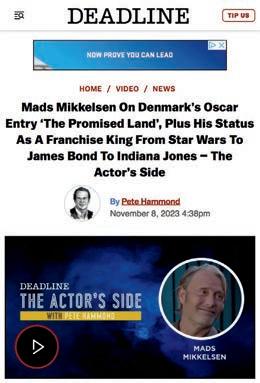


















Video Series
In-depth interviews with entertainments leading actors, directors, writers, below-the-line crew and so many more. Explore Deadline’s video series that take you behind the scenes.
DEADLINE.COM / VIDEO
that one of these graves had loads of small plastic boats left on it, to represent how many had been lost at sea. The only remembrance of them is a little tiny plastic boat. It was a real reminder of the inequality of this existence we have. That’s why I do the work.”
Harriman’s work has always been about truth, and it’s work he understands the importance of personally, having seen his own relationship with the Duke and Duchess of Sussex lead to baseless criticism from the British press. “I’m an honorary fellow from SOAS University of London, I have an honorary doctorate from Ravensbourne University. I’m the chair of Europe’s largest art center, the Southbank Centre, and now an NAACP winner and an Oscar nominee,” he notes. “And I was described by a leading newspaper as ‘Meghan Markle’s Snapper Pal’. That’s very much by design.”
He is determined that whatever success he achieves will be paid forward to marginalized voices. He is wary of what he calls “performative allyship”, in which institutions shore up their diversity requirements to avoid criticism rather than action real change. “As I get more agency, and a bigger platform, I will lift up as many voices who are being ignored for whatever reason as I can,” he says. “Not because it’s my job to, but I always will. As you climb, you lift. Always.”
His ultimate ambition? “To be one of the great lmmakers of my time,” he says, “or at least strive to be. I feel like I know what I could bring to this industry, and I want to spend the next 25 years trying to do it.
“I could fail miserably,” he adds, echoing the humble early days of his move into photography. “But I am de nitely going to try.” ★

MISAN HARRIMAN'S FAVORITE SHOTS
THE PHOTOGRAPHER WALKS US THROUGH HIS BEST FRAMES
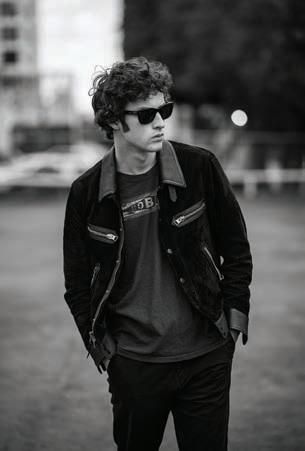
1. “Dominic Sessa and I had a really good chat, walking around LA. When you meet an actor at a very specifc stage in their life, where so much is about to happen and he’s going to have an incredible career, it’s very special. His performance in The Holdovers was one of the best of last year and he’s so humble and intelligent. I feel he looks like the movie star he will soon become in this image.”
2. “This image of [U.K. politician] Diane Abbott is a really important one for me personally. I’ve grown up with her and seen her go through hell. When I got the gig to shoot her, I felt it would be my responsibility to photograph her as I’ve always seen her, to give her the grace and dignity she deserves. I feel this image shows her perseverance and fortitude and the giant fgure she is in U.K. politics.”
3. “I had a moment under the Tuscan sun with Liam Neeson, where he was basking and I was there to observe his truth. It’s an image I really cherish, because I took it in my earliest days of photography, back in 2019.”
4. “I shot Mads Mikkelsen in Cannes last summer, for Indiana Jones. Every time I look at this picture, I know he’s played Le Chiffre and been a baddie in James Bond, but to me he looks like Bond himself. I know it can never be, but what a Bond he would have made. You cannot take a bad picture of Mads.”
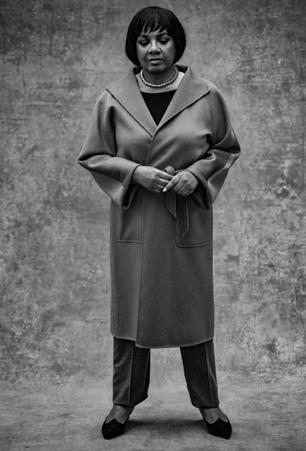

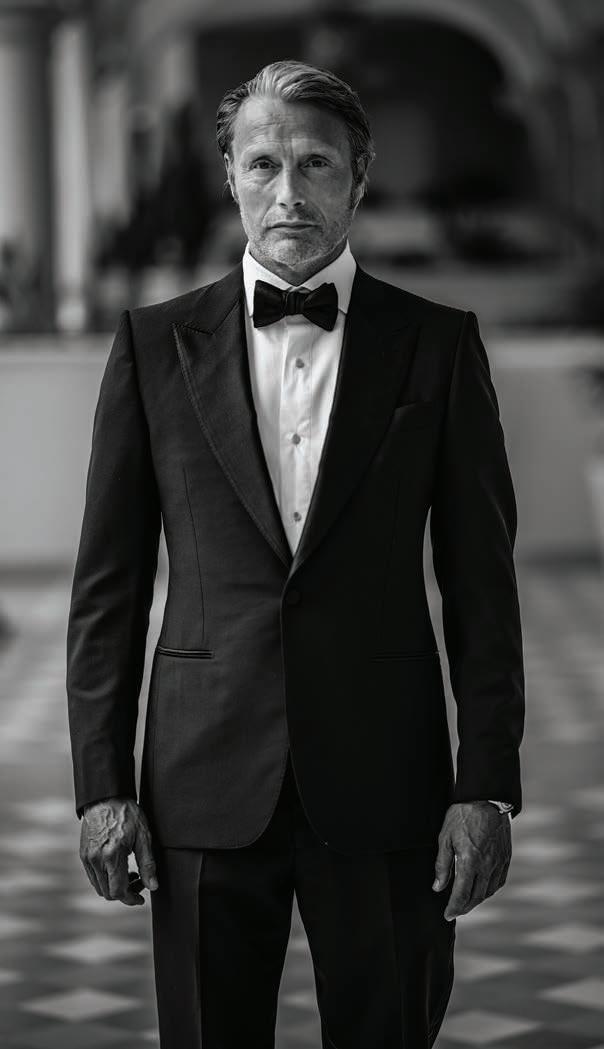
GILBERT FLORES/GETTY IMAGES/MISAN HARRIMAN
1 2 3 4
Misan Harriman


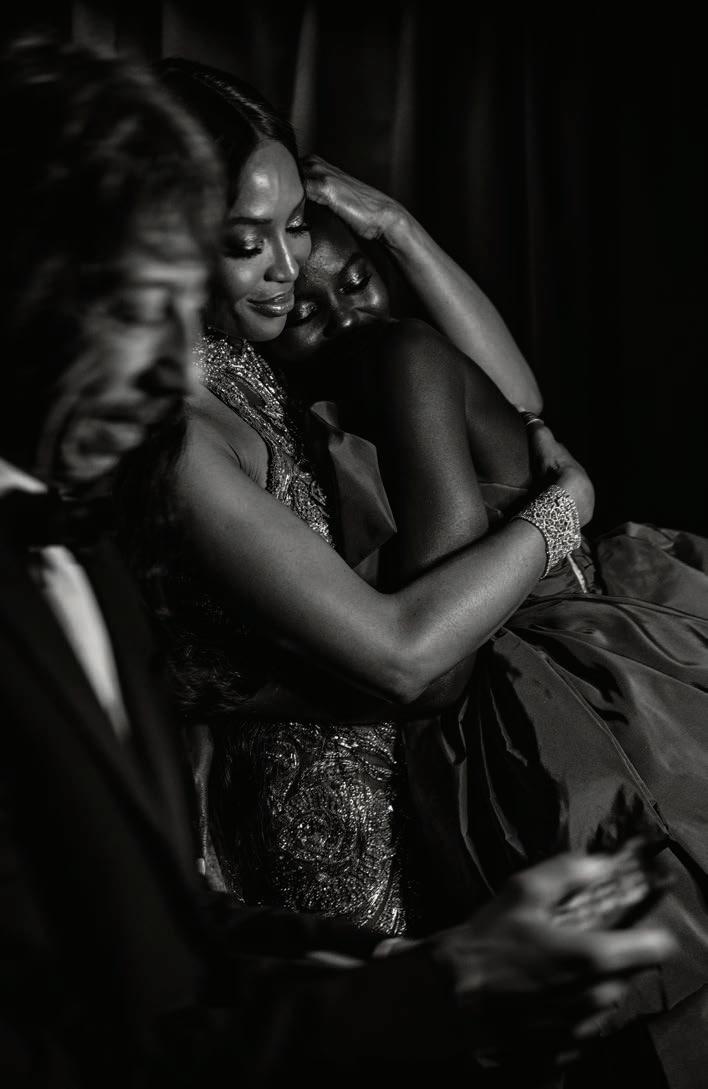
5. “I don’t know them, but I presume these two are siblings. She grabbed her little brother and she saw me and just posed. So, I did what photographers do and I observed this moment. This image to me feels like an ode to Sally Mann, and it’s one of my earlier images from 2019.”
6. “This image is euphoria. I took this in July 2019, so it was the last summer before the world changed forever. It’s an observation of youth. I love the purity of the euphoria of these young women having fun at a festival in London before Covid changed everything.”
7. “I call this image ‘The Unspoken Bond’. This is backstage at the Royal Albert Hall in December 2019. Adut Akech had just won Model of the Year at The Fashion Awards, and her hero is Naomi Campbell. They saw each other, and Adut just fell into Naomi’s arms. Compositionally, it’s broken by the legendary Pier Paolo Piccioli, the former head of the Valentino fashion house, who’s walking past on his mobile. I think it really makes the frame and emphasizes the stillness of these two women in an embrace that feels so beautiful.”
8. “Kate Winslet on the beach, as that late sun and its fading light is kissing her skin. I’ve said before that it feels like the sun and Kate are old friends. She’s one of the most extraordinary subjects I’ve ever photographed, and I cherish the images I took of her.”
8

DEADLINE.COM/AWARDSLINE 127 5 7 6
Studio at Prime Experience April 28 and April 30, 2024
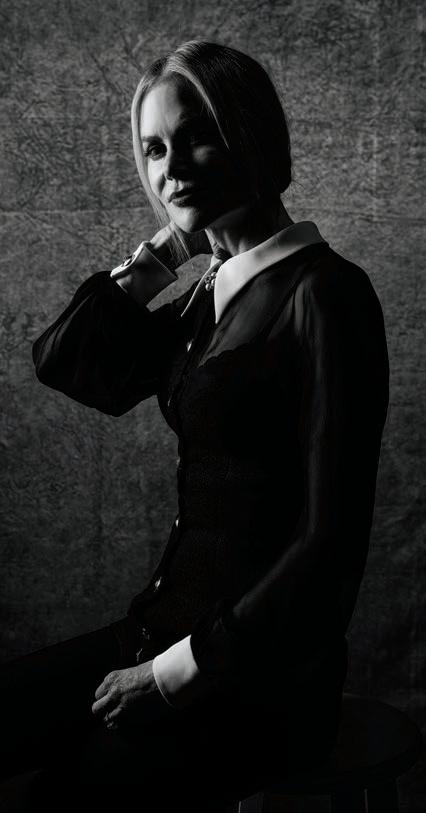



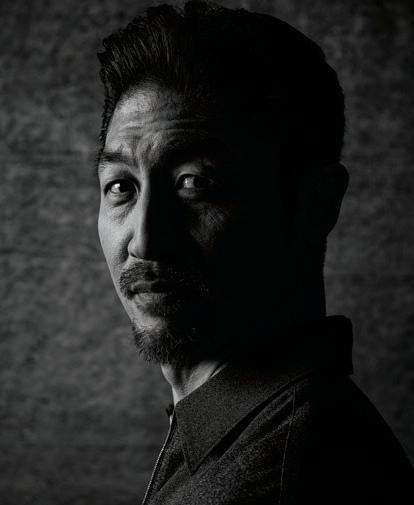



128 DEADLINE.COM/AWARDSLINE
PARTNER CONTENT
MICHAEL BUCKNER FOR DEADLINE
Deadline
Nya Studios, Los Angeles
1. Lulu Wang
2. Brian Tee
3. Nicole Kidman
4. Sarayu Blue
5. Daniel Henney and Rosemund Pike
6. Jack Huston
7. Rafe Judkins
2 1 4 5 8 3 7 6
8. Ji-young Yoo
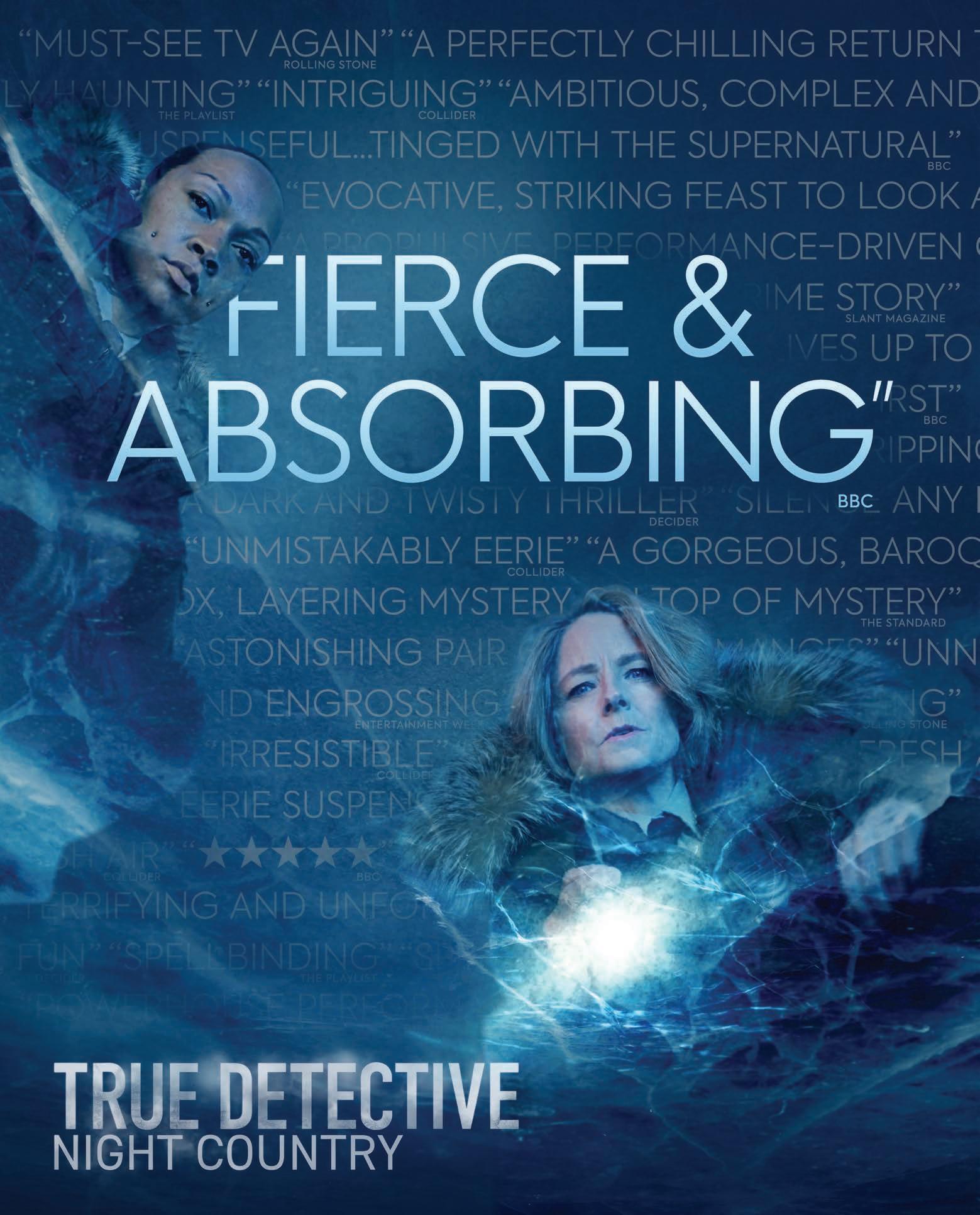
































































































































































































 BY MIKE FLEMING JR.
BY MIKE FLEMING JR.












































































 By ANTONIA BLYTH Photography By JOSH TELLES
By ANTONIA BLYTH Photography By JOSH TELLES

 Aubrey Plaza photographed at Jack Studios in New York City.
Styling by Jessica Paster. Loewe skirt and sweater, Wolford tights and Jimmy Choo shoes. Jewlery by EF collection.
Aubrey Plaza photographed at Jack Studios in New York City.
Styling by Jessica Paster. Loewe skirt and sweater, Wolford tights and Jimmy Choo shoes. Jewlery by EF collection.











































































 SAG-AFTRA Strike
SAG-AFTRA Strike


































































































































